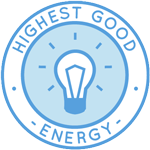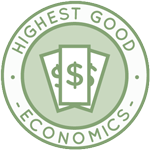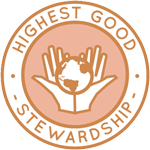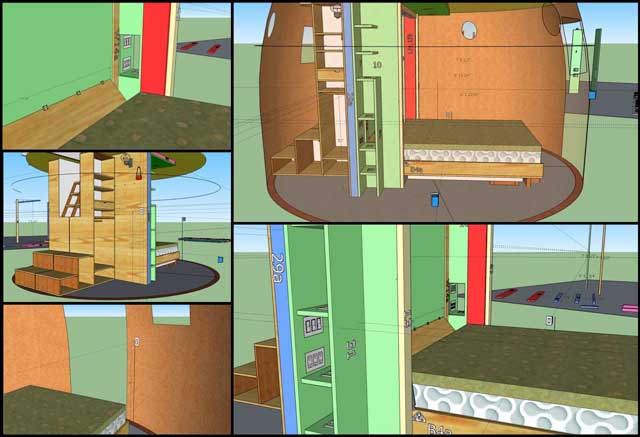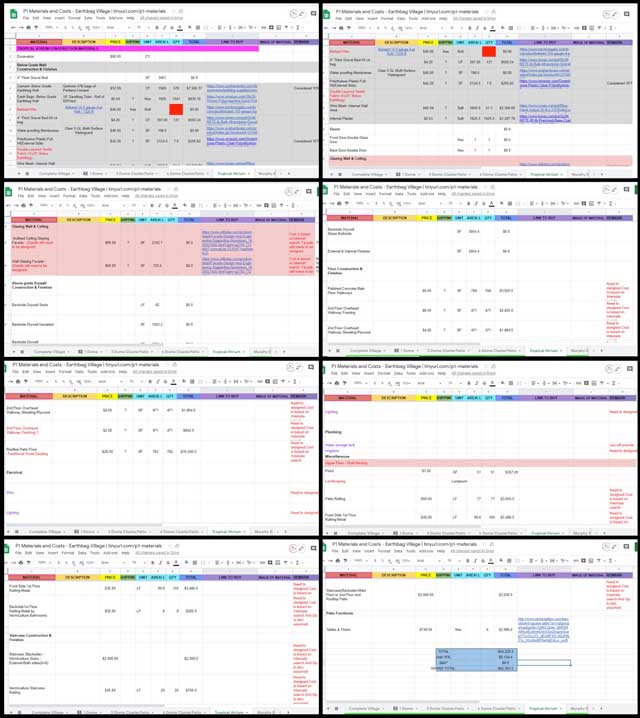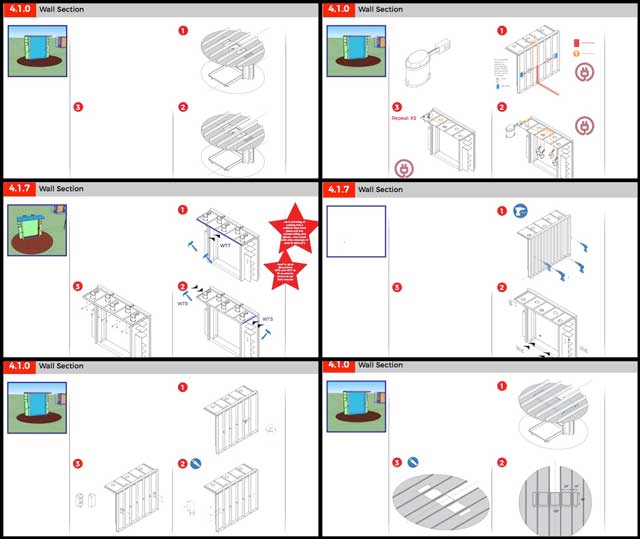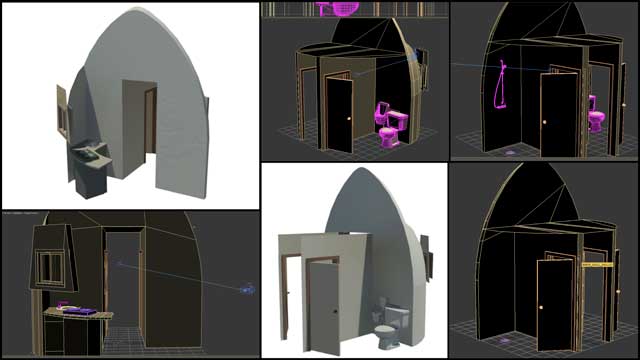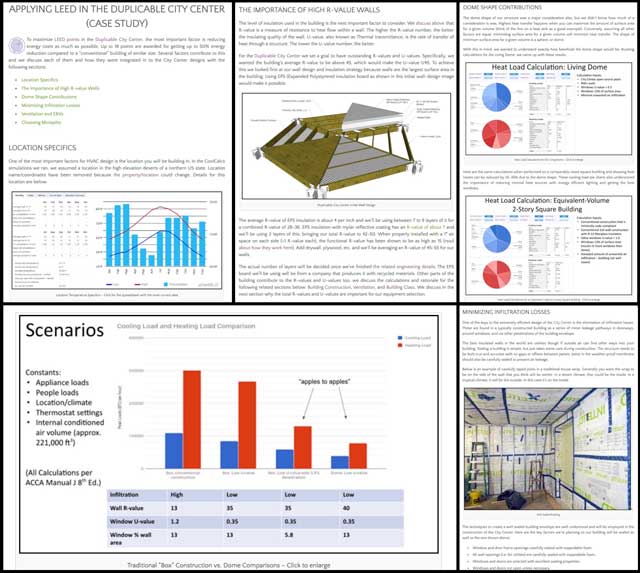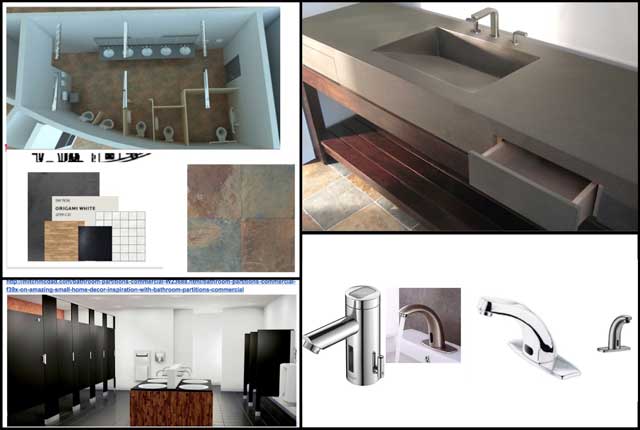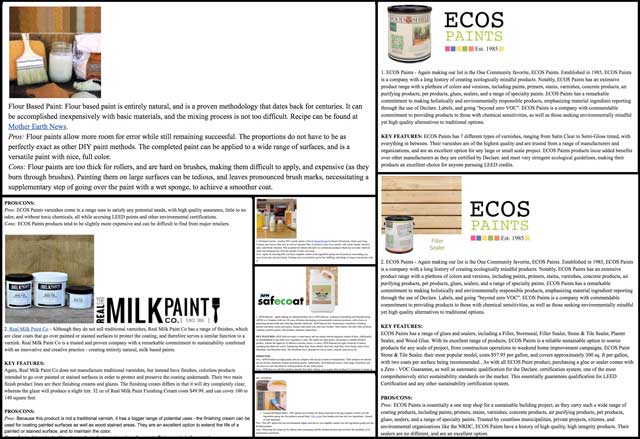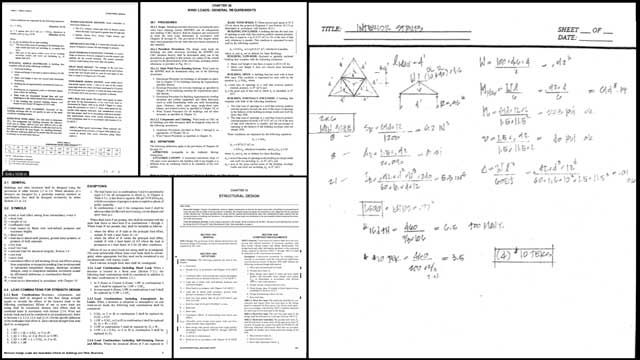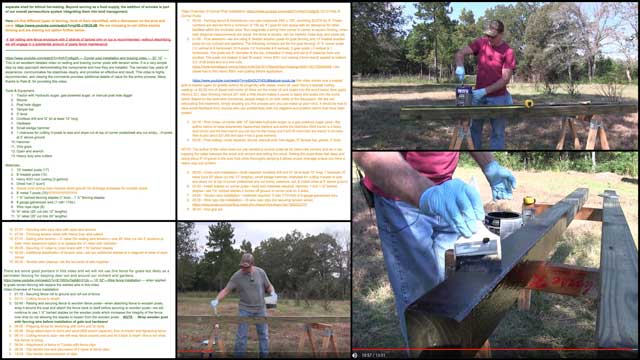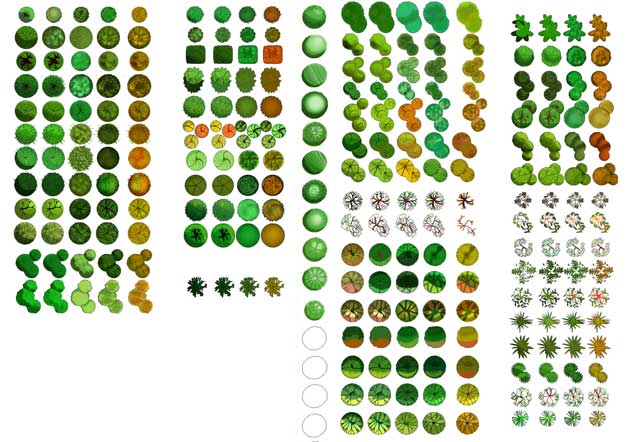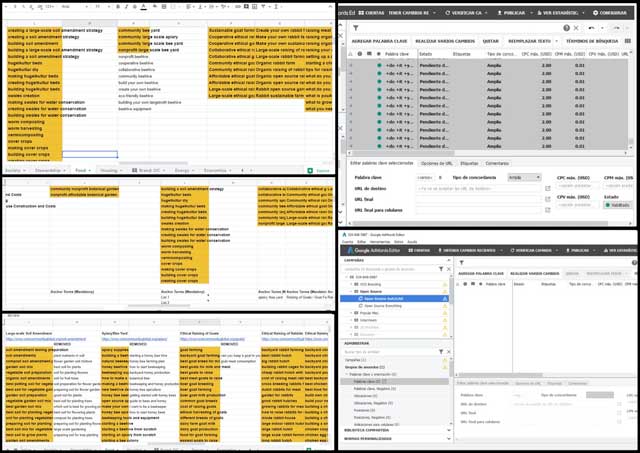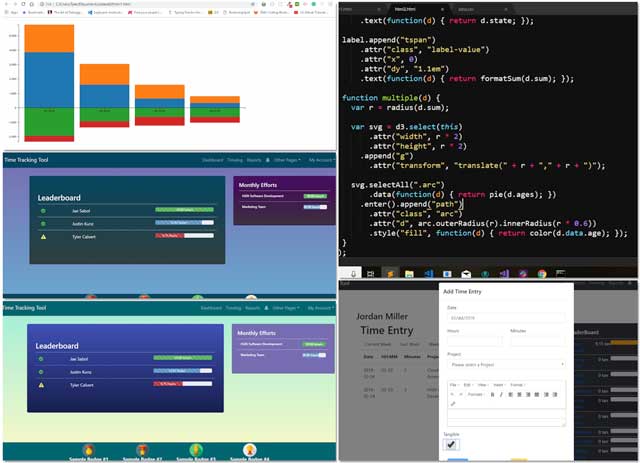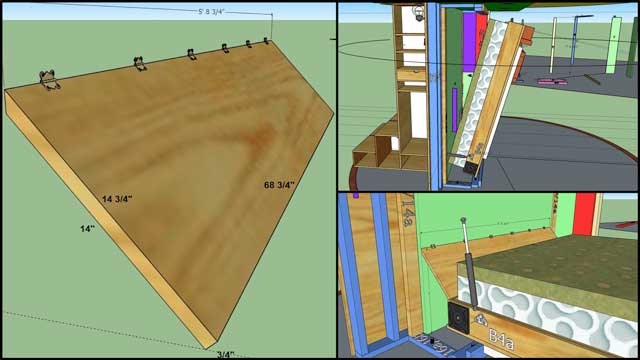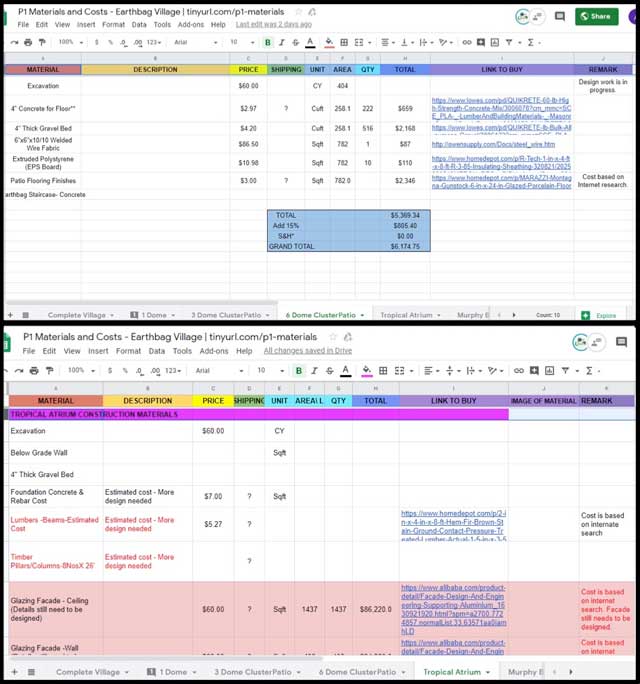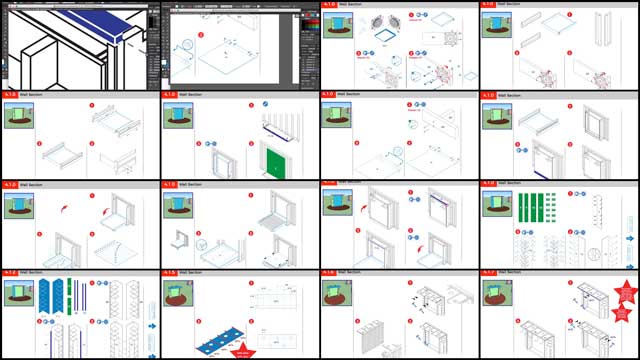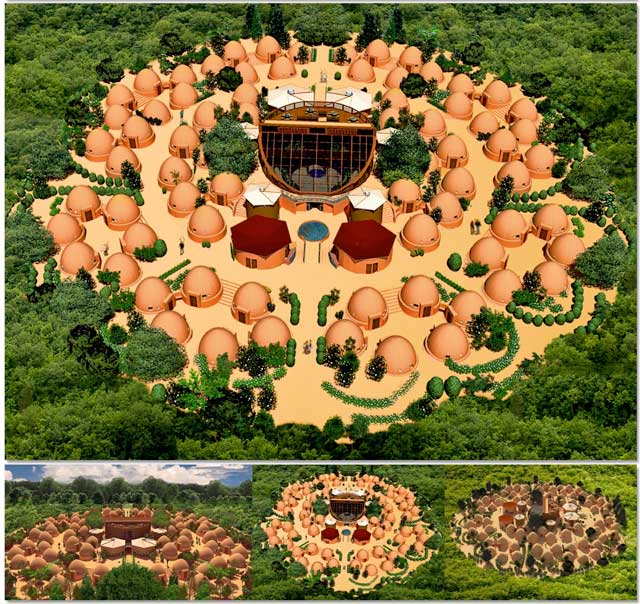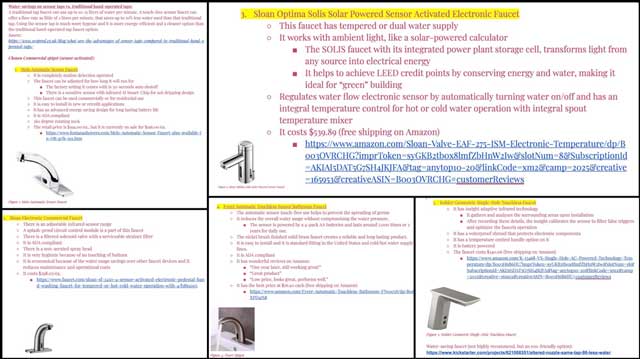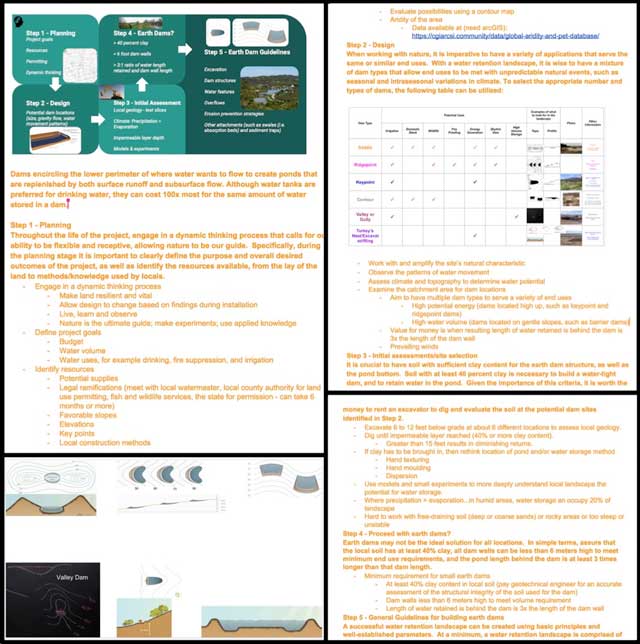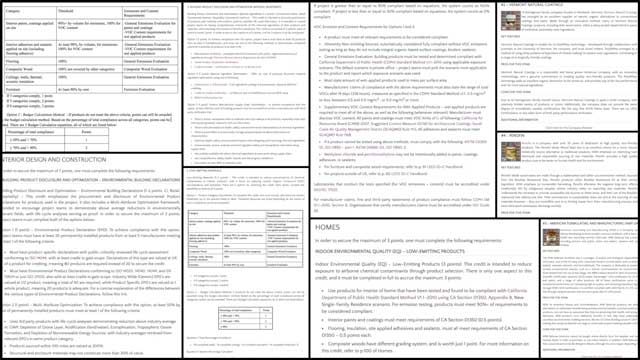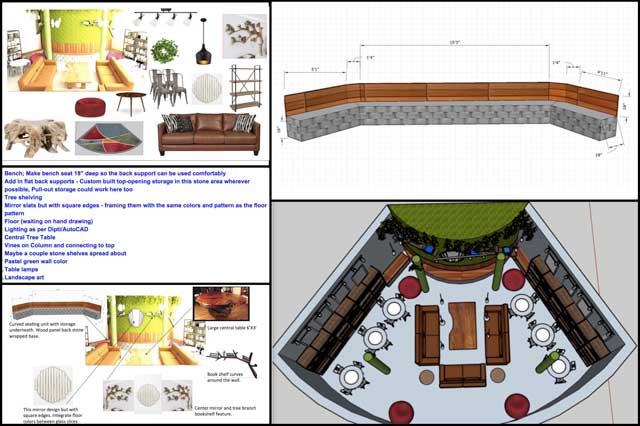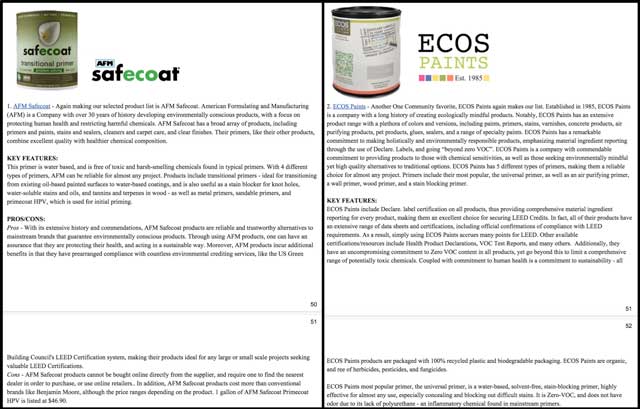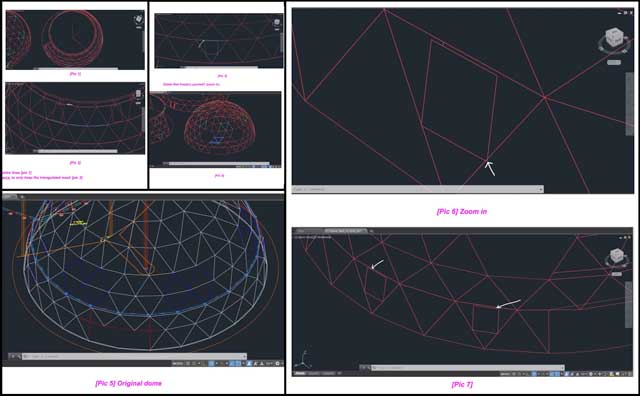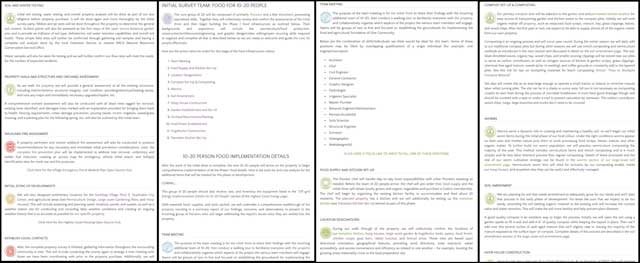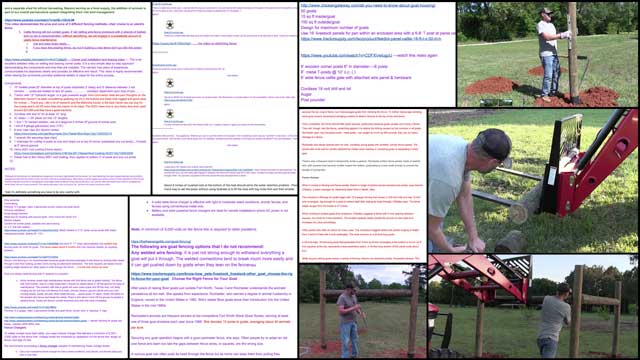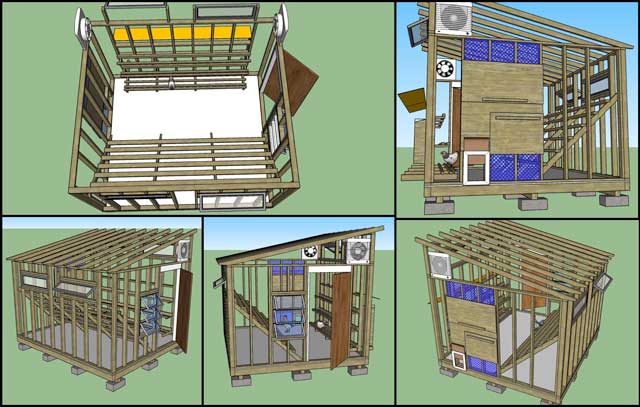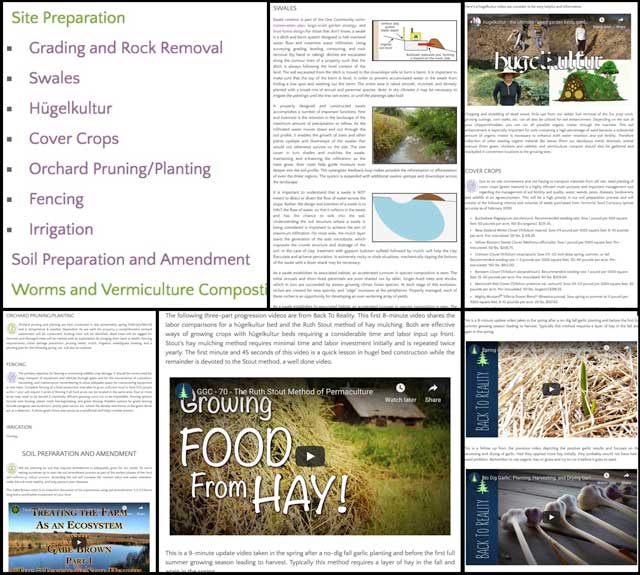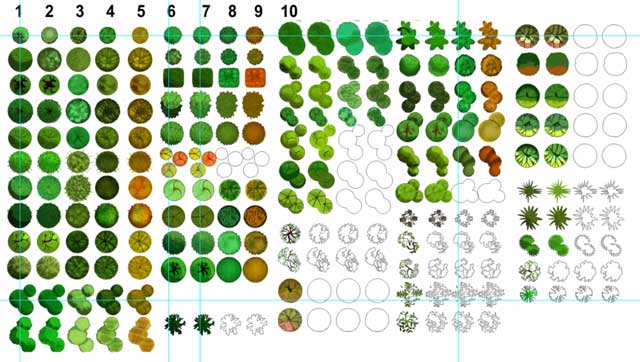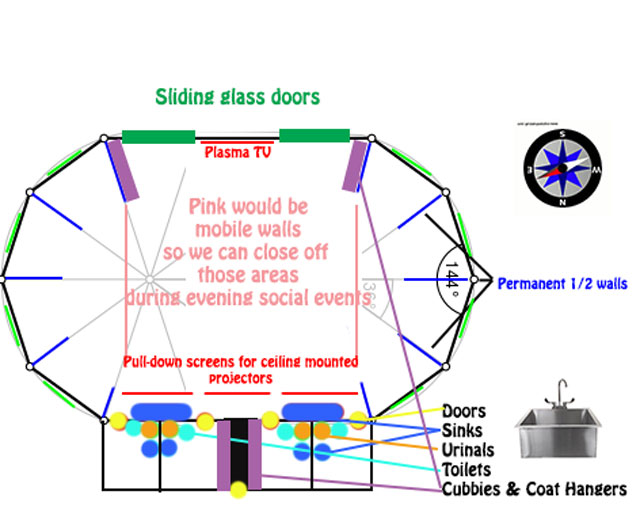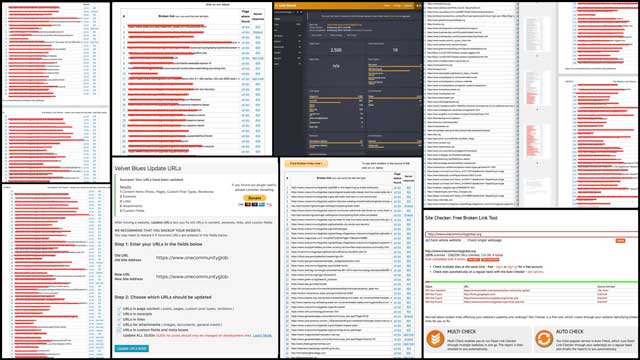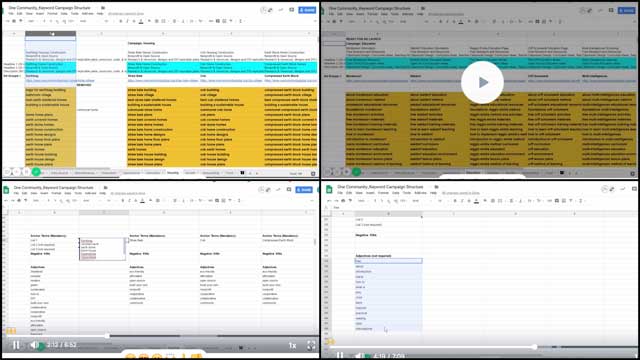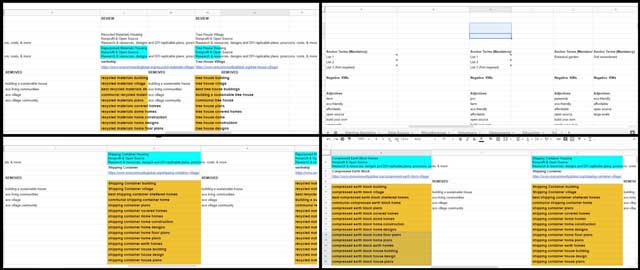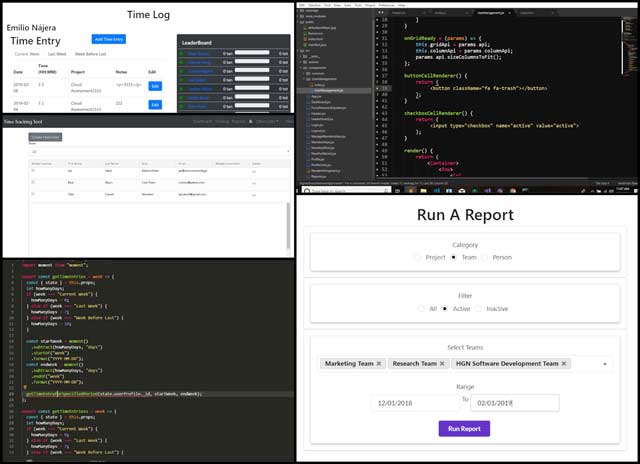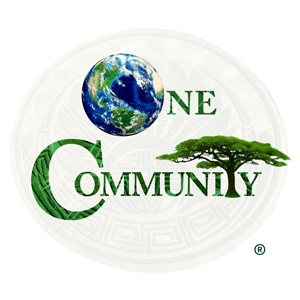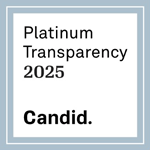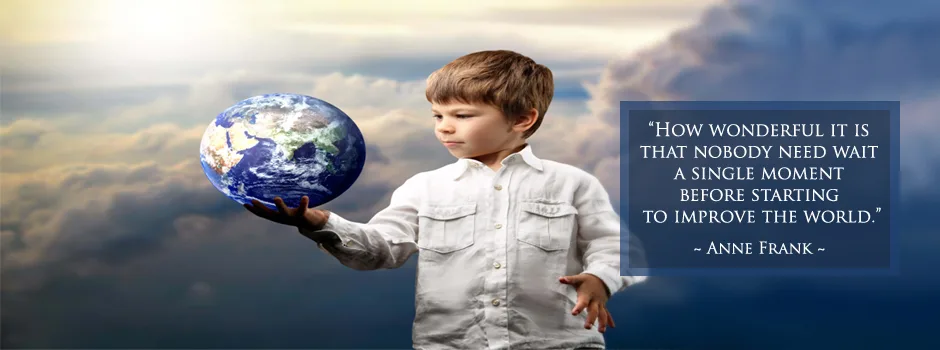
Supporting Sustainable Citizenship – One Community Weekly Progress Update #315
Posted on April 7, 2019 by One Community
Imagine a world of people consciously and conscientiously stewarding their environments for the The Highest Good of all people and life on it. One Community is supporting sustainable citizenship like this through open source and free-shared DIY teacher/demonstration hubs that develop, build and share what is needed to make this possible. This includes sustainable approaches to food, energy, housing, education, for-profit and non-profit economic design, social architecture, fulfilled living, global stewardship practices, and more.
- Here’s our project overview
- Here’s our world-change methodology
- Here’s how this becomes self-replicating
- Here’s how we are open source and free-sharing all the do-it-yourself designs

OUR MAIN OPEN SOURCE HUBS
Click on each icon to be taken to the corresponding Highest Good hub page.
One Community’s physical location will forward this supporting sustainable citizenship movement as the first of many self-replicating teacher/demonstration communities, villages, and cities to be built around the world. This is the April 7th, 2019 edition (#315) of our weekly progress update detailing our team’s development and accomplishments:
Supporting Sustainable Citizenship
One Community Progress Update #315
Here is the bullet-point list of this last week’s design and progress discussed in detail in the video above:
SUPPORTING SUSTAINABLE CITIZENSHIP INTRO: @0:34
SUPPORTING SUSTAINABLE CITIZENSHIP – HIGHEST GOOD HOUSING: @7:12
- Finished developing the best, safest, and most sustainable paints, primers, stains, and sealers page (see below)
- Dan Alleck completed his 42nd week helping with Earthbag Village render additions; finishing work on Earthbag Village 6-dome cluster (see below)
- Shadi Kennedy completed his 45th week leading the development of the Murphy bed instructions; drawing parts to match all the pre-made components needing to be purchased (see below)
- Hemanth Kotaru completed his 32nd week helping with the structural engineering research and calculations for the Earthbag Village (see below)
- Elizabeth Kahn finished final formatting and organization for faucets section of the upcoming most sustainable faucet options page (see below)
SUPPORTING SUSTAINABLE CITIZENSHIP – DUPLICABLE CITY CENTER: @8:59
- Continued the process of 3D modeling the new Duplicable City Center interior design details for the library (see below)
- Continued adding content to the City Center open source HVAC design tutorial; finishing first half of the “Maximizing LEED Points In The City Center Point-by-point” section (see below)
- Anvita Kumari Pandey continued helping with the Duplicable City Center Costs; researching overhead lighting options and began updating paint, primer, and sealer costs (see below)
- Tanya Griffin, Aubryanne Boyle, and Allie Marsh completed their 15th week helping with the Duplicable City Center interior design details (see below)
- James Herrigel continued with 17th week of research; working on Most Sustainable Adhesives page (see below)
- Sneha Dongre continued with 8th week helping with the Duplicable City Center structural details (see below)
SUPPORTING SUSTAINABLE CITIZENSHIP – HIGHEST GOOD FOOD: @10:55
- Continued writing the behind-the-scenes narrative and detailed food rollout plan for the various stages of development (see below)
- Continued research and 3D design of the chicken coops needed for 100 chicks (see below)
- Guy Grossfeld completed his 13th week working on creating an open source icon and symbol set for our permaculture designs (see below)
SUPPORTING SUSTAINABLE CITIZENSHIP – HIGHEST GOOD EDUCATION: @12:00
- With over 8 years of development invested in the Education for Life component, this part of One Community is now complete enough to no longer focus and report on it with weekly updates. That is, of course, until we move onto the property and continue the development and open sourcing process with teachers and students. Visit the Education section below for links to all the completed elements of this component and details on the final remaining action items for this area of One Community before moving onto the property and fully launching it.
SUPPORTING SUSTAINABLE CITIZENSHIP – HIGHEST GOOD SOCIETY: @13:04
- Emilio Nájera continued with his 26th week as part of the marketing team; creating campaigns for Mechanical Engineer, Video Designer, Software Engineer, General Contractor, and Surveyor help (see below)
SUPPORTING SUSTAINABLE CITIZENSHIP SUMMARY: @13:42
- How you can most help us right now and how anyone can help
CLICK HERE IF YOU’D LIKE TO RECEIVE AN EMAIL EACH WEEK WHEN WE RELEASE A NEW UPDATE
YOU CAN ALSO JOIN US THROUGH SOCIAL MEDIA
ONE COMMUNITY WEEKLY UPDATE DETAILS
HIGHEST GOOD HOUSING PROGRESS
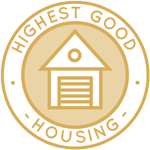 One Community is supporting sustainable citizenship through Highest Good housing that is artistic and beautiful, more affordable, more space efficient, lasts longer, DIY buildable, and constructed with healthy and sustainable materials:
One Community is supporting sustainable citizenship through Highest Good housing that is artistic and beautiful, more affordable, more space efficient, lasts longer, DIY buildable, and constructed with healthy and sustainable materials:
- Learn about: Our Upcoming Crowdfunding Campaign
- Learn about the different village models: 7 Sustainable Village Models
- Visit the open source portals for the first two: Earthbag Village OS Hub | Straw Bale Village OS Hub
This week the core team finished developing the best, safest, and most sustainable paints, primers, stains, and sealers page, in favor of supporting sustainable citizenship. This included creating all the sections shown here, final proofreading and edits, sharing it through all our social media networks, and adding it to our open source annual social media strategy.

Finished Developing the Best, Safest, and Most Sustainable Paints, Primers, Stains, and Sealers Page
Dan Alleck (Designer and Illustrator) completed his 42nd week helping with Earthbag Village render additions. This week he finished work on this view of an Earthbag Village 6-dome cluster by fixing final render errors and replacing all the bushes.

Fixed Final Render Errors and Replaced All Bushes in Earthbag Village 6-dome Cluster – Click for Page
Shadi Kennedy (Artist and Graphic Designer) also completed his 45th week leading the development of the Murphy bed instructions, contributing to supporting sustainable citizenship. This week’s focus was drawing parts to match all the pre-made components needing to be purchased and starting to outline the pages that will describe them in all the different languages. You can see some of this work-in-progress here.
Hemanth Kotaru (Structural Engineer) completed his 32nd week helping with the structural engineering research and calculations for the Earthbag Village (Pod 1), in pursuit of supporting sustainable citizenship. This week he wrote version 1 of the tutorial for the nail and rebar selection and spacing tool he developed. You can see some of this work-in-progress here.
And Elizabeth Kahn (Environmental Consultant) completed her 12th week as a researcher with our team. This week she finished final formatting and organization for the faucets section of the upcoming most sustainable faucet options page and researched the Altered water-saving nozzle addition. You can see some of this work here.
DUPLICABLE CITY CENTER PROGRESS
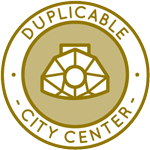 One Community is supporting sustainable citizenship through a Duplicable and Sustainable City Center that is LEED Platinum certified/Sustainable, can feed 200 people at a time, provide laundry for over 300 people, is beautiful, spacious, and saves resources, money, and space:
One Community is supporting sustainable citizenship through a Duplicable and Sustainable City Center that is LEED Platinum certified/Sustainable, can feed 200 people at a time, provide laundry for over 300 people, is beautiful, spacious, and saves resources, money, and space:
- Learn about this building and it’s function: Duplicable City Center Open Source Hub
This week, the core team continued the process of 3D modeling the new Duplicable City Center interior design details for the library, dedicated to supporting sustainable citizenship. This week we researched fire code requirements for the hallways, changed the color of the beanbags and moved them to the corners, and set up table lights, pendent lights, and some of the recessed ceiling lights.

Continued Modeling the New Duplicable City Center Interior Design Details for Library ” Click to Visit
The core team also continued adding content to the City Center open source HVAC design tutorial, supporting sustainable citizenship. This week we finished the first half of the “Maximizing LEED Points In The City Center Point-by-point” section by finishing the research and creating all the content shown here.
Anvita Kumari Pandey (Civil Engineer) continued helping with the Duplicable City Center Costs, in favor of supporting sustainable citizenship. This week she researched overhead lighting options and started updating the paint, primer, and sealer costs. You can see some of this work here.
Tanya Griffin, Aubryanne Boyle, and Allie Marsh (Interior Designers from Lotus Designs) completed their 15th week helping with the Duplicable City Center interior design details, dedicated to supporting sustainable citizenship. This week’s focus was more product research, 3D modeling, and adding details to the Social Dome storyboards you see here.
James Herrigel (Student Researcher) also completed his 17th week researching sustainable materials. This week’s focus was researching and writing up the entire resources component, shown here, for the Most Sustainable Adhesives page.
Sneha Dongre (Structural Engineer) also continued with her 8th week helping with the Duplicable City Center structural details. This week’s focus was fixing an issue with floor heights and initial importing to ETABs so we can start running engineering calculations.
HIGHEST GOOD FOOD PROGRESS
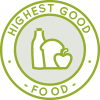 One Community is supporting sustainable citizenship through Highest Good food that is more diverse, more nutritious, locally grown and sustainable, and part of our open source botanical garden model to support and share bio-diversity:
One Community is supporting sustainable citizenship through Highest Good food that is more diverse, more nutritious, locally grown and sustainable, and part of our open source botanical garden model to support and share bio-diversity:
- Learn about the structures: Hoop House Hub | Aquapini & Walipini Open Source Hub
- See what we’ll be growing: Gardens & Hoop Houses | Large-scale Structures | Food Forest | TA
This week the core team continued writing the behind-the-scenes narrative and detailed food rollout plan. We continued researching and revising our goat care and fencing details, and finished adding narratives to the Google Doc regarding equipment and accessories for pens and feeding. You can see some of this behind-the-scenes work here.
The core team also continued research and 3D design of the chicken coops needed for 100 chicks. This week we placed the roof, designed the nesting boxes, and added the chicken ramp and the missing outside walls. You can see some of this behind-the-scenes work here.
Guy Grossfeld (Graphic Designer) also completed his 13th week working on creating an open source icon and symbol set for our permaculture designs. What you see here are the icons created so far.
HIGHEST GOOD EDUCATION PROGRESS
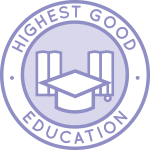 One Community is building the foundations for how humanity creates a sustainable world through Highest Good education that is for all ages, applicable in any environment, adaptable to individual needs, far exceeds traditional education standards, and more fun for both the teachers and the students. This component of One Community is about 95% complete with only the Open Source School Licensing and Ultimate Classroom construction and assembly details remaining to be finished. We’ll report on the final two elements to be finished as we develop them.
One Community is building the foundations for how humanity creates a sustainable world through Highest Good education that is for all ages, applicable in any environment, adaptable to individual needs, far exceeds traditional education standards, and more fun for both the teachers and the students. This component of One Community is about 95% complete with only the Open Source School Licensing and Ultimate Classroom construction and assembly details remaining to be finished. We’ll report on the final two elements to be finished as we develop them.
With over 8 years of work invested in the process, the sections below are all complete until we move onto the property and continue the development and open sourcing process with teachers and students – a development process that is built directly into the structure of the education program and everything else we’re creating too:
- Program Overview: Education Open Source Hub
- How the components work together: How to use the Education for Life Program
- Lesson Plans for Life – Lesson Plans How-to
- Foundations of Outstanding Leaders, Teachers, and Communicators
- Curriculum for Life
- Teaching Strategies for Life
- Learning Tools and Toys for Life
- Evaluation and Evolution
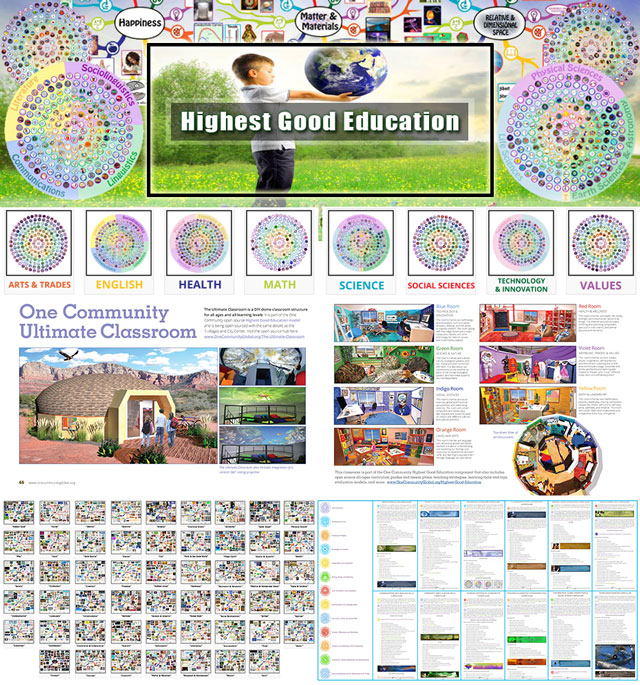
Highest Good Education: All Subjects | All Learning Levels | Any Age – Click for the open source hub
HIGHEST GOOD SOCIETY PROGRESS
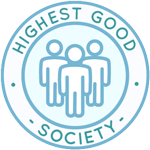 One Community is supporting sustainable citizenship through a Highest Good society approach to living that is founded on fulfilled living, the study of meeting human needs, Community, and making a difference in the world:
One Community is supporting sustainable citizenship through a Highest Good society approach to living that is founded on fulfilled living, the study of meeting human needs, Community, and making a difference in the world:
- Read the Highest Good society overview: Highest Good Society
- Learn about the model for fulfilled living and sharing: A Day in the Life
- Learn about the 4 economic models: RBE | For-profit | Non-profit | Entrepreneurship
- Learn about our open source community collaboration and management software: The Highest Good Network
Emilio Nájera (Digital Marketer) also continued with his 26th week as part of the marketing team. This week’s focus was creating the campaigns for Mechanical Engineer, Video Designer, Software Engineer, General Contractor, and Surveyor help. You can see some of this work here.
AND WE PRODUCED THIS WEEKLY UPDATES BLOG – CLICK HERE TO SUBSCRIBE
FOLLOW ONE COMMUNITY’S PROGRESS (click icons for our pages)
INVESTOR PAGES
GET INVOLVED
CONSULTANTS | WAYS ANYONE CAN HELP | MEMBERSHIP
CLICK HERE FOR ALL PAST UPDATES
WHAT ONE COMMUNITY IS CREATING
One Community is creating a place to grow together and change the world together. We are creating a space that helps each other live in integrity with each other and the planet as we strive to be the greatest versions of ourselves, committed to supporting sustainable citizenship. We do this by harmoniously respecting each other, nature, and the rest of our one shared planet.
Our goal is to demonstrate what we feel is the most sustainable, healthy, and fun environment we can create. A place based on compassion, kindness, and collaboration. This replicable community will serve as an example for what is possible in terms of supporting sustainable citizenship.
Throughout our design process we are open sourcing and free-sharing everything needed for construction and replication. This includes what we call “Highest Good” approaches to food, energy, housing, education, for-profit and non-profit economics design, social architecture, fulfilled living, stewardship practices and more, all aimed at supporting sustainable citizenship. We are creating these resources for implementation as individual components or complete developments called teacher/demonstration hubs. These hubs will help launch additional hubs as awareness and knowledge grow.
BUILDING THE FIRST OF MANY
One Community will be the first teacher/demonstration hub. It will function as an experiential-learning model that facilitates mass participation to address humanity’s most pressing challenges through: A replicable model for expansion, building seven self-sufficient village/city prototypes, becoming the world leader in open-source sustainability solutions, and evolving and expanding ALL aspects of sustainable living for the supporting sustainable citizenship.
WHY ONE COMMUNITY IS CREATING THIS
The One Community self-replicating model is capable of creating a sustainable planet within 30 years through the supporting sustainable citizenship. We will achieve this by establishing successful teacher/demonstration hubs on every continent. Villages include designs appropriate for each of the five main types of climates. They also include options for even the most challenged economies, further promoting the ideals of the supporting sustainable citizenship. These hubs will collaborate with one another, share ideas, resources, and work together as a network to heal the planet. They will also transform the global lifestyle to a more enjoyable, fulfilling, healthy, and sustainable one.
The specifics of how One Community is accomplishing this can be found on the One Community Solution Model to Create Solution-creating Models Page. Research supporting and showing the benefits of a model like this can be found on our Research and Resources Articles Archive, furthering the cause of the supporting sustainable citizenship.
Even if we don’t achieve our ultimate goal of global transformation, a self-replicating teacher/demonstration model like this will take a relatively short period of time to positively affect millions while inspiring millions more, contributing to the supporting sustainable citizenship. For One Community residents (the Pioneer Team), the idea of creating and sharing the social and recreational experience with visitors is also fun, exciting, fulfilling, and an additional reason why we are creating this.
INSPIRING SUSTAINABILITY WITH OPEN SOURCE
One Community’s four-phase strategy for the creation of solution models that create solution creating models uses open source blueprints for duplication that simultaneously address all aspects of the human experience (food, energy, housing, education, social inequality and injustice, fulfilled living, etc.). We see these areas as interdependent and requiring a comprehensive solution if humanity is to move ecologically, socially, economically, and permanently towards a truly sustainable future for everyone, ultimately aiming for supporting sustainable citizenship.
Our open source model and blueprints engage and inspire people while simultaneously making sustainable living more affordable and easy to replicate. By free-sharing the step-by-step plans people need for duplication, inviting people to participate, and demonstrating sustainable teacher/demonstration hubs as a more desirable way of living, the model will predictably expand on its own.
It is this approach we see uniting the world and leading to a new Golden Age for humanity. While we understand that not everyone believes this is even possible, we are nonetheless bringing together all those that do see this as possible as the non-profit think tank of forward-thinking individuals willing to design, build, and open source project-launch blueprint and free-share it for The Highest Good of All.
COMPREHENSIVE SOLUTION TO HUMANITY’S NEEDS
One Community is open source sharing an evolution of sustainable living that addresses the complete human experience, all in pursuit of supporting sustainable citizenship. We are doing this because we see the solutions for global food, housing, energy, education, social inequality, ethical business practices, earth regenerative practices, and a desire for a more fulfilling living experience as inseparably interconnected. As a comprehensive solution, we are addressing all these areas simultaneously and open source free-sharing everything needed for individual duplication and/or duplication as complete self-replicating teacher/demonstration communities, villages, and cities to be built around the world, all contributing to supporting sustainable citizenship.
As we address and open source share these areas we will establish a living example of the first teacher/demonstration village purposed to teach others the principles of supporting sustainable citizenship. To maximally facilitate duplication, One Community will provide seven duplicable examples and function indefinitely as a place people can visit and a non-profit and open source think tank continuing to further evolve and share solutions in all of the above areas and more. We will also provide hands-on experience and training. Most importantly, growing upon our sustainable foundation, we will endlessly make this comprehensive solution even more widely known and globally accessible, understandable and diversely duplicable, and inspiring and desirable as a model worth duplicating.
ONE COMMUNITY’S 4-PHASE STRATEGY
One Community is building solution-creating models designed to create additional solution-creating models to specifically facilitate exponential and sustainable global teacher/demonstration village growth. The following four phases of the strategy we are applying are designed to support each other and accelerate the process globally:
Phase I: Supporting Sustainable Citizenship by Demonstrating a Better Way
We are designing One Community to demonstrate an experience of living that we believe most people will consider to be better because it will be more enjoyable and fulfilling. We also think most people will consider it better because it is made possible specifically through a foundation of sustainable sustainability and a philosophy that is for The Highest Good of All.
Phase II: Supporting Sustainable Citizenship with Open Source Project-Launch Blueprinting
Everything we do we are open source project-launch blueprinting and free-sharing to make it as easy and affordable as possible to duplicate, adapt, and evolve in the manner that suits each individual and/or group’s needs. Free-sharing information like this is our aggressive-exposure engine and an aspect of One Community that will accelerate indefinitely as we continue to build our team, move onto the property, and continuously build and evolve everything that is One Community.
Phase III: Supporting Sustainable Citizenship by Inviting the World to Participate
Everything we are open source project-launch blueprinting is designed to invite the world to participate by duplicating it as either individual components or complete teacher/demonstration communities, villages, and cities that will be able to be built almost anywhere in the world. Additionally, people can join One Community as members, consultants and/or partners, or use the suggestions links on our open source project-launch blueprinting hubs to help with the design, implementation, and evolution process. Scholarships, weekend learning and work crews, and tourism will be foundations of One Community once we have sufficient infrastructure in place to support these options.
Phase IV: Supporting Sustainable Citizenship with Universal Appeal and Global Expansion
As One Community continues evolving and establishing ourselves, everything we create and promote will serve as the engine to inspire people to align with the concept of open source and sustainable living for The Highest Good of All. We are doing this to create mainstream appeal and our path to achieving this appeal is demonstrating a happier, more affordable, and ecologically friendly model of living that can be built anywhere in the world.
Open source project-launch blueprinting it all is how we believe the model will spread and, possibly most importantly, that it will predictably spread even faster in the areas where it is needed most because building restrictions, the cost of land, and materials costs are in most cases lower in these areas.
WHY OPEN SOURCE
We are creating everything One Community does as open source and free-shared blueprints because we see this as the path to a new Golden Age of creativity, innovation, cooperation, and collaboration for all of humanity. Our model is a solution model that creates additional solution creating models enabling people to live and collaborate globally for The Highest Good of All. The easier we make everything we do, the faster we see the world transitioning the faster we see the world transitioning towards supporting sustainable citizenship.
Every aspect of this model supports itself and contributes to its success, from the sustainable food, energy, and homes, to the social architecture, One Community Education Program, and open source sharing model itself. Each piece can be accessed, evolved, and even re-birthed as something completely new. It can be duplicated by itself or with other modules, with applications as diverse as the people who want and need them. The constantly expanding total model will additionally be able to be used in its entirety as the open source project-launch blueprint for a variety of duplicate teacher/demonstration communities, villages, and cities capable of being built virtually anywhere.
The most profound part is: the more we open source share, the more we help move everyone forward, the more people know about what we are doing and can participate, and the more successful and capable we are of project-launch blueprinting and sharing even more still. This is all supported and made possible because:
- We have the team to produce an extensive quality and diversity of tools and resources
- It gives us the opportunity to broaden the concept of sustainability and make it more desirable
- Areas we open source expand our ability to evolve even faster through global collaboration
- Each new area open sourced expands our target audience, advancing our world changing goals and contributing to supporting sustainable citizenship.
- The more we show our ability to share what we are creating, the more others will benefit and want to join this movement and mimic the part we are playing in it
OPEN SOURCE SHARING STRATEGY SPECIFICS
One Community’s open source strategy for supporting sustainable citizenship will evolve 5 primary types of open source content purposed to reach and service as broad an audience as possible. This includes the following mediums of sharing that are being developed to function as standalone resources or in combination with each other:
- Video tutorials
- Audio tutorials
- Live streaming video
- Direct/live interaction
- Written content and downloadable PDFs
Maximum exposure is accomplished through simultaneous implementation of the following strategies:
- Free-shared audio, visual, and PDF downloads
- Scholarship and intern programs for direct learning
- Videoing or live-streaming almost all classes and activities
- Tourism option for involvement in almost all aspects of One Community
- Dedicated and search engine optimized sections of our website for each key area
- Our established infrastructure that simultaneously posts to over 20 social networks
SUMMARY
One Community sees the issues of the world as interdependent and interconnected. To address them simultaneously, we are open-source blueprinting a more advanced standard of living by designing holistic, environmentally-regenerative, self-sustaining, adaptable solutions for all areas of sustainability. We will model these within a comprehensive “village/city” which will be built in the southwestern U.S. This teacher/demonstration hub will be a place people can experience a new way of living and then replicate it with our open source blueprints: creating a model solution that creates additional solution-creating models all aimed at supporting sustainable citizenship.
Creating Our Planet Our Way – One Community Weekly Progress Update #314
Posted on March 31, 2019 by One Community
What if we could design an open source and free-shared model for creating our planet our way, the way we want it and know is possible? Sustainable, regenerative, cooperative, collaborative, and for the The Highest Good of all people and life on it. One Community is creating a self-replicating model for this that includes sustainable and open source approaches to food, energy, housing, education, for-profit and non-profit economic design, social architecture, fulfilled living, global stewardship practices, and more.
- Here’s our project overview
- Here’s our world-change methodology
- Here’s how this becomes self-replicating
- Here’s how we are open source and free-sharing all the do-it-yourself designs

OUR MAIN OPEN SOURCE HUBS
Click on each icon to be taken to the corresponding Highest Good hub page.
One Community’s physical location will forward this creating our planet our way movement as the first of many self-replicating teacher/demonstration communities, villages, and cities to be built around the world. This is the March 31st, 2019 edition (#314) of our weekly progress update detailing our team’s development and accomplishments:
Creating Our Planet Our Way
One Community Progress Update #314
Here is the bullet-point list of this last week’s design and progress discussed in detail in the video above:
CREATING OUR PLANET OUR WAY INTRO: @0:34
CREATING OUR PLANET OUR WAY – HIGHEST GOOD HOUSING: @7:05
- Continued developing the best, safest, and most sustainable paints, primers, stains, and sealers page (see below)
- Created new and more detailed property topo-map graphics set to help us with permaculture design and better village and lake placement (see below)
- Dan Alleck completed his 41st week helping with Earthbag Village render additions; finishing work on the Earthbag Village Master Render (see below)
- Shadi Kennedy completed his 44th week leading the development of the Murphy bed instructions; focusing on electrical wiring and mounting the electrical boxes (see below)
- Elizabeth Kahn performed the 2nd round of water saving faucet aerator research for the most sustainable faucet options page (see below)
CREATING OUR PLANET OUR WAY – DUPLICABLE CITY CENTER: @8:34
- Continued the process of modeling the new Duplicable City Center interior design details for the library (see below)
- Tanya Griffin, Aubryanne Boyle, and Allie Marsh completed their 14th week helping with the Duplicable City Center interior design details (see below)
- James Herrigel continued research for the Most Sustainable Adhesives page (see below)
- Sneha Dongre continued with her 7th week helping with the Duplicable City Center structural details (see below)
CREATING OUR PLANET OUR WAY – HIGHEST GOOD FOOD: @10:05
- Continued writing the behind-the-scenes narrative and detailed food rollout plan for the various stages of development (see below)
CREATING OUR PLANET OUR WAY – HIGHEST GOOD EDUCATION: @10:47
- With over 8 years of development invested in the Education for Life component, this part of One Community is now complete enough to no longer focus and report on it with weekly updates. That is, of course, until we move onto the property and continue the development and open sourcing process with teachers and students. Visit the Education section below for links to all the completed elements of this component and details on the final remaining action items for this area of One Community before moving onto the property and fully launching it.
CREATING OUR PLANET OUR WAY – HIGHEST GOOD SOCIETY: @11:53
- Core team working with Shubhra Mittal wrote the job descriptions and organized all the on-boarding details needed to bring on a new 6-person team to finish developing the Highest Good Network software (see below)
- Emilio Nájera continued with his 25th week as part of the marketing team, finishing the keyword research for the Most Sustainable Urinals page, updating the Open Source AutoCAD campaign (with the help and guidance of Jin Hua), and created the Highest Good Food, True Community, and Resource Based Economy campaigns (see below)
CREATING OUR PLANET OUR WAY SUMMARY: @12:53
- How you can most help us right now and how anyone can help
CLICK HERE IF YOU’D LIKE TO RECEIVE AN EMAIL EACH WEEK WHEN WE RELEASE A NEW UPDATE
YOU CAN ALSO JOIN US THROUGH SOCIAL MEDIA
ONE COMMUNITY WEEKLY UPDATE DETAILS
HIGHEST GOOD HOUSING PROGRESS
 One Community is creating our planet our way through Highest Good housing that is artistic and beautiful, more affordable, more space efficient, lasts longer, DIY buildable, and constructed with healthy and sustainable materials:
One Community is creating our planet our way through Highest Good housing that is artistic and beautiful, more affordable, more space efficient, lasts longer, DIY buildable, and constructed with healthy and sustainable materials:
- Learn about: Our Upcoming Crowdfunding Campaign
- Learn about the different village models: 7 Sustainable Village Models
- Visit the open source portals for the first two: Earthbag Village OS Hub | Straw Bale Village OS Hub
This week the core team continued developing the best, safest, and most sustainable paints, primers, stains, and sealers page, creating our planet our way. This week we created the remaining images we need and added details for a DIY chalk-based primer, ECOS Paints varnish, and Real Milk Paint stain. All of which you can see here.

Continued Developing the Best, Safest, and Most Sustainable Paints, Primers, Stains, and Sealers Page
The core team also created this new and more detailed property topo-map graphics set to help us with permaculture design and better village and lake placement.
Dan Alleck (Designer and Illustrator) completed his 41st week helping with Earthbag Village render additions, in pursuit of creating our planet our way. This week he finished work on the Earthbag Village Master Render shown here by replacing the rest of the open doors we wanted with closed ones.
Shadi Kennedy (Artist and Graphic Designer) also completed his 44th week leading the development of the Murphy bed instructions, in favor of creating our planet our way. This week’s focus was electrical wiring and mounting the electrical boxes. You can see some of this work-in-progress here.
And Elizabeth Kahn (Environmental Consultant) completed her 11th week as a researcher with our team, contributing to creating our planet our way. This week she performed the 2nd round of water saving faucet aerator research for the most sustainable faucet options page and began writing and formatting the final content. You can see some of this work here.
DUPLICABLE CITY CENTER PROGRESS
 One Community is creating our planet our way through a Duplicable and Sustainable City Center that is LEED Platinum certified/Sustainable, can feed 200 people at a time, provide laundry for over 300 people, is beautiful, spacious, and saves resources, money, and space:
One Community is creating our planet our way through a Duplicable and Sustainable City Center that is LEED Platinum certified/Sustainable, can feed 200 people at a time, provide laundry for over 300 people, is beautiful, spacious, and saves resources, money, and space:
- Learn about this building and it’s function: Duplicable City Center Open Source Hub
This week, the core team continued the process of 3D modeling the new Duplicable City Center interior design details for the library, dedicated to creating our planet our way. This week we made more updates to the decorative tree-like book shelves and columns, updated the column locations and rearranged the furniture, replaced the stone wall shelves, and designed the table lamps that match the ones we’ll actually be purchasing.

Continued Modeling the New Duplicable City Center Interior Design Details for Library ” Click to Visit
Tanya Griffin, Aubryanne Boyle, and Allie Marsh (Interior Designers from Lotus Designs) completed their 14th week helping with the Duplicable City Center interior design details. This week’s focus was specific product research and cost analysis and continuing to develop the storyboards you see here.
James Herrigel (Student Researcher) also completed his 16th week researching sustainable materials. This week’s focus was continued research for the Most Sustainable Adhesives page, writing up selective adhesives components for each different adhesive type, and featuring two new companies.
Sneha Dongre (Structural Engineer) also continued with her 7th week helping with the Duplicable City Center structural details. This week’s focus was updating all the window layers, fixing final conflicts from last week’s dome replacement process, and updating the master file with all these changes.
HIGHEST GOOD FOOD PROGRESS
 One Community is creating our planet our way through Highest Good food that is more diverse, more nutritious, locally grown and sustainable, and part of our open source botanical garden model to support and share bio-diversity:
One Community is creating our planet our way through Highest Good food that is more diverse, more nutritious, locally grown and sustainable, and part of our open source botanical garden model to support and share bio-diversity:
- Learn about the structures: Hoop House Hub | Aquapini & Walipini Open Source Hub
- See what we’ll be growing: Gardens & Hoop Houses | Large-scale Structures | Food Forest | TA
This week the core team continued writing the behind-the-scenes narrative and detailed food rollout plan, in pursuit of creating our planet our way. We continued researching and revising our goat care and fencing details, and found goat stalls we think will be our longterm option. We also finished note taking on the How We Got STARTED With Goats video and My Livestock MISTAKES ” They Are Gone video. You can see some of this behind-the-scenes work here.
HIGHEST GOOD EDUCATION PROGRESS
 One Community is building the foundations for how humanity creates a sustainable world through Highest Good education that is for all ages, applicable in any environment, adaptable to individual needs, far exceeds traditional education standards, and more fun for both the teachers and the students. This component of One Community is about 95% complete with only the Open Source School Licensing and Ultimate Classroom construction and assembly details remaining to be finished. We’ll report on the final two elements to be finished as we develop them.
One Community is building the foundations for how humanity creates a sustainable world through Highest Good education that is for all ages, applicable in any environment, adaptable to individual needs, far exceeds traditional education standards, and more fun for both the teachers and the students. This component of One Community is about 95% complete with only the Open Source School Licensing and Ultimate Classroom construction and assembly details remaining to be finished. We’ll report on the final two elements to be finished as we develop them.
With over 8 years of work invested in the process, the sections below are all complete until we move onto the property and continue the development and open sourcing process with teachers and students – a development process that is built directly into the structure of the education program and everything else we’re creating too:
- Program Overview: Education Open Source Hub
- How the components work together: How to use the Education for Life Program
- Lesson Plans for Life – Lesson Plans How-to
- Foundations of Outstanding Leaders, Teachers, and Communicators
- Curriculum for Life
- Teaching Strategies for Life
- Learning Tools and Toys for Life
- Evaluation and Evolution

Highest Good Education: All Subjects | All Learning Levels | Any Age – Click for the open source hub
HIGHEST GOOD SOCIETY PROGRESS
 One Community is creating our planet our way through a Highest Good society approach to living that is founded on fulfilled living, the study of meeting human needs, Community, and making a difference in the world:
One Community is creating our planet our way through a Highest Good society approach to living that is founded on fulfilled living, the study of meeting human needs, Community, and making a difference in the world:
- Read the Highest Good society overview: Highest Good Society
- Learn about the model for fulfilled living and sharing: A Day in the Life
- Learn about the 4 economic models: RBE | For-profit | Non-profit | Entrepreneurship
- Learn about our open source community collaboration and management software: The Highest Good Network
This week the core team working with Shubhra Mittal (Software Delivery Manager) wrote the job descriptions and organized all the on-boarding details needed to bring on a new 6-person team to finish developing the Highest Good Network software. You can see some of this behind-the-scenes work here.
Emilio Nájera (Digital Marketer) also continued with his 25th week as part of the marketing team. This week’s focus was finishing the keyword research for the Most Sustainable Urinals page, updating the Open Source AutoCAD campaign (with the help and guidance of Jin Hua (Web and Graphic Designer)), and created the Highest Good Food, True Community, and Resource Based Economy campaigns. You can see some of this work here.
AND WE PRODUCED THIS WEEKLY UPDATES BLOG – CLICK HERE TO SUBSCRIBE
FOLLOW ONE COMMUNITY’S PROGRESS (click icons for our pages)
INVESTOR PAGES
GET INVOLVED
CONSULTANTS | WAYS ANYONE CAN HELP | MEMBERSHIP
CLICK HERE FOR ALL PAST UPDATES
WHAT ONE COMMUNITY IS CREATING
One Community is creating a place to grow together and change the world together. We are creating a space that helps each other live in integrity with each other and the planet as we strive to be the greatest versions of ourselves, committed to creating our planet our way. We do this by harmoniously respecting each other, nature, and the rest of our one shared planet.
Our goal is to demonstrate what we feel is the most sustainable, healthy, and fun environment we can create. A place based on compassion, kindness, and collaboration. This replicable community will serve as an example for what is possible in terms of creating our planet our way.
Throughout our design process we are open sourcing and free-sharing everything needed for construction and replication. This includes what we call “Highest Good” approaches to food, energy, housing, education, for-profit and non-profit economics design, social architecture, fulfilled living, stewardship practices and more, all aimed at creating our planet our way. We are creating these resources for implementation as individual components or complete developments called teacher/demonstration hubs. These hubs will help launch additional hubs as awareness and knowledge grow.
BUILDING THE FIRST OF MANY
One Community will be the first teacher/demonstration hub. It will function as an experiential-learning model that facilitates mass participation to address humanity’s most pressing challenges through: A replicable model for expansion, building seven self-sufficient village/city prototypes, becoming the world leader in open-source sustainability solutions, and evolving and expanding ALL aspects of sustainable living for the creating our planet our way.
WHY ONE COMMUNITY IS CREATING THIS
The One Community self-replicating model is capable of creating a sustainable planet within 30 years through the creating our planet our way. We will achieve this by establishing successful teacher/demonstration hubs on every continent. Villages include designs appropriate for each of the five main types of climates. They also include options for even the most challenged economies, further promoting the ideals of the creating our planet our way. These hubs will collaborate with one another, share ideas, resources, and work together as a network to heal the planet. They will also transform the global lifestyle to a more enjoyable, fulfilling, healthy, and sustainable one.
The specifics of how One Community is accomplishing this can be found on the One Community Solution Model to Create Solution-creating Models Page. Research supporting and showing the benefits of a model like this can be found on our Research and Resources Articles Archive, furthering the cause of the creating our planet our way.
Even if we don’t achieve our ultimate goal of global transformation, a self-replicating teacher/demonstration model like this will take a relatively short period of time to positively affect millions while inspiring millions more, contributing to the creating our planet our way. For One Community residents (the Pioneer Team), the idea of creating and sharing the social and recreational experience with visitors is also fun, exciting, fulfilling, and an additional reason why we are creating this.
INSPIRING SUSTAINABILITY WITH OPEN SOURCE
One Community’s four-phase strategy for the creation of solution models that create solution creating models uses open source blueprints for duplication that simultaneously address all aspects of the human experience (food, energy, housing, education, social inequality and injustice, fulfilled living, etc.). We see these areas as interdependent and requiring a comprehensive solution if humanity is to move ecologically, socially, economically, and permanently towards a truly sustainable future for everyone, ultimately aiming for creating our planet our way.
Our open source model and blueprints engage and inspire people while simultaneously making sustainable living more affordable and easy to replicate. By free-sharing the step-by-step plans people need for duplication, inviting people to participate, and demonstrating sustainable teacher/demonstration hubs as a more desirable way of living, the model will predictably expand on its own.
It is this approach we see uniting the world and leading to a new Golden Age for humanity. While we understand that not everyone believes this is even possible, we are nonetheless bringing together all those that do see this as possible as the non-profit think tank of forward-thinking individuals willing to design, build, and open source project-launch blueprint and free-share it for The Highest Good of All.
COMPREHENSIVE SOLUTION TO HUMANITY’S NEEDS
One Community is open source sharing an evolution of sustainable living that addresses the complete human experience, all in pursuit of creating our planet our way. We are doing this because we see the solutions for global food, housing, energy, education, social inequality, ethical business practices, earth regenerative practices, and a desire for a more fulfilling living experience as inseparably interconnected. As a comprehensive solution, we are addressing all these areas simultaneously and open source free-sharing everything needed for individual duplication and/or duplication as complete self-replicating teacher/demonstration communities, villages, and cities to be built around the world, all contributing to creating our planet our way.
As we address and open source share these areas we will establish a living example of the first teacher/demonstration village purposed to teach others the principles of creating our planet our way. To maximally facilitate duplication, One Community will provide seven duplicable examples and function indefinitely as a place people can visit and a non-profit and open source think tank continuing to further evolve and share solutions in all of the above areas and more. We will also provide hands-on experience and training. Most importantly, growing upon our sustainable foundation, we will endlessly make this comprehensive solution even more widely known and globally accessible, understandable and diversely duplicable, and inspiring and desirable as a model worth duplicating.
ONE COMMUNITY’S 4-PHASE STRATEGY
One Community is building solution-creating models designed to create additional solution-creating models to specifically facilitate exponential and sustainable global teacher/demonstration village growth. The following four phases of the strategy we are applying are designed to support each other and accelerate the process globally:
Phase I: Creating Our Planet Our Way by Demonstrating a Better Way
We are designing One Community to demonstrate an experience of living that we believe most people will consider to be better because it will be more enjoyable and fulfilling. We also think most people will consider it better because it is made possible specifically through a foundation of sustainable sustainability and a philosophy that is for The Highest Good of All.
Phase II: Creating Our Planet Our Way with Open Source Project-Launch Blueprinting
Everything we do we are open source project-launch blueprinting and free-sharing to make it as easy and affordable as possible to duplicate, adapt, and evolve in the manner that suits each individual and/or group’s needs. Free-sharing information like this is our aggressive-exposure engine and an aspect of One Community that will accelerate indefinitely as we continue to build our team, move onto the property, and continuously build and evolve everything that is One Community.
Phase III: Creating Our Planet Our Way by Inviting the World to Participate
Everything we are open source project-launch blueprinting is designed to invite the world to participate by duplicating it as either individual components or complete teacher/demonstration communities, villages, and cities that will be able to be built almost anywhere in the world. Additionally, people can join One Community as members, consultants and/or partners, or use the suggestions links on our open source project-launch blueprinting hubs to help with the design, implementation, and evolution process. Scholarships, weekend learning and work crews, and tourism will be foundations of One Community once we have sufficient infrastructure in place to support these options.
Phase IV: Creating Our Planet Our Way with Universal Appeal and Global Expansion
As One Community continues evolving and establishing ourselves, everything we create and promote will serve as the engine to inspire people to align with the concept of open source and sustainable living for The Highest Good of All. We are doing this to create mainstream appeal and our path to achieving this appeal is demonstrating a happier, more affordable, and ecologically friendly model of living that can be built anywhere in the world.
Open source project-launch blueprinting it all is how we believe the model will spread and, possibly most importantly, that it will predictably spread even faster in the areas where it is needed most because building restrictions, the cost of land, and materials costs are in most cases lower in these areas.
WHY OPEN SOURCE
We are creating everything One Community does as open source and free-shared blueprints because we see this as the path to a new Golden Age of creativity, innovation, cooperation, and collaboration for all of humanity. Our model is a solution model that creates additional solution creating models enabling people to live and collaborate globally for The Highest Good of All. The easier we make everything we do, the faster we see the world transitioning the faster we see the world transitioning towards creating our planet our way.
Every aspect of this model supports itself and contributes to its success, from the sustainable food, energy, and homes, to the social architecture, One Community Education Program, and open source sharing model itself. Each piece can be accessed, evolved, and even re-birthed as something completely new. It can be duplicated by itself or with other modules, with applications as diverse as the people who want and need them. The constantly expanding total model will additionally be able to be used in its entirety as the open source project-launch blueprint for a variety of duplicate teacher/demonstration communities, villages, and cities capable of being built virtually anywhere.
The most profound part is: the more we open source share, the more we help move everyone forward, the more people know about what we are doing and can participate, and the more successful and capable we are of project-launch blueprinting and sharing even more still. This is all supported and made possible because:
- We have the team to produce an extensive quality and diversity of tools and resources
- It gives us the opportunity to broaden the concept of sustainability and make it more desirable
- Areas we open source expand our ability to evolve even faster through global collaboration
- Each new area open sourced expands our target audience, advancing our world changing goals and contributing to creating our planet our way.
- The more we show our ability to share what we are creating, the more others will benefit and want to join this movement and mimic the part we are playing in it
OPEN SOURCE SHARING STRATEGY SPECIFICS
One Community’s open source strategy for creating our planet our way will evolve 5 primary types of open source content purposed to reach and service as broad an audience as possible. This includes the following mediums of sharing that are being developed to function as standalone resources or in combination with each other:
- Video tutorials
- Audio tutorials
- Live streaming video
- Direct/live interaction
- Written content and downloadable PDFs
Maximum exposure is accomplished through simultaneous implementation of the following strategies:
- Free-shared audio, visual, and PDF downloads
- Scholarship and intern programs for direct learning
- Videoing or live-streaming almost all classes and activities
- Tourism option for involvement in almost all aspects of One Community
- Dedicated and search engine optimized sections of our website for each key area
- Our established infrastructure that simultaneously posts to over 20 social networks
SUMMARY
One Community sees the issues of the world as interdependent and interconnected. To address them simultaneously, we are open-source blueprinting a more advanced standard of living by designing holistic, environmentally-regenerative, self-sustaining, adaptable solutions for all areas of sustainability. We will model these within a comprehensive “village/city” which will be built in the southwestern U.S. This teacher/demonstration hub will be a place people can experience a new way of living and then replicate it with our open source blueprints: creating a model solution that creates additional solution-creating models all aimed at creating our planet our way.
Permaculture World – One Community Weekly Progress Update #313
Posted on March 24, 2019 by One Community
A permaculture world is a sustainable world. One Community is helping create this by using permaculture principles as a foundation for open source and sustainable tools, tutorials, and resources covering DIY food, energy, and housing, education, for-profit and non-profit economic design, social architecture, fulfilled living, global stewardship practices, and more.
- Here’s our project overview
- Here’s our world-change methodology
- Here’s how this becomes self-replicating
- Here’s how we are open source and free-sharing all the do-it-yourself designs

OUR MAIN OPEN SOURCE HUBS
Click on each icon to be taken to the corresponding Highest Good hub page.
One Community’s physical location will forward this permaculture world movement as the first of many self-replicating teacher/demonstration communities, villages, and cities to be built around the world. This is the March 24th, 2019 edition (#313) of our weekly progress update detailing our team’s development and accomplishments:
Permaculture World
One Community Progress Update #313
Here is the bullet-point list of this last week’s design and progress discussed in detail in the video above:
PERMACULTURE WORLD INTRO: @0:34
PERMACULTURE WORLD – HIGHEST GOOD HOUSING: @6:21
- Finished developing the Most Sustainable Urinals page by adding the final two urinals we researched and would recommend (see below)
- Continued developing the best, safest, and most sustainable paints, primers, stains, and sealers page (see below)
- Dan Alleck continued working on the Earthbag Village Master Render (see below)
- Shadi Kennedy completed his 43rd week leading the development of the Murphy bed instructions (see below)
- Dean Scholz continued working on the Earthbag Village, testing various external textures (see below)
- Elizabeth Kahn performed the initial round of water saving faucet aerator research for the most sustainable faucet options page (see below)
PERMACULTURE WORLD – DUPLICABLE CITY CENTER: @8:10
- Continued the process of modeling the new Duplicable City Center interior design details for the library (see below)
- Continued with week 8 of our research into lake and water retention landscape creation as an alternative source of water for the Duplicable City Center Sprinkler and Emergency Systems Designs, agriculture, greywater processing, and more (see below)
- Continued adding content to the City Center open source HVAC design tutorial (see below)
- Anvita Kumari Pandey continued updating the Duplicable City Center Costs by doing a final review of the City Center HVAC Design costs and updating the City Center lighting costs with all the finalized details from the lighting spreadsheet (see below)
- Tanya Griffin, Aubryanne Boyle, and Allie Marsh completed their 13th week helping with the Duplicable City Center interior design details (see below)
- James Herrigel continued research for the Most Sustainable Adhesives page (see below)
- Sneha Dongre continued with her 6th week helping with the Duplicable City Center structural details (see below)
PERMACULTURE WORLD – HIGHEST GOOD FOOD: @10:41
- Continued writing the behind-the-scenes narrative and detailed food rollout plan for the various stages of development (see below)
- Continued research and 3D design of the chicken coops needed for 100 chicks (see below)
- Guy Grossfeld completed his 12th week working on creating an open source icon and symbol set for our permaculture designs (see below)
PERMACULTURE WORLD – HIGHEST GOOD EDUCATION: @11:49
- With over 8 years of development invested in the Education for Life component, this part of One Community is now complete enough to no longer focus and report on it with weekly updates. That is, of course, until we move onto the property and continue the development and open sourcing process with teachers and students. Visit the Education section below for links to all the completed elements of this component and details on the final remaining action items for this area of One Community before moving onto the property and fully launching it.
PERMACULTURE WORLD – HIGHEST GOOD SOCIETY: @12:52
- Emilio Nájera continued with his 24th week as part of the marketing team, refactoring the Aquapini/Walipini and Tropical Atrium pages (see below)
PERMACULTURE WORLD SUMMARY: @13:36
- How you can most help us right now and how anyone can help
CLICK HERE IF YOU’D LIKE TO RECEIVE AN EMAIL EACH WEEK WHEN WE RELEASE A NEW UPDATE
YOU CAN ALSO JOIN US THROUGH SOCIAL MEDIA
ONE COMMUNITY WEEKLY UPDATE DETAILS
HIGHEST GOOD HOUSING PROGRESS
 One Community is helping establish a permaculture world through Highest Good housing that is artistic and beautiful, more affordable, more space efficient, lasts longer, DIY buildable, and constructed with healthy and sustainable materials:
One Community is helping establish a permaculture world through Highest Good housing that is artistic and beautiful, more affordable, more space efficient, lasts longer, DIY buildable, and constructed with healthy and sustainable materials:
- Learn about: Our Upcoming Crowdfunding Campaign
- Learn about the different village models: 7 Sustainable Village Models
- Visit the open source portals for the first two: Earthbag Village OS Hub | Straw Bale Village OS Hub
This week the core team finished developing the Most Sustainable Urinals page by adding the final two urinals we researched and would recommend, contributing to establishing a permaculture world. You can see these new additions here.
The core team also continued developing the best, safest, and most sustainable paints, primers, stains, and sealers page, in pursuit of establishing a permaculture world. This week we added details for natural wood stains and a DIY casein-based primer, both of which you can see here.

Continued Developing the Best, Safest, and Most Sustainable Paints, Primers, Stains, and Sealers Page
Dan Alleck (Designer and Illustrator) completed his 40th week helping with Earthbag Village render additions, dedicated to establishing a permaculture world. This week he continued work on the Earthbag Village Master Render shown here. The focus this week was replacing open doors with closed ones. Only a few remain to finish this render.
Shadi Kennedy (Artist and Graphic Designer) also completed his 43rd week leading the development of the Murphy bed instructions, in favor of establishing a permaculture world. This week’s focus was finishing the final diagrams for installation of lighting from the attic area cut away sections and updates to the installation details for the wiring. You can see some of this work-in-progress here.
Dean Scholz (Architectural Designer) continued working on the Earthbag Village (Pod 1), contributing to establishing a permaculture world. Here is weekly update #154 from Dean. This week’s focus, as shown in these images, was mostly testing various external textures.
And Elizabeth Kahn (Environmental Consultant) completed her 10th week as a researcher with our team, helping to establish a permaculture world. This week she performed the initial round of water saving faucet aerator research for the most sustainable faucet options page. You can see some of this work here.
DUPLICABLE CITY CENTER PROGRESS
 One Community is helping establish a permaculture world through a Duplicable and Sustainable City Center that is LEED Platinum certified/Sustainable, can feed 200 people at a time, provide laundry for over 300 people, is beautiful, spacious, and saves resources, money, and space:
One Community is helping establish a permaculture world through a Duplicable and Sustainable City Center that is LEED Platinum certified/Sustainable, can feed 200 people at a time, provide laundry for over 300 people, is beautiful, spacious, and saves resources, money, and space:
- Learn about this building and it’s function: Duplicable City Center Open Source Hub
This week, the core team continued the process of modeling the new Duplicable City Center interior design details for the library, contributing to establishing a permaculture world. This week we appropriately located the columns, designed corner tree trunks for the bookshelves, placed another tree-bookshelf on the side walls, placed the stone wall shelves, and added pictures with tracking lights above.

Continued Modeling the New Duplicable City Center Interior Design Details for Library ” Click to Visit
The core team also continued with week 8 of our research into lake and water retention landscape creation as an alternative source of water for the Duplicable City Center Sprinkler and Emergency Systems Designs, agriculture, greywater processing, and more, in pursuit of establishing a permaculture world. This week’s focus was testing placement of initial dam designs on the actual property imports from GoogleEarth, some of which you can see here.
The core team also continued adding content to the City Center open source HVAC design tutorial, in favor of establishing a permaculture world. This week we started the “Maximizing LEED Points In The City Center Point-by-point” section by creating all the jump-to links and initial section formatting and layout shown here.
Anvita Kumari Pandey (Civil Engineer) continued updating the Duplicable City Center Costs by doing a final review of the City Center HVAC Design costs and updating the City Center lighting costs with all the finalized details from the lighting spreadsheet. You can see some of this work here.
Tanya Griffin, Aubryanne Boyle, and Allie Marsh (Interior Designers from Lotus Designs) completed their 13th week helping with the Duplicable City Center interior design details. This week’s focus was door selection, more detailed painting plans, and creating the 3rd-generation storyboards for the Social Dome. You can see some of this work here.
James Herrigel (Student Researcher) also completed his 15th week researching sustainable materials. This week’s focus was continued research for the Most Sustainable Adhesives page by researching and writing explanations of the most important chemicals present in traditional adhesives and starting research into the most sustainable adhesive brands.
Sneha Dongre (Structural Engineer) also continued with her 6th week helping with the Duplicable City Center structural details. This week’s focus was more layer updates and aligning and replacing the old domes with the new domes and fixing conflicts resulting from this process. You can see some of this work here.
HIGHEST GOOD FOOD PROGRESS
 One Community is helping establish a permaculture world through Highest Good food that is more diverse, more nutritious, locally grown and sustainable, and part of our open source botanical garden model to support and share bio-diversity:
One Community is helping establish a permaculture world through Highest Good food that is more diverse, more nutritious, locally grown and sustainable, and part of our open source botanical garden model to support and share bio-diversity:
- Learn about the structures: Hoop House Hub | Aquapini & Walipini Open Source Hub
- See what we’ll be growing: Gardens & Hoop Houses | Large-scale Structures | Food Forest | TA
This week the core team continued writing the behind-the-scenes narrative and detailed food rollout plan. This week we continued researching and revising our goat care and fencing details and started designing the indoor goat pens under covered storage. The pictures included here are from one of the best goat pen websites we’ve found and are using for ideas on stronger and configurable goat pens.
And the core team continued research and 3D design of the chicken coops needed for 100 chicks. This week we removed windows, placed shutters, designed a removable floor under the roosters, and placed some of the walls. You can see some of this behind-the-scenes work here.
Guy Grossfeld (Graphic Designer) also completed his 12th week working on creating an open source icon and symbol set for our permaculture designs. What you see here are the icons created so far.
HIGHEST GOOD EDUCATION PROGRESS
 One Community is building the foundations for how humanity creates a sustainable world through Highest Good education that is for all ages, applicable in any environment, adaptable to individual needs, far exceeds traditional education standards, and more fun for both the teachers and the students. This component of One Community is about 95% complete with only the Open Source School Licensing and Ultimate Classroom construction and assembly details remaining to be finished. We’ll report on the final two elements to be finished as we develop them.
One Community is building the foundations for how humanity creates a sustainable world through Highest Good education that is for all ages, applicable in any environment, adaptable to individual needs, far exceeds traditional education standards, and more fun for both the teachers and the students. This component of One Community is about 95% complete with only the Open Source School Licensing and Ultimate Classroom construction and assembly details remaining to be finished. We’ll report on the final two elements to be finished as we develop them.
With over 8 years of work invested in the process, the sections below are all complete until we move onto the property and continue the development and open sourcing process with teachers and students – a development process that is built directly into the structure of the education program and everything else we’re creating too:
- Program Overview: Education Open Source Hub
- How the components work together: How to use the Education for Life Program
- Lesson Plans for Life – Lesson Plans How-to
- Foundations of Outstanding Leaders, Teachers, and Communicators
- Curriculum for Life
- Teaching Strategies for Life
- Learning Tools and Toys for Life
- Evaluation and Evolution

Highest Good Education: All Subjects | All Learning Levels | Any Age – Click image for the open source hub
HIGHEST GOOD SOCIETY PROGRESS
 One Community is helping establish a permaculture world through a Highest Good society approach to living that is founded on fulfilled living, the study of meeting human needs, Community, and making a difference in the world:
One Community is helping establish a permaculture world through a Highest Good society approach to living that is founded on fulfilled living, the study of meeting human needs, Community, and making a difference in the world:
- Read the Highest Good society overview: Highest Good Society
- Learn about the model for fulfilled living and sharing: A Day in the Life
- Learn about the 4 economic models: RBE | For-profit | Non-profit | Entrepreneurship
- Learn about our open source community collaboration and management software: The Highest Good Network
This week Emilio Nájera (Digital Marketer) continued with his 24th week as part of the marketing team. This week’s focus was refactoring the Aquapini/Walipini and Tropical Atrium pages, starting research on the Most Sustainable Urinals keywords, and fixing errors in our existing campaigns. You can see some of this work here.

Refactored Aquapini/Walipini and Tropical Atrium Pages and Started Research on Urinals Keywords – Click for our Site Map
AND WE PRODUCED THIS WEEKLY UPDATES BLOG – CLICK HERE TO SUBSCRIBE
FOLLOW ONE COMMUNITY’S PROGRESS (click icons for our pages)
INVESTOR PAGES
GET INVOLVED
CONSULTANTS | WAYS ANYONE CAN HELP | MEMBERSHIP
CLICK HERE FOR ALL PAST UPDATES
WHAT ONE COMMUNITY IS CREATING
One Community is creating a place to grow together and change the world together. We are creating a space that helps each other live in integrity with each other and the planet as we strive to be the greatest versions of ourselves, committed to permaculture world. We do this by harmoniously respecting each other, nature, and the rest of our one shared planet.
Our goal is to demonstrate what we feel is the most sustainable, healthy, and fun environment we can create. A place based on compassion, kindness, and collaboration. This replicable community will serve as an example for what is possible in terms of permaculture world.
Throughout our design process we are open sourcing and free-sharing everything needed for construction and replication. This includes what we call “Highest Good” approaches to food, energy, housing, education, for-profit and non-profit economics design, social architecture, fulfilled living, stewardship practices and more, all aimed at permaculture world. We are creating these resources for implementation as individual components or complete developments called teacher/demonstration hubs. These hubs will help launch additional hubs as awareness and knowledge grow.
BUILDING THE FIRST OF MANY
One Community will be the first teacher/demonstration hub. It will function as an experiential-learning model that facilitates mass participation to address humanity’s most pressing challenges through: A replicable model for expansion, building seven self-sufficient village/city prototypes, becoming the world leader in open-source sustainability solutions, and evolving and expanding ALL aspects of sustainable living for the permaculture world.
WHY ONE COMMUNITY IS CREATING THIS
The One Community self-replicating model is capable of creating a sustainable planet within 30 years through the permaculture world. We will achieve this by establishing successful teacher/demonstration hubs on every continent. Villages include designs appropriate for each of the five main types of climates. They also include options for even the most challenged economies, further promoting the ideals of the permaculture world. These hubs will collaborate with one another, share ideas, resources, and work together as a network to heal the planet. They will also transform the global lifestyle to a more enjoyable, fulfilling, healthy, and sustainable one.
The specifics of how One Community is accomplishing this can be found on the One Community Solution Model to Create Solution-creating Models Page. Research supporting and showing the benefits of a model like this can be found on our Research and Resources Articles Archive, furthering the cause of the permaculture world.
Even if we don’t achieve our ultimate goal of global transformation, a self-replicating teacher/demonstration model like this will take a relatively short period of time to positively affect millions while inspiring millions more, contributing to the permaculture world. For One Community residents (the Pioneer Team), the idea of creating and sharing the social and recreational experience with visitors is also fun, exciting, fulfilling, and an additional reason why we are creating this.
INSPIRING SUSTAINABILITY WITH OPEN SOURCE
One Community’s four-phase strategy for the creation of solution models that create solution creating models uses open source blueprints for duplication that simultaneously address all aspects of the human experience (food, energy, housing, education, social inequality and injustice, fulfilled living, etc.). We see these areas as interdependent and requiring a comprehensive solution if humanity is to move ecologically, socially, economically, and permanently towards a truly sustainable future for everyone, ultimately aiming for permaculture world.
Our open source model and blueprints engage and inspire people while simultaneously making sustainable living more affordable and easy to replicate. By free-sharing the step-by-step plans people need for duplication, inviting people to participate, and demonstrating sustainable teacher/demonstration hubs as a more desirable way of living, the model will predictably expand on its own.
It is this approach we see uniting the world and leading to a new Golden Age for humanity. While we understand that not everyone believes this is even possible, we are nonetheless bringing together all those that do see this as possible as the non-profit think tank of forward-thinking individuals willing to design, build, and open source project-launch blueprint and free-share it for The Highest Good of All.
COMPREHENSIVE SOLUTION TO HUMANITY’S NEEDS
One Community is open source sharing an evolution of sustainable living that addresses the complete human experience, all in pursuit of permaculture world. We are doing this because we see the solutions for global food, housing, energy, education, social inequality, ethical business practices, earth regenerative practices, and a desire for a more fulfilling living experience as inseparably interconnected. As a comprehensive solution, we are addressing all these areas simultaneously and open source free-sharing everything needed for individual duplication and/or duplication as complete self-replicating teacher/demonstration communities, villages, and cities to be built around the world, all contributing to permaculture world.
As we address and open source share these areas we will establish a living example of the first teacher/demonstration village purposed to teach others the principles of permaculture world. To maximally facilitate duplication, One Community will provide seven duplicable examples and function indefinitely as a place people can visit and a non-profit and open source think tank continuing to further evolve and share solutions in all of the above areas and more. We will also provide hands-on experience and training. Most importantly, growing upon our sustainable foundation, we will endlessly make this comprehensive solution even more widely known and globally accessible, understandable and diversely duplicable, and inspiring and desirable as a model worth duplicating.
ONE COMMUNITY’S 4-PHASE STRATEGY
One Community is building solution-creating models designed to create additional solution-creating models to specifically facilitate exponential and sustainable global teacher/demonstration village growth. The following four phases of the strategy we are applying are designed to support each other and accelerate the process globally:
Phase I: Permaculture World by Demonstrating a Better Way
We are designing One Community to demonstrate an experience of living that we believe most people will consider to be better because it will be more enjoyable and fulfilling. We also think most people will consider it better because it is made possible specifically through a foundation of sustainable sustainability and a philosophy that is for The Highest Good of All.
Phase II: Permaculture World with Open Source Project-Launch Blueprinting
Everything we do we are open source project-launch blueprinting and free-sharing to make it as easy and affordable as possible to duplicate, adapt, and evolve in the manner that suits each individual and/or group’s needs. Free-sharing information like this is our aggressive-exposure engine and an aspect of One Community that will accelerate indefinitely as we continue to build our team, move onto the property, and continuously build and evolve everything that is One Community.
Phase III: Permaculture World by Inviting the World to Participate
Everything we are open source project-launch blueprinting is designed to invite the world to participate by duplicating it as either individual components or complete teacher/demonstration communities, villages, and cities that will be able to be built almost anywhere in the world. Additionally, people can join One Community as members, consultants and/or partners, or use the suggestions links on our open source project-launch blueprinting hubs to help with the design, implementation, and evolution process. Scholarships, weekend learning and work crews, and tourism will be foundations of One Community once we have sufficient infrastructure in place to support these options.
Phase IV: Permaculture World with Universal Appeal and Global Expansion
As One Community continues evolving and establishing ourselves, everything we create and promote will serve as the engine to inspire people to align with the concept of open source and sustainable living for The Highest Good of All. We are doing this to create mainstream appeal and our path to achieving this appeal is demonstrating a happier, more affordable, and ecologically friendly model of living that can be built anywhere in the world.
Open source project-launch blueprinting it all is how we believe the model will spread and, possibly most importantly, that it will predictably spread even faster in the areas where it is needed most because building restrictions, the cost of land, and materials costs are in most cases lower in these areas.
WHY OPEN SOURCE
We are creating everything One Community does as open source and free-shared blueprints because we see this as the path to a new Golden Age of creativity, innovation, cooperation, and collaboration for all of humanity. Our model is a solution model that creates additional solution creating models enabling people to live and collaborate globally for The Highest Good of All. The easier we make everything we do, the faster we see the world transitioning the faster we see the world transitioning towards permaculture world.
Every aspect of this model supports itself and contributes to its success, from the sustainable food, energy, and homes, to the social architecture, One Community Education Program, and open source sharing model itself. Each piece can be accessed, evolved, and even re-birthed as something completely new. It can be duplicated by itself or with other modules, with applications as diverse as the people who want and need them. The constantly expanding total model will additionally be able to be used in its entirety as the open source project-launch blueprint for a variety of duplicate teacher/demonstration communities, villages, and cities capable of being built virtually anywhere.
The most profound part is: the more we open source share, the more we help move everyone forward, the more people know about what we are doing and can participate, and the more successful and capable we are of project-launch blueprinting and sharing even more still. This is all supported and made possible because:
- We have the team to produce an extensive quality and diversity of tools and resources
- It gives us the opportunity to broaden the concept of sustainability and make it more desirable
- Areas we open source expand our ability to evolve even faster through global collaboration
- Each new area open sourced expands our target audience, advancing our world changing goals and contributing to permaculture world.
- The more we show our ability to share what we are creating, the more others will benefit and want to join this movement and mimic the part we are playing in it
OPEN SOURCE SHARING STRATEGY SPECIFICS
One Community’s open source strategy for permaculture world will evolve 5 primary types of open source content purposed to reach and service as broad an audience as possible. This includes the following mediums of sharing that are being developed to function as standalone resources or in combination with each other:
- Video tutorials
- Audio tutorials
- Live streaming video
- Direct/live interaction
- Written content and downloadable PDFs
Maximum exposure is accomplished through simultaneous implementation of the following strategies:
- Free-shared audio, visual, and PDF downloads
- Scholarship and intern programs for direct learning
- Videoing or live-streaming almost all classes and activities
- Tourism option for involvement in almost all aspects of One Community
- Dedicated and search engine optimized sections of our website for each key area
- Our established infrastructure that simultaneously posts to over 20 social networks
SUMMARY
One Community sees the issues of the world as interdependent and interconnected. To address them simultaneously, we are open-source blueprinting a more advanced standard of living by designing holistic, environmentally-regenerative, self-sustaining, adaptable solutions for all areas of sustainability. We will model these within a comprehensive “village/city” which will be built in the southwestern U.S. This teacher/demonstration hub will be a place people can experience a new way of living and then replicate it with our open source blueprints: creating a model solution that creates additional solution-creating models all aimed at permaculture world.
Global Good News Engine – One Community Weekly Progress Update #312
Posted on March 17, 2019 by One Community
Isn’t it time for a global good news engine? We have the ability to create a full-time living environment for people dedicated to The Highest Good of all people and life on this planet. People interested in living sustainably and creating open source and free-shared sustainability components that include food, energy, and housing, education, for-profit and non-profit economic design, social architecture, fulfilled living, global stewardship practices, and more. Creating endless foundations for good news, good creations, good events, and endless promotion and expansion of them all. This is what One Community is doing and this update completes 6 years of our progress reports to that effect.
- Here’s our project overview
- Here’s our world-change methodology
- Here’s how this becomes self-replicating
- Here’s how we are open source and free-sharing all the do-it-yourself designs

OUR MAIN OPEN SOURCE HUBS
Click on each icon to be taken to the corresponding Highest Good hub page.
One Community’s physical location will forward this global good news engine movement as the first of many self-replicating teacher/demonstration communities, villages, and cities to be built around the world. This is the March 17th, 2019 edition (#312) of our weekly progress update detailing our team’s development and accomplishments:
Global Good News Engine
One Community Progress Update #312
Here is the bullet-point list of this last week’s design and progress discussed in detail in the video above:
GLOBAL GOOD NEWS ENGINE INTRO: @0:34
GLOBAL GOOD NEWS ENGINE – HIGHEST GOOD HOUSING: @6:36
- Continued developing the Most Sustainable Toilets and Most Sustainable Urinals pages by adding menstrual cup details to both (see below)
- Dan Alleck completed his 39th week helping with Earthbag Village render additions (see below)
- Dean Scholz continued working on the Earthbag Village, finishing the furniture for the non-ADA bathrooms and running test renders (see below)
- Elizabeth Kahn researched additional resources and all the menstrual cup details and added to the Most Sustainable Toilets and Most Sustainable Urinals pages (see below)
GLOBAL GOOD NEWS ENGINE – DUPLICABLE CITY CENTER: @7:54
- Continued the process of modeling the new Duplicable City Center interior design details for the library (see below)
- Continued adding content to the City Center open source HVAC design tutorial (see below)
- Tanya Griffin, Aubryanne Boyle, and Allie Marsh completed their 12th week helping with the Duplicable City Center interior design details (see below)
- James Herrigel began research on sustainable adhesives, types of adhesives, and their potentially harmful effects (see below)
- Sneha Dongre continued with her 5th week helping with the Duplicable City Center structural details (see below)
GLOBAL GOOD NEWS ENGINE – HIGHEST GOOD FOOD: @9:49
- Continued writing the behind-the-scenes narrative and detailed food rollout plan for the various stages of development (see below)
- Guy Grossfeld completed his 11th week working on creating an open source icon and symbol set for our permaculture designs (see below)
GLOBAL GOOD NEWS ENGINE – HIGHEST GOOD EDUCATION: @10:35
- With over 8 years of development invested in the Education for Life component, this part of One Community is now complete enough to no longer focus and report on it with weekly updates. That is, of course, until we move onto the property and continue the development and open sourcing process with teachers and students. Visit the Education section below for links to all the completed elements of this component and details on the final remaining action items for this area of One Community before moving onto the property and fully launching it.
GLOBAL GOOD NEWS ENGINE – HIGHEST GOOD SOCIETY: @11:41
- Organized all the action items, bug fixes, and developmental steps needed to bring on a new 6-person team to finish developing the Highest Good Network software (see below)
- Emilio Nájera continued with his 23rd week as part of the marketing team, refactoring 4 more keyword strategies including the Rabbits, Chickens, Aquaculture, and Wildlife Stewardship pages (see below)
GLOBAL GOOD NEWS ENGINE SUMMARY: @12:37
- How you can most help us right now and how anyone can help
CLICK HERE IF YOU’D LIKE TO RECEIVE AN EMAIL EACH WEEK WHEN WE RELEASE A NEW UPDATE
YOU CAN ALSO JOIN US THROUGH SOCIAL MEDIA
ONE COMMUNITY WEEKLY UPDATE DETAILS
HIGHEST GOOD HOUSING PROGRESS
 One Community is developing a global good news engine through Highest Good housing that is artistic and beautiful, more affordable, more space efficient, lasts longer, DIY buildable, and constructed with healthy and sustainable materials:
One Community is developing a global good news engine through Highest Good housing that is artistic and beautiful, more affordable, more space efficient, lasts longer, DIY buildable, and constructed with healthy and sustainable materials:
- Learn about: Our Upcoming Crowdfunding Campaign
- Learn about the different village models: 7 Sustainable Village Models
- Visit the open source portals for the first two: Earthbag Village OS Hub | Straw Bale Village OS Hub
This week, the core team continued developing the Most Sustainable Toilets and Most Sustainable Urinals pages by adding menstrual cup details to both. You can see these new additions here.

Continued Developing the Most Sustainable Toilets and Most Sustainable Urinals Pages – Click to Visit
And, Dan Alleck (Designer and Illustrator) completed his 39th week helping with Earthbag Village render additions, contributing to global good news engine. This week he began work on this Earthbag Village render of a six-dome cluster by improving colors and replacing and adding people.
Dean Scholz (Architectural Designer) continued working on the Earthbag Village (Pod 1), in favor of developing global good news engine. Here is weekly update #153 from Dean. This week’s focus, as shown in these images, was finishing the furniture for the non-ADA bathrooms and running test renders.
And Elizabeth Kahn (Environmental Consultant) completed her 9th week as a researcher with our team, dedicated to developing global good news engine. This week she researched additional resources and all the menstrual cup details discussed earlier and added to the Most Sustainable Toilets and Most Sustainable Urinals pages.
DUPLICABLE CITY CENTER PROGRESS
 One Community is developing a global good news engine through a Duplicable and Sustainable City Center that is LEED Platinum certified/Sustainable, can feed 200 people at a time, provide laundry for over 300 people, is beautiful, spacious, and saves resources, money, and space:
One Community is developing a global good news engine through a Duplicable and Sustainable City Center that is LEED Platinum certified/Sustainable, can feed 200 people at a time, provide laundry for over 300 people, is beautiful, spacious, and saves resources, money, and space:
- Learn about this building and it’s function: Duplicable City Center Open Source Hub
This week, the core team continued the process of modeling the new Duplicable City Center interior design details for the library, in pursuit of developing global good news engine. This week we moved the mirror down, redesigned the branches and bookshelves, and adjusted the love seat and sofa from the Sketchup warehouse to match actual dimensions and color we’ll be buying. We also corrected the size of all the tables and applied the tree trunk sketchup texture to the columns.

Continued Modeling the New Duplicable City Center Interior Design Details for Library ” Click to Visit
The core team also continued adding content to the City Center open source HVAC design tutorial, contributing to global good news engine. This week we finished the “Applying LEED in the Duplicable City Center” Case Study section and created all the content and graphics shown here.
Tanya Griffin, Aubryanne Boyle, and Allie Marsh (Interior Designers from Lotus Designs) completed their 12th week helping with the Duplicable City Center interior design details. This week’s focus was creating the 2nd-generation storyboards for the public restrooms and Social Dome and brainstorming lighting and furniture ideas. You can see some of this work here.
And James Herrigel (Student Researcher) also completed his 14th week researching sustainable materials, in favor of developing global good news engine. This week’s focus was beginning research on sustainable adhesives, types of adhesives, and their potentially harmful effects. You can see the beginnings of this here.
Sneha Dongre (Structural Engineer) also continued with her 5th week helping with the Duplicable City Center structural details, in pursuit of developing global good news engine. This week’s focus was finishing cleanup and removal of all unneeded lines in the AutoCAD file, assigning everything to proper layers, deleting old layers, and adding a riser to the dome foundations. You can see some of this work here.
HIGHEST GOOD FOOD PROGRESS
 One Community is developing a global good news engine through Highest Good food that is more diverse, more nutritious, locally grown and sustainable, and part of our open source botanical garden model to support and share bio-diversity:
One Community is developing a global good news engine through Highest Good food that is more diverse, more nutritious, locally grown and sustainable, and part of our open source botanical garden model to support and share bio-diversity:
- Learn about the structures: Hoop House Hub | Aquapini & Walipini Open Source Hub
- See what we’ll be growing: Gardens & Hoop Houses | Large-scale Structures | Food Forest | TA
This week the core team continued writing the behind-the-scenes narrative and detailed food rollout plan for the various stages of development. This week we continued researching goat care and fencing, making revisions and additions on the G. Doc. with the updated information you can see here.
Guy Grossfeld (Graphic Designer) also completed his 11th week working on creating an open source icon and symbol set for our permaculture designs. What you see here are the icons created so far.
HIGHEST GOOD EDUCATION PROGRESS
 One Community is building the foundations for how humanity creates a sustainable world through Highest Good education that is for all ages, applicable in any environment, adaptable to individual needs, far exceeds traditional education standards, and more fun for both the teachers and the students. This component of One Community is about 95% complete with only the Open Source School Licensing and Ultimate Classroom construction and assembly details remaining to be finished. We’ll report on the final two elements to be finished as we develop them.
One Community is building the foundations for how humanity creates a sustainable world through Highest Good education that is for all ages, applicable in any environment, adaptable to individual needs, far exceeds traditional education standards, and more fun for both the teachers and the students. This component of One Community is about 95% complete with only the Open Source School Licensing and Ultimate Classroom construction and assembly details remaining to be finished. We’ll report on the final two elements to be finished as we develop them.
With over 8 years of work invested in the process, the sections below are all complete until we move onto the property and continue the development and open sourcing process with teachers and students – a development process that is built directly into the structure of the education program and everything else we’re creating too:
- Program Overview: Education Open Source Hub
- How the components work together: How to use the Education for Life Program
- Lesson Plans for Life – Lesson Plans How-to
- Foundations of Outstanding Leaders, Teachers, and Communicators
- Curriculum for Life
- Teaching Strategies for Life
- Learning Tools and Toys for Life
- Evaluation and Evolution

Highest Good Education: All Subjects | All Learning Levels | Any Age – Click for the open source hub
HIGHEST GOOD SOCIETY PROGRESS
 One Community is developing a global good news engine through a Highest Good society approach to living that is founded on fulfilled living, the study of meeting human needs, Community, and making a difference in the world:
One Community is developing a global good news engine through a Highest Good society approach to living that is founded on fulfilled living, the study of meeting human needs, Community, and making a difference in the world:
- Read the Highest Good society overview: Highest Good Society
- Learn about the model for fulfilled living and sharing: A Day in the Life
- Learn about the 4 economic models: RBE | For-profit | Non-profit | Entrepreneurship
- Learn about our open source community collaboration and management software: The Highest Good Network
This week the core team organized all the action items, bug fixes, and developmental steps needed to bring on a new 6-person team to finish developing the Highest Good Network software. You can see some of this behind-the-scenes work here.
And Emilio Nájera (Digital Marketer) continued with his 23rd week as part of the marketing team. This week’s focus was refactoring 4 more keyword strategies including the Rabbits, Chickens, Aquaculture, and Wildlife Stewardship pages. He also finished building the actual ad campaigns for the Open Source AutoCAD landing pages. You can see some of this work here.
AND WE PRODUCED THIS WEEKLY UPDATES BLOG – CLICK HERE TO SUBSCRIBE
FOLLOW ONE COMMUNITY’S PROGRESS (click icons for our pages)
INVESTOR PAGES
GET INVOLVED
CONSULTANTS | WAYS ANYONE CAN HELP | MEMBERSHIP
CLICK HERE FOR ALL PAST UPDATES
WHAT ONE COMMUNITY IS CREATING
One Community is creating a place to grow together and change the world together. We are creating a space that helps each other live in integrity with each other and the planet as we strive to be the greatest versions of ourselves, committed to global good news engine. We do this by harmoniously respecting each other, nature, and the rest of our one shared planet.
Our goal is to demonstrate what we feel is the most sustainable, healthy, and fun environment we can create. A place based on compassion, kindness, and collaboration. This replicable community will serve as an example for what is possible in terms of global good news engine.
Throughout our design process we are open sourcing and free-sharing everything needed for construction and replication. This includes what we call “Highest Good” approaches to food, energy, housing, education, for-profit and non-profit economics design, social architecture, fulfilled living, stewardship practices and more, all aimed at global good news engine. We are creating these resources for implementation as individual components or complete developments called teacher/demonstration hubs. These hubs will help launch additional hubs as awareness and knowledge grow.
BUILDING THE FIRST OF MANY
One Community will be the first teacher/demonstration hub. It will function as an experiential-learning model that facilitates mass participation to address humanity’s most pressing challenges through: A replicable model for expansion, building seven self-sufficient village/city prototypes, becoming the world leader in open-source sustainability solutions, and evolving and expanding ALL aspects of sustainable living for the global good news engine.
WHY ONE COMMUNITY IS CREATING THIS
The One Community self-replicating model is capable of creating a sustainable planet within 30 years through the global good news engine. We will achieve this by establishing successful teacher/demonstration hubs on every continent. Villages include designs appropriate for each of the five main types of climates. They also include options for even the most challenged economies, further promoting the ideals of the global good news engine. These hubs will collaborate with one another, share ideas, resources, and work together as a network to heal the planet. They will also transform the global lifestyle to a more enjoyable, fulfilling, healthy, and sustainable one.
The specifics of how One Community is accomplishing this can be found on the One Community Solution Model to Create Solution-creating Models Page. Research supporting and showing the benefits of a model like this can be found on our Research and Resources Articles Archive, furthering the cause of the global good news engine.
Even if we don’t achieve our ultimate goal of global transformation, a self-replicating teacher/demonstration model like this will take a relatively short period of time to positively affect millions while inspiring millions more, contributing to the global good news engine. For One Community residents (the Pioneer Team), the idea of creating and sharing the social and recreational experience with visitors is also fun, exciting, fulfilling, and an additional reason why we are creating this.
INSPIRING SUSTAINABILITY WITH OPEN SOURCE
One Community’s four-phase strategy for the creation of solution models that create solution creating models uses open source blueprints for duplication that simultaneously address all aspects of the human experience (food, energy, housing, education, social inequality and injustice, fulfilled living, etc.). We see these areas as interdependent and requiring a comprehensive solution if humanity is to move ecologically, socially, economically, and permanently towards a truly sustainable future for everyone, ultimately aiming for global good news engine.
Our open source model and blueprints engage and inspire people while simultaneously making sustainable living more affordable and easy to replicate. By free-sharing the step-by-step plans people need for duplication, inviting people to participate, and demonstrating sustainable teacher/demonstration hubs as a more desirable way of living, the model will predictably expand on its own.
It is this approach we see uniting the world and leading to a new Golden Age for humanity. While we understand that not everyone believes this is even possible, we are nonetheless bringing together all those that do see this as possible as the non-profit think tank of forward-thinking individuals willing to design, build, and open source project-launch blueprint and free-share it for The Highest Good of All.
COMPREHENSIVE SOLUTION TO HUMANITY’S NEEDS
One Community is open source sharing an evolution of sustainable living that addresses the complete human experience, all in pursuit of global good news engine. We are doing this because we see the solutions for global food, housing, energy, education, social inequality, ethical business practices, earth regenerative practices, and a desire for a more fulfilling living experience as inseparably interconnected. As a comprehensive solution, we are addressing all these areas simultaneously and open source free-sharing everything needed for individual duplication and/or duplication as complete self-replicating teacher/demonstration communities, villages, and cities to be built around the world, all contributing to global good news engine.
As we address and open source share these areas we will establish a living example of the first teacher/demonstration village purposed to teach others the principles of global good news engine. To maximally facilitate duplication, One Community will provide seven duplicable examples and function indefinitely as a place people can visit and a non-profit and open source think tank continuing to further evolve and share solutions in all of the above areas and more. We will also provide hands-on experience and training. Most importantly, growing upon our sustainable foundation, we will endlessly make this comprehensive solution even more widely known and globally accessible, understandable and diversely duplicable, and inspiring and desirable as a model worth duplicating.
ONE COMMUNITY’S 4-PHASE STRATEGY
One Community is building solution-creating models designed to create additional solution-creating models to specifically facilitate exponential and sustainable global teacher/demonstration village growth. The following four phases of the strategy we are applying are designed to support each other and accelerate the process globally:
Phase I: Global Good News Engine by Demonstrating a Better Way
We are designing One Community to demonstrate an experience of living that we believe most people will consider to be better because it will be more enjoyable and fulfilling. We also think most people will consider it better because it is made possible specifically through a foundation of sustainable sustainability and a philosophy that is for The Highest Good of All.
Phase II: Global Good News Engine with Open Source Project-Launch Blueprinting
Everything we do we are open source project-launch blueprinting and free-sharing to make it as easy and affordable as possible to duplicate, adapt, and evolve in the manner that suits each individual and/or group’s needs. Free-sharing information like this is our aggressive-exposure engine and an aspect of One Community that will accelerate indefinitely as we continue to build our team, move onto the property, and continuously build and evolve everything that is One Community.
Phase III: Global Good News Engine by Inviting the World to Participate
Everything we are open source project-launch blueprinting is designed to invite the world to participate by duplicating it as either individual components or complete teacher/demonstration communities, villages, and cities that will be able to be built almost anywhere in the world. Additionally, people can join One Community as members, consultants and/or partners, or use the suggestions links on our open source project-launch blueprinting hubs to help with the design, implementation, and evolution process. Scholarships, weekend learning and work crews, and tourism will be foundations of One Community once we have sufficient infrastructure in place to support these options.
Phase IV: Global Good News Engine with Universal Appeal and Global Expansion
As One Community continues evolving and establishing ourselves, everything we create and promote will serve as the engine to inspire people to align with the concept of open source and sustainable living for The Highest Good of All. We are doing this to create mainstream appeal and our path to achieving this appeal is demonstrating a happier, more affordable, and ecologically friendly model of living that can be built anywhere in the world.
Open source project-launch blueprinting it all is how we believe the model will spread and, possibly most importantly, that it will predictably spread even faster in the areas where it is needed most because building restrictions, the cost of land, and materials costs are in most cases lower in these areas.
WHY OPEN SOURCE
We are creating everything One Community does as open source and free-shared blueprints because we see this as the path to a new Golden Age of creativity, innovation, cooperation, and collaboration for all of humanity. Our model is a solution model that creates additional solution creating models enabling people to live and collaborate globally for The Highest Good of All. The easier we make everything we do, the faster we see the world transitioning the faster we see the world transitioning towards global good news engine.
Every aspect of this model supports itself and contributes to its success, from the sustainable food, energy, and homes, to the social architecture, One Community Education Program, and open source sharing model itself. Each piece can be accessed, evolved, and even re-birthed as something completely new. It can be duplicated by itself or with other modules, with applications as diverse as the people who want and need them. The constantly expanding total model will additionally be able to be used in its entirety as the open source project-launch blueprint for a variety of duplicate teacher/demonstration communities, villages, and cities capable of being built virtually anywhere.
The most profound part is: the more we open source share, the more we help move everyone forward, the more people know about what we are doing and can participate, and the more successful and capable we are of project-launch blueprinting and sharing even more still. This is all supported and made possible because:
- We have the team to produce an extensive quality and diversity of tools and resources
- It gives us the opportunity to broaden the concept of sustainability and make it more desirable
- Areas we open source expand our ability to evolve even faster through global collaboration
- Each new area open sourced expands our target audience, advancing our world changing goals and contributing to global good news engine.
- The more we show our ability to share what we are creating, the more others will benefit and want to join this movement and mimic the part we are playing in it
OPEN SOURCE SHARING STRATEGY SPECIFICS
One Community’s open source strategy for global good news engine will evolve 5 primary types of open source content purposed to reach and service as broad an audience as possible. This includes the following mediums of sharing that are being developed to function as standalone resources or in combination with each other:
- Video tutorials
- Audio tutorials
- Live streaming video
- Direct/live interaction
- Written content and downloadable PDFs
Maximum exposure is accomplished through simultaneous implementation of the following strategies:
- Free-shared audio, visual, and PDF downloads
- Scholarship and intern programs for direct learning
- Videoing or live-streaming almost all classes and activities
- Tourism option for involvement in almost all aspects of One Community
- Dedicated and search engine optimized sections of our website for each key area
- Our established infrastructure that simultaneously posts to over 20 social networks
SUMMARY
One Community sees the issues of the world as interdependent and interconnected. To address them simultaneously, we are open-source blueprinting a more advanced standard of living by designing holistic, environmentally-regenerative, self-sustaining, adaptable solutions for all areas of sustainability. We will model these within a comprehensive “village/city” which will be built in the southwestern U.S. This teacher/demonstration hub will be a place people can experience a new way of living and then replicate it with our open source blueprints: creating a model solution that creates additional solution-creating models all aimed at global good news engine.
Demonstrating Sustainable Sustainability – One Community Weekly Progress Update #311
Posted on March 10, 2019 by One Community
Demonstrating sustainable sustainability will be easier in sustainable communities. This is because the current “everyone for themselves” approach just isn’t designed with sustainability in mind. Cooperation and collaboration work better, more efficiently, and can more easily problem solve the diversity of challenges truly sustainable food, energy, housing, education, economics, social architecture, fulfilled living, and global stewardship practices require. One Community is designing open source plans and teacher/demonstration hubs to support this.
- Here’s our project overview
- Here’s our world-change methodology
- Here’s how this becomes self-replicating
- Here’s how we are open source and free-sharing all the do-it-yourself designs

OUR MAIN OPEN SOURCE HUBS
Click on each icon to be taken to the corresponding Highest Good hub page.
One Community’s physical location will forward this demonstrating sustainable sustainability movement as the first of many self-replicating teacher/demonstration communities, villages, and cities to be built around the world. This is the March 10th, 2019 edition (#311) of our weekly progress update detailing our team’s development and accomplishments:
Demonstrating Sustainable Sustainability
One Community Progress Update #311
Here is the bullet-point list of this last week’s design and progress discussed in detail in the video above:
DEMONSTRATING SUSTAINABLE SUSTAINABILITY INTRO: @0:34
DEMONSTRATING SUSTAINABLE SUSTAINABILITY – HIGHEST GOOD HOUSING: @6:43
- Continued design updates to the open source Murphy bed furniture assembly details (see below)
- Continued developing the best, safest, and most sustainable paints, primers, stains, and sealers page (see below)
- Anvita Kumari Pandey completed her 33rd week volunteering and helping with the Earthbag Village Materials and Costs (see below)
- Shadi Kennedy completed his 42nd week leading the development of the Murphy bed instructions (see below)
- Dean Scholz continued working on the Earthbag Village, focusing on the hallway and furniture for the non-ADA bathrooms (see below)
DEMONSTRATING SUSTAINABLE SUSTAINABILITY – DUPLICABLE CITY CENTER: @8:32
- Continued the process of modeling the new Duplicable City Center interior design details for the library (see below)
- Continued adding the design specifics and writing the City Center open source HVAC design tutorial (see below)
- Tanya Griffin, Aubryanne Boyle, and Allie Marsh completed their 11th week helping with the Duplicable City Center interior design details (see below)
- James Herrigel completed his 13th week researching the best, safest, and most sustainable paints, primers, stains, and sealers (see below)
- Sneha Dongre continued with her 4th week helping with the Duplicable City Center structural details (see below)
DEMONSTRATING SUSTAINABLE SUSTAINABILITY – HIGHEST GOOD FOOD: @10:24
- Continued writing the behind-the-scenes narrative and detailed food rollout plan for the various stages of development (see below)
- Finished the Advanced Composting section of the Soil Amendment open source hub (see below)
- Guy Grossfeld completed his 10th week working on creating an open source icon and symbol set for our permaculture designs (see below)
DEMONSTRATING SUSTAINABLE SUSTAINABILITY – HIGHEST GOOD EDUCATION: @11:30
- With over 8 years of development invested in the Education for Life component, this part of One Community is now complete enough to no longer focus and report on it with weekly updates. That is, of course, until we move onto the property and continue the development and open sourcing process with teachers and students. Visit the Education section below for links to all the completed elements of this component and details on the final remaining action items for this area of One Community before moving onto the property and fully launching it.
DEMONSTRATING SUSTAINABLE SUSTAINABILITY – HIGHEST GOOD SOCIETY: @12:36
- Emilio Nájera continued with his 22nd week as part of the marketing team, refactoring more keyword strategies including more for the Soil Amendment page, Apiary page, and Ethical Goat Raising page (see below)
- Highest Good Network software team consisting of Jordan Miller, Tyler Calvert and Justin Kunz continued developing the software (see below)
DEMONSTRATING SUSTAINABLE SUSTAINABILITY SUMMARY: @13:48
- How you can most help us right now and how anyone can help
CLICK HERE IF YOU’D LIKE TO RECEIVE AN EMAIL EACH WEEK WHEN WE RELEASE A NEW UPDATE
YOU CAN ALSO JOIN US THROUGH SOCIAL MEDIA
ONE COMMUNITY WEEKLY UPDATE DETAILS
HIGHEST GOOD HOUSING PROGRESS
 One Community is demonstrating sustainable sustainability through Highest Good housing that is artistic and beautiful, more affordable, more space efficient, lasts longer, DIY buildable, and constructed with healthy and sustainable materials:
One Community is demonstrating sustainable sustainability through Highest Good housing that is artistic and beautiful, more affordable, more space efficient, lasts longer, DIY buildable, and constructed with healthy and sustainable materials:
- Learn about: Our Upcoming Crowdfunding Campaign
- Learn about the different village models: 7 Sustainable Village Models
- Visit the open source portals for the first two: Earthbag Village OS Hub | Straw Bale Village OS Hub
This week the core team continued design updates to the open source Murphy bed furniture assembly details, in favor of demonstrating sustainable sustainability. This week we researched the building code for outlets, made electrical outlet and switch location updates, and made an opening in the wall by the bed to access these new switches and outlets. You can see some of this work here.
The core team also continued developing the best, safest, and most sustainable paints, primers, stains, and sealers page. This week we added details for 1 more natural paint company and 3 different DIY paint options.

Continued Developing the Best, Safest, and Most Sustainable Paints, Primers, Stains, and Sealers Page ” Click to Visit
Anvita Kumari Pandey (Civil Engineer) also completed her 33rd week volunteering and helping with the Earthbag Village Materials and Costs, contributing to demonstrating sustainable sustainability. This week she focused on the Tropical Atrium by adding more items and updating quantities for items like fiberglass insulation, wood railings, metal railings, patio flooring, etc. You can see some of this work here.
Shadi Kennedy (Artist and Graphic Designer) also completed his 42nd week leading the development of the Murphy bed instructions, in pursuit of demonstrating sustainable sustainability. This week’s focus was beginning the final diagrams for installation of lighting from the attic area cut away sections, light-can diagrams, and the installation of wiring. You can see some of this work-in-progress here.
Dean Scholz (Architectural Designer) continued working on the Earthbag Village (Pod 1), dedicated to demonstrating sustainable sustainability. Here is weekly update #152 from Dean. This week’s focus, as shown in these images, was working on the hallway and furniture for the non-ADA bathrooms.
DUPLICABLE CITY CENTER PROGRESS
 One Community is demonstrating sustainable sustainability through a Duplicable and Sustainable City Center that is LEED Platinum certified/Sustainable, can feed 200 people at a time, provide laundry for over 300 people, is beautiful, spacious, and saves resources, money, and space:
One Community is demonstrating sustainable sustainability through a Duplicable and Sustainable City Center that is LEED Platinum certified/Sustainable, can feed 200 people at a time, provide laundry for over 300 people, is beautiful, spacious, and saves resources, money, and space:
- Learn about this building and it’s function: Duplicable City Center Open Source Hub
This week, the core team continued the process of modeling the new Duplicable City Center interior design details for the library, contributing to demonstrating sustainable sustainability. This week we worked on different designs for the tree-stump tables, and updated the tree-branched bookshelf design, as shown here.
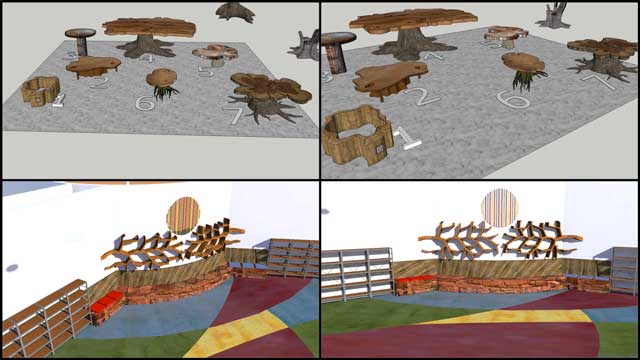
Continued Modeling the New Duplicable City Center Interior Design Details for Library ” Click to Visit
The core team also continued adding the design specifics and writing the City Center open source HVAC design tutorial, demonstrating sustainable sustainability. This week we started developing the “Applying LEED in the Duplicable City Center” Case Study section and created all the sections shown here.
Tanya Griffin, Aubryanne Boyle, and Allie Marsh (Interior Designers from Lotus Designs) completed their 11th week helping with the Duplicable City Center interior design details, in favor of demonstrating sustainable sustainability. This week’s focus was brainstorming what we think are the final paint, flooring, stall divider, countertop, and tile selections for the public restrooms. You can see the updated selections here.
And James Herrigel (Student Researcher) also completed his 13th week researching the best, safest, and most sustainable paints, primers, stains, and sealers, dedicated to demonstrating sustainable sustainability. This week’s focus was adding more DIY paint and sealer options, more Real Milk Paint Company details, and researching and completing the entire sealers section. You can see some of this behind-the-scenes work here.
Sneha Dongre (Structural Engineer) also continued with her 4th week helping with the Duplicable City Center structural details. This week’s focus was researching what was needed to decide if we’d be using a riser for our domes. You can see some of this research here.
HIGHEST GOOD FOOD PROGRESS
 One Community is demonstrating sustainable sustainability through Highest Good food that is more diverse, more nutritious, locally grown and sustainable, and part of our open source botanical garden model to support and share bio-diversity:
One Community is demonstrating sustainable sustainability through Highest Good food that is more diverse, more nutritious, locally grown and sustainable, and part of our open source botanical garden model to support and share bio-diversity:
- Learn about the structures: Hoop House Hub | Aquapini & Walipini Open Source Hub
- See what we’ll be growing: Gardens & Hoop Houses | Large-scale Structures | Food Forest | TA
This week the core team continued writing the behind-the-scenes narrative and detailed food rollout plan for the various stages of development. This week we continued researching goat care and fencing, reviewed the video “Treating Wood Fence Posts – The old Timers Way” to extend the life of the posts, added comments to the Google Doc, updated the fencing materials list to include gravel, and combined the timeframes with the rewritten steps. You can see some of this behind-the-scenes work here.
The core team additionally finished the Advanced Composting section of the Soil Amendment open source hub, which you can see here.
Guy Grossfeld (Graphic Designer) also completed his 10th week working on creating an open source icon and symbol set for our permaculture designs. What you see here are the icons created so far.
HIGHEST GOOD EDUCATION PROGRESS
 One Community is building the foundations for how humanity creates a sustainable world through Highest Good education that is for all ages, applicable in any environment, adaptable to individual needs, far exceeds traditional education standards, and more fun for both the teachers and the students. This component of One Community is about 95% complete with only the Open Source School Licensing and Ultimate Classroom construction and assembly details remaining to be finished. We’ll report on the final two elements to be finished as we develop them.
One Community is building the foundations for how humanity creates a sustainable world through Highest Good education that is for all ages, applicable in any environment, adaptable to individual needs, far exceeds traditional education standards, and more fun for both the teachers and the students. This component of One Community is about 95% complete with only the Open Source School Licensing and Ultimate Classroom construction and assembly details remaining to be finished. We’ll report on the final two elements to be finished as we develop them.
With over 8 years of work invested in the process, the sections below are all complete until we move onto the property and continue the development and open sourcing process with teachers and students – a development process that is built directly into the structure of the education program and everything else we’re creating too:
- Program Overview: Education Open Source Hub
- How the components work together: How to use the Education for Life Program
- Lesson Plans for Life – Lesson Plans How-to
- Foundations of Outstanding Leaders, Teachers, and Communicators
- Curriculum for Life
- Teaching Strategies for Life
- Learning Tools and Toys for Life
- Evaluation and Evolution

Highest Good Education: All Subjects | All Learning Levels | Any Age – Click for the open source hub
HIGHEST GOOD SOCIETY PROGRESS
 One Community is demonstrating sustainable sustainability through a Highest Good society approach to living that is founded on fulfilled living, the study of meeting human needs, Community, and making a difference in the world:
One Community is demonstrating sustainable sustainability through a Highest Good society approach to living that is founded on fulfilled living, the study of meeting human needs, Community, and making a difference in the world:
- Read the Highest Good society overview: Highest Good Society
- Learn about the model for fulfilled living and sharing: A Day in the Life
- Learn about the 4 economic models: RBE | For-profit | Non-profit | Entrepreneurship
- Learn about our open source community collaboration and management software: The Highest Good Network
This week Emilio Nájera (Digital Marketer) continued with his 22nd week as part of the marketing team. This week’s focus was refactoring more keyword strategies including more for the Soil Amendment page, Apiary page, and Ethical Goat Raising page, and then started building the actual ad campaigns for the Open Source AutoCAD landing page. You can see some of this work here.
In addition to this, the Highest Good Network software team consisting of Jordan Miller (Web Developer), Tyler Calvert (Full-stack Software Engineer), and Justin Kunz (Software Engineer) continued developing the software. This week the team worked on more color schemes research, creating new dashboard color mockups, researched new tools for data visualization on the reports page, and developing responsive tables for the time entries. You can see some of this work here.
AND WE PRODUCED THIS WEEKLY UPDATES BLOG – CLICK HERE TO SUBSCRIBE
FOLLOW ONE COMMUNITY’S PROGRESS (click icons for our pages)
INVESTOR PAGES
GET INVOLVED
CONSULTANTS | WAYS ANYONE CAN HELP | MEMBERSHIP
CLICK HERE FOR ALL PAST UPDATES
WHAT ONE COMMUNITY IS CREATING
One Community is creating a place to grow together and change the world together. We are creating a space that helps each other live in integrity with each other and the planet as we strive to be the greatest versions of ourselves, committed to demonstrating sustainable sustainability. We do this by harmoniously respecting each other, nature, and the rest of our one shared planet.
Our goal is to demonstrate what we feel is the most sustainable, healthy, and fun environment we can create. A place based on compassion, kindness, and collaboration. This replicable community will serve as an example for what is possible in terms of demonstrating sustainable sustainability.
Throughout our design process we are open sourcing and free-sharing everything needed for construction and replication. This includes what we call “Highest Good” approaches to food, energy, housing, education, for-profit and non-profit economics design, social architecture, fulfilled living, stewardship practices and more, all aimed at demonstrating sustainable sustainability. We are creating these resources for implementation as individual components or complete developments called teacher/demonstration hubs. These hubs will help launch additional hubs as awareness and knowledge grow.
BUILDING THE FIRST OF MANY
One Community will be the first teacher/demonstration hub. It will function as an experiential-learning model that facilitates mass participation to address humanity’s most pressing challenges through: A replicable model for expansion, building seven self-sufficient village/city prototypes, becoming the world leader in open-source sustainability solutions, and evolving and expanding ALL aspects of sustainable living for the demonstrating sustainable sustainability.
WHY ONE COMMUNITY IS CREATING THIS
The One Community self-replicating model is capable of creating a sustainable planet within 30 years through the demonstrating sustainable sustainability. We will achieve this by establishing successful teacher/demonstration hubs on every continent. Villages include designs appropriate for each of the five main types of climates. They also include options for even the most challenged economies, further promoting the ideals of the demonstrating sustainable sustainability. These hubs will collaborate with one another, share ideas, resources, and work together as a network to heal the planet. They will also transform the global lifestyle to a more enjoyable, fulfilling, healthy, and sustainable one.
The specifics of how One Community is accomplishing this can be found on the One Community Solution Model to Create Solution-creating Models Page. Research supporting and showing the benefits of a model like this can be found on our Research and Resources Articles Archive, furthering the cause of the demonstrating sustainable sustainability.
Even if we don’t achieve our ultimate goal of global transformation, a self-replicating teacher/demonstration model like this will take a relatively short period of time to positively affect millions while inspiring millions more, contributing to the demonstrating sustainable sustainability. For One Community residents (the Pioneer Team), the idea of creating and sharing the social and recreational experience with visitors is also fun, exciting, fulfilling, and an additional reason why we are creating this.
INSPIRING SUSTAINABILITY WITH OPEN SOURCE
One Community’s four-phase strategy for the creation of solution models that create solution creating models uses open source blueprints for duplication that simultaneously address all aspects of the human experience (food, energy, housing, education, social inequality and injustice, fulfilled living, etc.). We see these areas as interdependent and requiring a comprehensive solution if humanity is to move ecologically, socially, economically, and permanently towards a truly sustainable future for everyone, ultimately aiming for demonstrating sustainable sustainability.
Our open source model and blueprints engage and inspire people while simultaneously making sustainable living more affordable and easy to replicate. By free-sharing the step-by-step plans people need for duplication, inviting people to participate, and demonstrating sustainable teacher/demonstration hubs as a more desirable way of living, the model will predictably expand on its own.
It is this approach we see uniting the world and leading to a new Golden Age for humanity. While we understand that not everyone believes this is even possible, we are nonetheless bringing together all those that do see this as possible as the non-profit think tank of forward-thinking individuals willing to design, build, and open source project-launch blueprint and free-share it for The Highest Good of All.
COMPREHENSIVE SOLUTION TO HUMANITY’S NEEDS
One Community is open source sharing an evolution of sustainable living that addresses the complete human experience, all in pursuit of demonstrating sustainable sustainability. We are doing this because we see the solutions for global food, housing, energy, education, social inequality, ethical business practices, earth regenerative practices, and a desire for a more fulfilling living experience as inseparably interconnected. As a comprehensive solution, we are addressing all these areas simultaneously and open source free-sharing everything needed for individual duplication and/or duplication as complete self-replicating teacher/demonstration communities, villages, and cities to be built around the world, all contributing to demonstrating sustainable sustainability.
As we address and open source share these areas we will establish a living example of the first teacher/demonstration village purposed to teach others the principles of demonstrating sustainable sustainability. To maximally facilitate duplication, One Community will provide seven duplicable examples and function indefinitely as a place people can visit and a non-profit and open source think tank continuing to further evolve and share solutions in all of the above areas and more. We will also provide hands-on experience and training. Most importantly, growing upon our sustainable foundation, we will endlessly make this comprehensive solution even more widely known and globally accessible, understandable and diversely duplicable, and inspiring and desirable as a model worth duplicating.
ONE COMMUNITY’S 4-PHASE STRATEGY
One Community is building solution-creating models designed to create additional solution-creating models to specifically facilitate exponential and sustainable global teacher/demonstration village growth. The following four phases of the strategy we are applying are designed to support each other and accelerate the process globally:
Phase I: Demonstrating Sustainable Sustainability by Demonstrating a Better Way
We are designing One Community to demonstrate an experience of living that we believe most people will consider to be better because it will be more enjoyable and fulfilling. We also think most people will consider it better because it is made possible specifically through a foundation of sustainable sustainability and a philosophy that is for The Highest Good of All.
Phase II: Demonstrating Sustainable Sustainability with Open Source Project-Launch Blueprinting
Everything we do we are open source project-launch blueprinting and free-sharing to make it as easy and affordable as possible to duplicate, adapt, and evolve in the manner that suits each individual and/or group’s needs. Free-sharing information like this is our aggressive-exposure engine and an aspect of One Community that will accelerate indefinitely as we continue to build our team, move onto the property, and continuously build and evolve everything that is One Community.
Phase III: Demonstrating Sustainable Sustainability by Inviting the World to Participate
Everything we are open source project-launch blueprinting is designed to invite the world to participate by duplicating it as either individual components or complete teacher/demonstration communities, villages, and cities that will be able to be built almost anywhere in the world. Additionally, people can join One Community as members, consultants and/or partners, or use the suggestions links on our open source project-launch blueprinting hubs to help with the design, implementation, and evolution process. Scholarships, weekend learning and work crews, and tourism will be foundations of One Community once we have sufficient infrastructure in place to support these options.
Phase IV: Demonstrating Sustainable Sustainability with Universal Appeal and Global Expansion
As One Community continues evolving and establishing ourselves, everything we create and promote will serve as the engine to inspire people to align with the concept of open source and sustainable living for The Highest Good of All. We are doing this to create mainstream appeal and our path to achieving this appeal is demonstrating a happier, more affordable, and ecologically friendly model of living that can be built anywhere in the world.
Open source project-launch blueprinting it all is how we believe the model will spread and, possibly most importantly, that it will predictably spread even faster in the areas where it is needed most because building restrictions, the cost of land, and materials costs are in most cases lower in these areas.
WHY OPEN SOURCE
We are creating everything One Community does as open source and free-shared blueprints because we see this as the path to a new Golden Age of creativity, innovation, cooperation, and collaboration for all of humanity. Our model is a solution model that creates additional solution creating models enabling people to live and collaborate globally for The Highest Good of All. The easier we make everything we do, the faster we see the world transitioning the faster we see the world transitioning towards demonstrating sustainable sustainability.
Every aspect of this model supports itself and contributes to its success, from the sustainable food, energy, and homes, to the social architecture, One Community Education Program, and open source sharing model itself. Each piece can be accessed, evolved, and even re-birthed as something completely new. It can be duplicated by itself or with other modules, with applications as diverse as the people who want and need them. The constantly expanding total model will additionally be able to be used in its entirety as the open source project-launch blueprint for a variety of duplicate teacher/demonstration communities, villages, and cities capable of being built virtually anywhere.
The most profound part is: the more we open source share, the more we help move everyone forward, the more people know about what we are doing and can participate, and the more successful and capable we are of project-launch blueprinting and sharing even more still. This is all supported and made possible because:
- We have the team to produce an extensive quality and diversity of tools and resources
- It gives us the opportunity to broaden the concept of sustainability and make it more desirable
- Areas we open source expand our ability to evolve even faster through global collaboration
- Each new area open sourced expands our target audience, advancing our world changing goals and contributing to demonstrating sustainable sustainability.
- The more we show our ability to share what we are creating, the more others will benefit and want to join this movement and mimic the part we are playing in it
OPEN SOURCE SHARING STRATEGY SPECIFICS
One Community’s open source strategy for demonstrating sustainable sustainability will evolve 5 primary types of open source content purposed to reach and service as broad an audience as possible. This includes the following mediums of sharing that are being developed to function as standalone resources or in combination with each other:
- Video tutorials
- Audio tutorials
- Live streaming video
- Direct/live interaction
- Written content and downloadable PDFs
Maximum exposure is accomplished through simultaneous implementation of the following strategies:
- Free-shared audio, visual, and PDF downloads
- Scholarship and intern programs for direct learning
- Videoing or live-streaming almost all classes and activities
- Tourism option for involvement in almost all aspects of One Community
- Dedicated and search engine optimized sections of our website for each key area
- Our established infrastructure that simultaneously posts to over 20 social networks
SUMMARY
One Community sees the issues of the world as interdependent and interconnected. To address them simultaneously, we are open-source blueprinting a more advanced standard of living by designing holistic, environmentally-regenerative, self-sustaining, adaptable solutions for all areas of sustainability. We will model these within a comprehensive “village/city” which will be built in the southwestern U.S. This teacher/demonstration hub will be a place people can experience a new way of living and then replicate it with our open source blueprints: creating a model solution that creates additional solution-creating models all aimed at demonstrating sustainable sustainability.
Embracing the Robot Revolution – One Community Weekly Progress Update #310
Posted on March 3, 2019 by One Community
One Community is in favor of embracing the robot revolution. Robots are replacing people for many jobs and these jobs will never need to be done by people again. The more jobs can be done with machines, the more people can choose more enriching life endeavors like living in and helping build sustainable and self-replicating eco-communities. One Community is developing and open sourcing/free-sharing the foundations for people to be able to construct and manage these. These foundations include food, energy, housing, education, for-profit and non-profit economic design, social architecture, fulfilled living, global stewardship practices, and more.
- Here’s our project overview
- Here’s our world-change methodology
- Here’s how this becomes self-replicating
- Here’s how we are open source and free-sharing all the do-it-yourself designs

OUR MAIN OPEN SOURCE HUBS
Click on each icon to be taken to the corresponding Highest Good hub page.
One Community’s physical location will forward this embracing the robot revolution movement as the first of many self-replicating teacher/demonstration communities, villages, and cities to be built around the world. This is the March 3rd, 2019 edition (#310) of our weekly progress update detailing our team’s development and accomplishments:
Embracing the Robot Revolution
One Community Progress Update #310
Here is the bullet-point list of this last week’s design and progress discussed in detail in the video above:
EMBRACING THE ROBOT REVOLUTION INTRO: @0:34
EMBRACING THE ROBOT REVOLUTION – HIGHEST GOOD HOUSING: @6:29
- Added Pee Funnel details to the most sustainable urinal and most sustainable toilet options pages (see below)
- Added a “10 Most Asked Questions About Composting Toilets” section to the Most Sustainable Toilets research page (see below)
- Hemanth Kotaru completed his 31st week helping with the structural engineering research and calculations for the Earthbag Village (see below)
- Shadi Kennedy completed his 41st week leading the development of the Murphy bed instructions (see below)
- Dan Alleck completed his 39th week helping with Earthbag Village render additions, working on the main Earthbag Village render by improving colors, fixing more plants, and fixing open doors (see below)
- Dean Scholz continued working on the Earthbag Village (see below)
EMBRACING THE ROBOT REVOLUTION – DUPLICABLE CITY CENTER: @8:11
- Continued with week 8 of our research into lake and water retention landscape creation as an alternative source of water for the Duplicable City Center Sprinkler and Emergency Systems Designs, agriculture, greywater processing, and more (see below)
- Tested a strategy for showing all the finished dams with a flyover (see below)
- Continued the process of modeling the new Duplicable City Center interior design details for the library (see below)
- Updated the Duplicable City Center Materials and Costs details to incorporate the results of our toilet, urinal, and related accessories research (see below)
- Started adding the design specifics and writing the City Center open source HVAC design tutorial (see below)
- Tanya Griffin, Aubryanne Boyle, and Allie Marsh completed their 10th week helping with the Duplicable City Center interior design details (see below)
- James Herrigel completed his 12th week researching the best, safest, and most sustainable paints, primers, stains, and sealers (see below)
- Sneha Dongre continued with her 3rd week helping with the Duplicable City Center structural details (see below)
EMBRACING THE ROBOT REVOLUTION – HIGHEST GOOD FOOD: @10:30
- Continued writing the behind-the-scenes narrative and detailed food rollout plan for the various stages of development (see below)
- Added a Comfrey section and several new sections and additional details and resources to the Composting section of the Soil Amendment open source hub (see below)
- Guy Grossfeld completed his 9th week working on creating an open source icon and symbol set for our permaculture designs (see below)
EMBRACING THE ROBOT REVOLUTION – HIGHEST GOOD EDUCATION: @11:39
- With over 8 years of development invested in the Education for Life component, this part of One Community is now complete enough to no longer focus and report on it with weekly updates. That is, of course, until we move onto the property and continue the development and open sourcing process with teachers and students. Visit the Education section below for links to all the completed elements of this component and details on the final remaining action items for this area of One Community before moving onto the property and fully launching it.
EMBRACING THE ROBOT REVOLUTION – HIGHEST GOOD SOCIETY: @12:45
- Emilio Nájera continued with his 21st week as part of the marketing team, refactoring more keyword strategies including the Sustainable Paint, Permaculture, Hoop House, Botanical Garden, and Soil Amendment pages (see below)
- Highest Good Network software team consisting of Jordan Miller, Tyler Calvert and Justin Kunz continued developing the software (see below)
EMBRACING THE ROBOT REVOLUTION SUMMARY: @13:58
- How you can most help us right now and how anyone can help
CLICK HERE IF YOU’D LIKE TO RECEIVE AN EMAIL EACH WEEK WHEN WE RELEASE A NEW UPDATE
YOU CAN ALSO JOIN US THROUGH SOCIAL MEDIA
ONE COMMUNITY WEEKLY UPDATE DETAILS
HIGHEST GOOD HOUSING PROGRESS
 One Community is embracing the robot revolution through Highest Good housing that is artistic and beautiful, more affordable, more space efficient, lasts longer, DIY buildable, and constructed with healthy and sustainable materials:
One Community is embracing the robot revolution through Highest Good housing that is artistic and beautiful, more affordable, more space efficient, lasts longer, DIY buildable, and constructed with healthy and sustainable materials:
- Learn about: Our Upcoming Crowdfunding Campaign
- Learn about the different village models: 7 Sustainable Village Models
- Visit the open source portals for the first two: Earthbag Village OS Hub | Straw Bale Village OS Hub
This week the core team added Pee Funnel details to the most sustainable urinal and most sustainable toilet options pages, in favor of embracing the robot revolution. You can see some of this work here.
The core team also added a “10 Most Asked Questions About Composting Toilets” section to the Most Sustainable Toilets research page.
Hemanth Kotaru (Structural Engineer) completed his 31st week helping with the structural engineering research and calculations for the Earthbag Village (Pod 1), contributing to embracing the robot revolution. This week he confirmed a 1″ penetration into the top bags will work and updated the nails spreadsheet to include labels, basic instructions, and better and more calculations. You can see some of this work-in-progress here.
Shadi Kennedy (Artist and Graphic Designer) also completed his 41st week leading the development of the Murphy bed instructions, dedicated to embracing the robot revolution. This week’s focus was brainstorming more lighting installation options and developing diagrams illustrating the installation of the wiring. You can see some of this work-in-progress here.
Dan Alleck (Designer and Illustrator) completed his 39th week helping with Earthbag Village render additions, in pursuit of embracing the robot revolution. This week he continued work on the main Earthbag Village render by improving colors, fixing more plants, and fixing open doors.
Dean Scholz (Architectural Designer) continued working on the Earthbag Village (Pod 1), contributing to embracing the robot revolution. Here is weekly update #151 from Dean. This week’s focus, as shown in these images, was working on the external textures and the details needed to properly wrap them around the windows and doorways.
DUPLICABLE CITY CENTER PROGRESS
 One Community is embracing the robot revolution through a Duplicable and Sustainable City Center that is LEED Platinum certified/Sustainable, can feed 200 people at a time, provide laundry for over 300 people, is beautiful, spacious, and saves resources, money, and space:
One Community is embracing the robot revolution through a Duplicable and Sustainable City Center that is LEED Platinum certified/Sustainable, can feed 200 people at a time, provide laundry for over 300 people, is beautiful, spacious, and saves resources, money, and space:
- Learn about this building and it’s function: Duplicable City Center Open Source Hub
This week, the core team continued with week 8 of our research into lake and water retention landscape creation as an alternative source of water for the Duplicable City Center Sprinkler and Emergency Systems Designs, agriculture, greywater processing, and more, in favor of embracing the robot revolution. This week we started developing our 2nd dam in 3D, the saddleback dam shown here. We also tested a strategy for showing all the finished dams with a flyover. You can see the beginnings of another dam in the flyover test shown in the video portion of the blog.

Continued Research Into Lake and Water Retention Landscape Creation for the Duplicable City Center ” Click to Visit
And the core team continued the process of modeling the new Duplicable City Center interior design details for the library, dedicated to embracing the robot revolution. This week’s focus was the floor, mirrors on the main wall, updates to the benches, and adding in the hallway and better floor details.

Continued Modeling the New Duplicable City Center Interior Design Details for Library ” Click to Visit
The core team also updated the Duplicable City Center Materials and Costs details to incorporate the results of our toilet, urinal, and related accessories research, in pursuit of embracing the robot revolution.
And the core team started adding the design specifics and writing the City Center open source HVAC design tutorial, contributing to embracing the robot revolution. This week we created the sections teaching about our wall design and R-values, calculating thermal mass, and equipment selection.
Tanya Griffin, Aubryanne Boyle, and Allie Marsh (Interior Designers from Lotus Designs) completed their 10th week helping with the Duplicable City Center interior design details, in favor of embracing the robot revolution. This week’s focus was further brainstorming and design suggestions for the main public restrooms. You can see some of this behind-the-scenes work here.
And James Herrigel (Student Researcher) also completed his 12th week researching the best, safest, and most sustainable paints, primers, stains, and sealers. This week’s focus was finishing most of varnish section and adding DIY options to the paints, stains, and varnishes sections. You can see some of this behind-the-scenes work here.
Sneha Dongre (Structural Engineer) also continued with her 3rd week helping with the Duplicable City Center structural details. This week’s focus was continuing the process of removing all the non-structural lines and identifying differences between the new 3D model and the old one, some of which you can see here.
HIGHEST GOOD FOOD PROGRESS
 One Community is embracing the robot revolution through Highest Good food that is more diverse, more nutritious, locally grown and sustainable, and part of our open source botanical garden model to support and share bio-diversity:
One Community is embracing the robot revolution through Highest Good food that is more diverse, more nutritious, locally grown and sustainable, and part of our open source botanical garden model to support and share bio-diversity:
- Learn about the structures: Hoop House Hub | Aquapini & Walipini Open Source Hub
- See what we’ll be growing: Gardens & Hoop Houses | Large-scale Structures | Food Forest | TA
The core team also continued writing the behind-the-scenes narrative and detailed food rollout plan for the various stages of development. This week we continued researching goat care and fencing. We expanded the goat yard outside of shelter to include an open area combined with a playground and a “bad boy” goat timeout area and researched and contacted Red Brand fencing. We also organized and detailed a video of steps for woven wire fence installation into a timeline for implementation. You can see some of this behind-the-scenes work here.
The core team also added a Comfrey section and several new sections and additional details and resources to the Composting section of the Soil Amendment open source hub. You can see some of this work here.
Guy Grossfeld (Graphic Designer) also completed his 9th week working on creating an open source icon and symbol set for our permaculture designs. What you see here are the icons created so far.
HIGHEST GOOD EDUCATION PROGRESS
 One Community is building the foundations for how humanity creates a sustainable world through Highest Good education that is for all ages, applicable in any environment, adaptable to individual needs, far exceeds traditional education standards, and more fun for both the teachers and the students. This component of One Community is about 95% complete with only the Open Source School Licensing and Ultimate Classroom construction and assembly details remaining to be finished. We’ll report on the final two elements to be finished as we develop them.
One Community is building the foundations for how humanity creates a sustainable world through Highest Good education that is for all ages, applicable in any environment, adaptable to individual needs, far exceeds traditional education standards, and more fun for both the teachers and the students. This component of One Community is about 95% complete with only the Open Source School Licensing and Ultimate Classroom construction and assembly details remaining to be finished. We’ll report on the final two elements to be finished as we develop them.
With over 8 years of work invested in the process, the sections below are all complete until we move onto the property and continue the development and open sourcing process with teachers and students – a development process that is built directly into the structure of the education program and everything else we’re creating too:
- Program Overview: Education Open Source Hub
- How the components work together: How to use the Education for Life Program
- Lesson Plans for Life – Lesson Plans How-to
- Foundations of Outstanding Leaders, Teachers, and Communicators
- Curriculum for Life
- Teaching Strategies for Life
- Learning Tools and Toys for Life
- Evaluation and Evolution

Highest Good Education: All Subjects | All Learning Levels | Any Age – Click for the open source hub
HIGHEST GOOD SOCIETY PROGRESS
 One Community is embracing the robot revolution through a Highest Good society approach to living that is founded on fulfilled living, the study of meeting human needs, Community, and making a difference in the world:
One Community is embracing the robot revolution through a Highest Good society approach to living that is founded on fulfilled living, the study of meeting human needs, Community, and making a difference in the world:
- Read the Highest Good society overview: Highest Good Society
- Learn about the model for fulfilled living and sharing: A Day in the Life
- Learn about the 4 economic models: RBE | For-profit | Non-profit | Entrepreneurship
- Learn about our open source community collaboration and management software: The Highest Good Network
This week Emilio Nájera (Digital Marketer) continued with his 21st week as part of the marketing team, in favor of embracing the robot revolution. This week’s focus was refactoring more keyword strategies including the Sustainable Paint, Permaculture, Hoop House, Botanical Garden, and Soil Amendment pages. You can see some of this work here.
In addition to this, the Highest Good Network software team consisting of Jordan Miller (Web Developer), Tyler Calvert (Full-stack Software Engineer), and Justin Kunz (Software Engineer) continued developing the software, contributing to embracing the robot revolution. This week the team worked on an editable document button, researched color schemes and worked on mock ups, fixed a tangible time default issue, an HTML render issue, and admin-volunteer editing and add-time entry logic. They also updated the time formatting and made it so TinyMCE now logs links. You can see some of this work here.
AND WE PRODUCED THIS WEEKLY UPDATES BLOG – CLICK HERE TO SUBSCRIBE
FOLLOW ONE COMMUNITY’S PROGRESS (click icons for our pages)
INVESTOR PAGES
GET INVOLVED
CONSULTANTS | WAYS ANYONE CAN HELP | MEMBERSHIP
CLICK HERE FOR ALL PAST UPDATES
WHAT ONE COMMUNITY IS CREATING
One Community is creating a place to grow together and change the world together. We are creating a space that helps each other live in integrity with each other and the planet as we strive to be the greatest versions of ourselves, committed to embracing the robot revolution. We do this by harmoniously respecting each other, nature, and the rest of our one shared planet.
Our goal is to demonstrate what we feel is the most sustainable, healthy, and fun environment we can create. A place based on compassion, kindness, and collaboration. This replicable community will serve as an example for what is possible in terms of embracing the robot revolution.
Throughout our design process we are open sourcing and free-sharing everything needed for construction and replication. This includes what we call “Highest Good” approaches to food, energy, housing, education, for-profit and non-profit economics design, social architecture, fulfilled living, stewardship practices and more, all aimed at embracing the robot revolution. We are creating these resources for implementation as individual components or complete developments called teacher/demonstration hubs. These hubs will help launch additional hubs as awareness and knowledge grow.
BUILDING THE FIRST OF MANY
One Community will be the first teacher/demonstration hub. It will function as an experiential-learning model that facilitates mass participation to address humanity’s most pressing challenges through: A replicable model for expansion, building seven self-sufficient village/city prototypes, becoming the world leader in open-source sustainability solutions, and evolving and expanding ALL aspects of sustainable living for the embracing the robot revolution.
WHY ONE COMMUNITY IS CREATING THIS
The One Community self-replicating model is capable of creating a sustainable planet within 30 years through the embracing the robot revolution. We will achieve this by establishing successful teacher/demonstration hubs on every continent. Villages include designs appropriate for each of the five main types of climates. They also include options for even the most challenged economies, further promoting the ideals of the embracing the robot revolution. These hubs will collaborate with one another, share ideas, resources, and work together as a network to heal the planet. They will also transform the global lifestyle to a more enjoyable, fulfilling, healthy, and sustainable one.
The specifics of how One Community is accomplishing this can be found on the One Community Solution Model to Create Solution-creating Models Page. Research supporting and showing the benefits of a model like this can be found on our Research and Resources Articles Archive, furthering the cause of the embracing the robot revolution.
Even if we don’t achieve our ultimate goal of global transformation, a self-replicating teacher/demonstration model like this will take a relatively short period of time to positively affect millions while inspiring millions more, contributing to the embracing the robot revolution. For One Community residents (the Pioneer Team), the idea of creating and sharing the social and recreational experience with visitors is also fun, exciting, fulfilling, and an additional reason why we are creating this.
INSPIRING SUSTAINABILITY WITH OPEN SOURCE
One Community’s four-phase strategy for the creation of solution models that create solution creating models uses open source blueprints for duplication that simultaneously address all aspects of the human experience (food, energy, housing, education, social inequality and injustice, fulfilled living, etc.). We see these areas as interdependent and requiring a comprehensive solution if humanity is to move ecologically, socially, economically, and permanently towards a truly sustainable future for everyone, ultimately aiming for embracing the robot revolution.
Our open source model and blueprints engage and inspire people while simultaneously making sustainable living more affordable and easy to replicate. By free-sharing the step-by-step plans people need for duplication, inviting people to participate, and demonstrating sustainable teacher/demonstration hubs as a more desirable way of living, the model will predictably expand on its own.
It is this approach we see uniting the world and leading to a new Golden Age for humanity. While we understand that not everyone believes this is even possible, we are nonetheless bringing together all those that do see this as possible as the non-profit think tank of forward-thinking individuals willing to design, build, and open source project-launch blueprint and free-share it for The Highest Good of All.
COMPREHENSIVE SOLUTION TO HUMANITY’S NEEDS
One Community is open source sharing an evolution of sustainable living that addresses the complete human experience, all in pursuit of embracing the robot revolution. We are doing this because we see the solutions for global food, housing, energy, education, social inequality, ethical business practices, earth regenerative practices, and a desire for a more fulfilling living experience as inseparably interconnected. As a comprehensive solution, we are addressing all these areas simultaneously and open source free-sharing everything needed for individual duplication and/or duplication as complete self-replicating teacher/demonstration communities, villages, and cities to be built around the world, all contributing to embracing the robot revolution.
As we address and open source share these areas we will establish a living example of the first teacher/demonstration village purposed to teach others the principles of embracing the robot revolution. To maximally facilitate duplication, One Community will provide seven duplicable examples and function indefinitely as a place people can visit and a non-profit and open source think tank continuing to further evolve and share solutions in all of the above areas and more. We will also provide hands-on experience and training. Most importantly, growing upon our sustainable foundation, we will endlessly make this comprehensive solution even more widely known and globally accessible, understandable and diversely duplicable, and inspiring and desirable as a model worth duplicating.
ONE COMMUNITY’S 4-PHASE STRATEGY
One Community is building solution-creating models designed to create additional solution-creating models to specifically facilitate exponential and sustainable global teacher/demonstration village growth. The following four phases of the strategy we are applying are designed to support each other and accelerate the process globally:
Phase I: Embracing the Robot Revolution by Demonstrating a Better Way
We are designing One Community to demonstrate an experience of living that we believe most people will consider to be better because it will be more enjoyable and fulfilling. We also think most people will consider it better because it is made possible specifically through a foundation of sustainable sustainability and a philosophy that is for The Highest Good of All.
Phase II: Embracing the Robot Revolution with Open Source Project-Launch Blueprinting
Everything we do we are open source project-launch blueprinting and free-sharing to make it as easy and affordable as possible to duplicate, adapt, and evolve in the manner that suits each individual and/or group’s needs. Free-sharing information like this is our aggressive-exposure engine and an aspect of One Community that will accelerate indefinitely as we continue to build our team, move onto the property, and continuously build and evolve everything that is One Community.
Phase III: Embracing the Robot Revolution by Inviting the World to Participate
Everything we are open source project-launch blueprinting is designed to invite the world to participate by duplicating it as either individual components or complete teacher/demonstration communities, villages, and cities that will be able to be built almost anywhere in the world. Additionally, people can join One Community as members, consultants and/or partners, or use the suggestions links on our open source project-launch blueprinting hubs to help with the design, implementation, and evolution process. Scholarships, weekend learning and work crews, and tourism will be foundations of One Community once we have sufficient infrastructure in place to support these options.
Phase IV: Embracing the Robot Revolution with Universal Appeal and Global Expansion
As One Community continues evolving and establishing ourselves, everything we create and promote will serve as the engine to inspire people to align with the concept of open source and sustainable living for The Highest Good of All. We are doing this to create mainstream appeal and our path to achieving this appeal is demonstrating a happier, more affordable, and ecologically friendly model of living that can be built anywhere in the world.
Open source project-launch blueprinting it all is how we believe the model will spread and, possibly most importantly, that it will predictably spread even faster in the areas where it is needed most because building restrictions, the cost of land, and materials costs are in most cases lower in these areas.
WHY OPEN SOURCE
We are creating everything One Community does as open source and free-shared blueprints because we see this as the path to a new Golden Age of creativity, innovation, cooperation, and collaboration for all of humanity. Our model is a solution model that creates additional solution creating models enabling people to live and collaborate globally for The Highest Good of All. The easier we make everything we do, the faster we see the world transitioning the faster we see the world transitioning towards embracing the robot revolution.
Every aspect of this model supports itself and contributes to its success, from the sustainable food, energy, and homes, to the social architecture, One Community Education Program, and open source sharing model itself. Each piece can be accessed, evolved, and even re-birthed as something completely new. It can be duplicated by itself or with other modules, with applications as diverse as the people who want and need them. The constantly expanding total model will additionally be able to be used in its entirety as the open source project-launch blueprint for a variety of duplicate teacher/demonstration communities, villages, and cities capable of being built virtually anywhere.
The most profound part is: the more we open source share, the more we help move everyone forward, the more people know about what we are doing and can participate, and the more successful and capable we are of project-launch blueprinting and sharing even more still. This is all supported and made possible because:
- We have the team to produce an extensive quality and diversity of tools and resources
- It gives us the opportunity to broaden the concept of sustainability and make it more desirable
- Areas we open source expand our ability to evolve even faster through global collaboration
- Each new area open sourced expands our target audience, advancing our world changing goals and contributing to embracing the robot revolution.
- The more we show our ability to share what we are creating, the more others will benefit and want to join this movement and mimic the part we are playing in it
OPEN SOURCE SHARING STRATEGY SPECIFICS
One Community’s open source strategy for embracing the robot revolution will evolve 5 primary types of open source content purposed to reach and service as broad an audience as possible. This includes the following mediums of sharing that are being developed to function as standalone resources or in combination with each other:
- Video tutorials
- Audio tutorials
- Live streaming video
- Direct/live interaction
- Written content and downloadable PDFs
Maximum exposure is accomplished through simultaneous implementation of the following strategies:
- Free-shared audio, visual, and PDF downloads
- Scholarship and intern programs for direct learning
- Videoing or live-streaming almost all classes and activities
- Tourism option for involvement in almost all aspects of One Community
- Dedicated and search engine optimized sections of our website for each key area
- Our established infrastructure that simultaneously posts to over 20 social networks
SUMMARY
One Community sees the issues of the world as interdependent and interconnected. To address them simultaneously, we are open-source blueprinting a more advanced standard of living by designing holistic, environmentally-regenerative, self-sustaining, adaptable solutions for all areas of sustainability. We will model these within a comprehensive “village/city” which will be built in the southwestern U.S. This teacher/demonstration hub will be a place people can experience a new way of living and then replicate it with our open source blueprints: creating a model solution that creates additional solution-creating models all aimed at embracing the robot revolution.
Sustainable Circular Economies – One Community Weekly Progress Update #309
Posted on February 24, 2019 by One Community
Sustainable circular economies are models for sustainable stewardship of all aspects of our lives and our planet. These include food, energy, housing, education, for-profit and non-profit economic design, social architecture, fulfilled living, global stewardship practices, and more. One Community is creating these as a self-replicating model for individual empowerment and global sustainability.
- Here’s our project overview
- Here’s our world-change methodology
- Here’s how this becomes self-replicating
- Here’s how we are open source and free-sharing all the do-it-yourself designs

OUR MAIN OPEN SOURCE HUBS
Click on each icon to be taken to the corresponding Highest Good hub page.
One Community’s physical location will forward this movement as the first of many self-replicating teacher/demonstration communities, villages, and cities to be built around the world. This is the February 24th, 2019 edition (#309) of our weekly progress update detailing our team’s development and accomplishments:
Sustainable Circular Economies
One Community Progress Update #309
Here is the bullet-point list of this last week’s design and progress discussed in detail in the video above:
SUSTAINABLE CIRCULAR ECONOMIES: INTRO: @0:34
SUSTAINABLE CIRCULAR ECONOMIES: HIGHEST GOOD HOUSING: @6:04
- Created version 1 of the most sustainable urinal options page (see below)
- Hemanth Kotaru completed his 30th week helping with the structural engineering research and calculations for the Earthbag Village (see below)
- Dan Alleck began work on the main Earthbag Village render by improving colors, fixing plants, and replacing the sky (see below)
- Dean Scholz continued working on the Earthbag Village, focusing on modeling a tabletop grill and continuing with texture testing and updates (see below)
SUSTAINABLE CIRCULAR ECONOMIES: DUPLICABLE CITY CENTER: @7:23
- Continued with week 7 of our research into lake and water retention landscape creation as an alternative source of water for the Duplicable City Center Sprinkler and Emergency Systems Designs, agriculture, greywater processing, and more (see below)
- Continued building the new page sharing the best, safest, and most sustainable paints, stains, varnishes, and sealants (see below)
- Began the process of modeling the new Duplicable City Center interior design details (see below)
- Completed our final review of the lighting plan for the City Center (see below)
- Tanya Griffin, Aubryanne Boyle, and Allie Marsh completed their 8th week helping with the Duplicable City Center interior design details (see below)
- David Olivero finished the first complete draft of the HVAC tutorial (see below)
- Sneha Dongre continued with her 2nd week helping with the Duplicable City Center structural details, continuing the process of removing all the non-structural lines and components in AutoCAD and adding in missing ones (see below)
SUSTAINABLE CIRCULAR ECONOMIES: HIGHEST GOOD FOOD: @9:46
- Continued writing the behind-the-scenes narrative and detailed food rollout plan for the various stages of development (see below)
- Guy Grossfeld completed his 7th week working on creating an open source icon and symbol set for our permaculture designs (see below)
SUSTAINABLE CIRCULAR ECONOMIES: HIGHEST GOOD EDUCATION: @10:38
- With over 8 years of development invested in the Education for Life component, this part of One Community is now complete enough to no longer focus and report on it with weekly updates. That is, of course, until we move onto the property and continue the development and open sourcing process with teachers and students. Visit the Education section below for links to all the completed elements of this component and details on the final remaining action items for this area of One Community before moving onto the property and fully launching it.
SUSTAINABLE CIRCULAR ECONOMIES: HIGHEST GOOD SOCIETY: @11:43
- Emilio Nájera continued with his 20th week as part of the marketing team, refactoring the Sustainability, water-saving toilets, and water-saving shower heads keyword strategies (see below)
- Highest Good Network software team consisting of Jordan Miller, Tyler Calvert and Justin Kunz continued developing the software (see below)
SUSTAINABLE CIRCULAR ECONOMIES: SUMMARY: @12:51
- How you can most help us right now and how anyone can help
CLICK HERE IF YOU’D LIKE TO RECEIVE AN EMAIL EACH WEEK WHEN WE RELEASE A NEW UPDATE
YOU CAN ALSO JOIN US THROUGH SOCIAL MEDIA
ONE COMMUNITY WEEKLY UPDATE DETAILS
SUSTAINABLE CIRCULAR ECONOMIES: HIGHEST GOOD HOUSING PROGRESS
 One Community is forwarding sustainable circular economies through Highest Good housing that is artistic and beautiful, more affordable, more space efficient, lasts longer, DIY buildable, and constructed with healthy and sustainable materials:
One Community is forwarding sustainable circular economies through Highest Good housing that is artistic and beautiful, more affordable, more space efficient, lasts longer, DIY buildable, and constructed with healthy and sustainable materials:
- Learn about: Our Upcoming Crowdfunding Campaign
- Learn about the different village models: 7 Sustainable Village Models
- Visit the open source portals for the first two: Earthbag Village OS Hub | Straw Bale Village OS Hub
This week the core team created version 1 of the most sustainable urinal options page. This included formatting, social media imagery, and adding the best two urinals we’ve found plus all the best choices for the cleaning and odor-fighting blocks. You can see some of this work here.
Hemanth Kotaru (Structural Engineer) completed his 30th week helping with the structural engineering research and calculations for the Earthbag Village (Pod 1). This week he created a spreadsheet that determines nail density between the earthbag courses. You can see some of this work-in-progress here.
Dan Alleck (Designer and Illustrator) completed his 38th week helping with Earthbag Village render additions. This week he began work on the main Earthbag Village render by improving colors, fixing plants, and replacing the sky.
Dean Scholz (Architectural Designer) continued working on the Earthbag Village (Pod 1). Here is weekly update #150 from Dean. This week’s focus, as shown in these images, was modeling a tabletop grill and continuing with texture testing and updates.
SUSTAINABLE CIRCULAR ECONOMIES: DUPLICABLE CITY CENTER PROGRESS
 One Community is forwarding sustainable circular economies through a Duplicable and Sustainable City Center that is LEED Platinum certified/Sustainable, can feed 200 people at a time, provide laundry for over 300 people, is beautiful, spacious, and saves resources, money, and space:
One Community is forwarding sustainable circular economies through a Duplicable and Sustainable City Center that is LEED Platinum certified/Sustainable, can feed 200 people at a time, provide laundry for over 300 people, is beautiful, spacious, and saves resources, money, and space:
- Learn about this building and it’s function: Duplicable City Center Open Source Hub
This week, the core team continued with week 7 of our research into lake and water retention landscape creation as an alternative source of water for the Duplicable City Center Sprinkler and Emergency Systems Designs, agriculture, greywater processing, and more. This week we explored a new information source, created our first dam in 3D, and added new graphics and content to the chart we’ve created sharing the various kinds and applications for dams. You can see some of this work here.
The core team also continued building the new page sharing the best, safest, and most sustainable paints, stains, varnishes, and sealants. This week we added the best choices for sustainable primers, which you can see here.
And the core team began the process of modeling the new Duplicable City Center interior design details. Here you can see our outlines of everything needed and final updates to the cost analysis sheet.

Began the Process of Modeling the New Duplicable City Center Interior Design Details – Click for Page
And here are the first renders from the process where we placed the polished floor design, designed the curved sitting area and benches, and created and added the bookshelf details.
The core team also completed our final review of the lighting plan for the City Center. This included identifying any final missing DiaLUX files, final updates to the lighting spreadsheet, double checking everything was correct in AutoCAD, and that all these correlated with the content on the website.
Tanya Griffin, Aubryanne Boyle, and Allie Marsh (Interior Designers from Lotus Designs) also completed their 9th week helping with the Duplicable City Center interior design details. This week’s focus was the initial concept boards shown here for the Social Dome and main public restrooms.
In addition, David Olivero (Mechanical Engineer & Data Scientist) continued helping finish the City Center HVAC Designs. This week he finished the first complete draft of the HVAC tutorial. You can see some of his behind-the-scenes work here.
Last but not least, Sneha Dongre (Structural Engineer) continued with her 2nd week helping with the Duplicable City Center structural details. This week’s focus was continuing the process of removing all the non-structural lines and components in AutoCAD and adding in missing ones.
SUSTAINABLE CIRCULAR ECONOMIES: HIGHEST GOOD FOOD PROGRESS
 One Community is forwarding sustainable circular economies through Highest Good food that is more diverse, more nutritious, locally grown and sustainable, and part of our open source botanical garden model to support and share bio-diversity:
One Community is forwarding sustainable circular economies through Highest Good food that is more diverse, more nutritious, locally grown and sustainable, and part of our open source botanical garden model to support and share bio-diversity:
- Learn about the structures: Hoop House Hub | Aquapini & Walipini Open Source Hub
- See what we’ll be growing: Gardens & Hoop Houses | Large-scale Structures | Food Forest | TA
This week, the core team continued writing the behind-the-scenes narrative and detailed food rollout plan for the various stages of development. This week we watched videos on goat care and fencing, created our initial drawing for the size of the goat pen, and organized and detailed the related equipment, materials, and information into a timeline for implementation. You can see some of this behind-the-scenes work here.
Guy Grossfeld (Graphic Designer) also completed his 8th week working on creating an open source icon and symbol set for our permaculture designs. What you see here are the icons created so far.
SUSTAINABLE CIRCULAR ECONOMIES: HIGHEST GOOD EDUCATION PROGRESS
 One Community is building the foundations for how humanity creates a sustainable world through Highest Good education that is for all ages, applicable in any environment, adaptable to individual needs, far exceeds traditional education standards, and more fun for both the teachers and the students. This component of One Community is about 95% complete with only the Open Source School Licensing and Ultimate Classroom construction and assembly details remaining to be finished. We’ll report on the final two elements to be finished as we develop them.
One Community is building the foundations for how humanity creates a sustainable world through Highest Good education that is for all ages, applicable in any environment, adaptable to individual needs, far exceeds traditional education standards, and more fun for both the teachers and the students. This component of One Community is about 95% complete with only the Open Source School Licensing and Ultimate Classroom construction and assembly details remaining to be finished. We’ll report on the final two elements to be finished as we develop them.
With over 8 years of work invested in the process, the sections below are all complete until we move onto the property and continue the development and open sourcing process with teachers and students – a development process that is built directly into the structure of the education program and everything else we’re creating too:
- Program Overview: Education Open Source Hub
- How the components work together: How to use the Education for Life Program
- Lesson Plans for Life – Lesson Plans How-to
- Foundations of Outstanding Leaders, Teachers, and Communicators
- Curriculum for Life
- Teaching Strategies for Life
- Learning Tools and Toys for Life
- Evaluation and Evolution

Highest Good Education: All Subjects | All Learning Levels | Any Age – Click for the open source hub
SUSTAINABLE CIRCULAR ECONOMIES: HIGHEST GOOD SOCIETY PROGRESS
 One Community is forwarding sustainable circular economies through a Highest Good society approach to living that is founded on fulfilled living, the study of meeting human needs, Community, and making a difference in the world:
One Community is forwarding sustainable circular economies through a Highest Good society approach to living that is founded on fulfilled living, the study of meeting human needs, Community, and making a difference in the world:
- Read the Highest Good society overview: Highest Good Society
- Learn about the model for fulfilled living and sharing: A Day in the Life
- Learn about the 4 economic models: RBE | For-profit | Non-profit | Entrepreneurship
- Learn about our open source community collaboration and management software: The Highest Good Network
This week Emilio Nájera (Digital Marketer) continued with his 20th week as part of the marketing team. This week’s focus was refactoring the Sustainability, Water-saving Toilets, and Water-saving Shower Heads keyword strategies. You can see some of this work here.
In addition to this, the Highest Good Network software team consisting of Jordan Miller (Web Developer), Tyler Calvert (Full-stack Software Engineer), and Justin Kunz (Software Engineer) continued developing the software. This week the team completed the Admin View on the teams and projects pages, finished the UI for user management, started discussing aesthetic upgrades and chose some initial color palettes, further developed the time entries options, and fixed all the folder and component names. You can see some of this work here.
AND WE PRODUCED THIS WEEKLY UPDATES BLOG – CLICK HERE TO SUBSCRIBE
FOLLOW ONE COMMUNITY’S PROGRESS (click icons for our pages)
INVESTOR PAGES
GET INVOLVED
CONSULTANTS | WAYS ANYONE CAN HELP | MEMBERSHIP
CLICK HERE FOR ALL PAST UPDATES
WHAT ONE COMMUNITY IS CREATING
One Community is creating a place to grow together and change the world together. We are creating a space that helps each other live in integrity with each other and the planet as we strive to be the greatest versions of ourselves. We do this by harmoniously respecting each other, nature, and the rest of our one shared planet, while fostering sustainable circular economies.
Our goal is to demonstrate what we feel is the most sustainable, healthy, and fun environment we can create. A place based on compassion, kindness, and collaboration, while fostering sustainable circular economies. This replicable community will serve as an example of what is possible.
Throughout our design process, we are open sourcing and free-sharing everything needed for construction and replication. This includes what we call “Highest Good” approaches to food, energy, housing, education, for-profit and non-profit economics design, social architecture, fulfilled living, stewardship practices, and moreall geared towards fostering sustainable circular economies. We are creating these resources for implementation as individual components or complete developments called teacher/demonstration hubs. These hubs will help launch additional hubs as awareness and knowledge grow.
BUILDING THE FIRST OF MANY
One Community will be the first teacher/demonstration hub. It will function as an experiential-learning model that facilitates mass participation to address humanity’s most pressing challenges through: A replicable model for expansion, building seven self-sufficient village/city prototypes, becoming the world leader in open-source sustainability solutions, and evolving and expanding ALL aspects of sustainable living, including sustainable circular economies.
WHY ONE COMMUNITY IS CREATING THIS
The One Community self-replicating model is capable of creating a sustainable planet within 30 years. We will achieve this by establishing successful teacher/demonstration hubs on every continent. Villages include designs appropriate for each of the five main types of climates. They also include options for even the most challenged economies, all while fostering sustainable circular economies. These hubs will collaborate with one another, share ideas, and resources, and work together as a network to heal the planet. They will also transform the global lifestyle into a more enjoyable, fulfilling, healthy, and sustainable one.
The specifics of how One Community is accomplishing this can be found on the One Community Solution Model to Create Solution-creating Models Page. Research supporting and showing the benefits of a model like this can be found in our Research and Resources Articles Archive, including discussions on sustainable circular economies.
Even if we don’t achieve our ultimate goal of global transformation, a self-replicating teacher/demonstration model like this will take a relatively short period of time to positively affect millions while inspiring millions more. For One Community residents (the Pioneer Team), the idea of creating and sharing the social and recreational experience with visitors is also fun, exciting, fulfilling, and an additional reason why we are creating this, with a focus on fostering sustainable circular economies.
INSPIRING SUSTAINABILITY WITH OPEN SOURCE
One Community’s four-phase strategy for the creation of solution models that create solution creating models uses open source blueprints for duplication that simultaneously address all aspects of the human experience (food, energy, housing, education, social inequality and injustice, fulfilled living, etc.), with a focus on fostering sustainable circular economies. We see these areas as interdependent and requiring a comprehensive solution if humanity is to move ecologically, socially, economically, and permanently towards a truly sustainable future for everyone.
Our open source model and blueprints engage and inspire people while simultaneously making sustainable living more affordable and easy to replicate. By free-sharing the step-by-step plans people need for duplication, inviting people to participate, and demonstrating sustainable teacher/demonstration hubs as a more desirable way of living, the model will predictably expand on its own, fostering sustainable circular economies.
It is this approach we see uniting the world and leading to a new Golden Age for humanity. While we understand that not everyone believes this is even possible, we are nonetheless bringing together all those that do see this as possible as the non-profit think tank of forward-thinking individuals willing to design, build, and open source project-launch blueprint and free-share it for The Highest Good of All, with a focus on fostering sustainable circular economies.
COMPREHENSIVE SOLUTION TO HUMANITY’S NEEDS
One Community is open source sharing an evolution of sustainable living that addresses the complete human experience. We are doing this because we see the solutions for global food, housing, energy, education, social inequality, ethical business practices, earth regenerative practices, and a desire for a more fulfilling living experience as inseparably interconnected. As a comprehensive solution, we are addressing all these areas simultaneously and open source free-sharing everything needed for individual duplication and/or duplication as complete self-replicating teacher/demonstration communities, villages, and cities to be built around the world, with a focus on fostering sustainable circular economies.
As we address and open source share these areas we will establish a living example of the first teacher/demonstration village purposed to teach others. To maximally facilitate duplication, One Community will provide seven duplicable examples and function indefinitely as a place people can visit and a non-profit and open source think tank continuing to further evolve and share solutions in all of the above areas and more. We will also provide hands-on experience and training. Most importantly, growing upon our sustainable foundation, we will endlessly make this comprehensive solution even more widely known and globally accessible, understandable and diversely duplicable, and inspiring and desirable as a model worth duplicating, with a focus on fostering sustainable circular economies.
GLOBALLY IMPLEMENTABLE REPLICATION MODEL
The more people that are inspired and desiring for themselves what it is that One Community creates, the more demand there will be for spreading the One Community model. This leads to the directing of financial resources and resourceful people where we believe they are needed most: the establishment of additional sustainable communities around the world. We also feel this duplication will specifically happen quickly internationally due to the affordability of overseas land, less restrictive building environments, and the spirit of adventure in many people who really desire to make a difference for those who need it most, with a focus on fostering sustainable circular economies.
To meet the increasing demand for sustainability that we are contributing to, we are coordinating with manufacturers, education institutions, individuals, and vendors. This is also part of this model to help the world. Its purpose is to facilitate more engagement in the sustainability industry, produce the absolute best possible consumer value, and the most convenient delivery of goods and methodologies for building sustainable living communities and sustainable living components, thereby promoting sustainable circular economies.
This means we not only provide education and increase needed sustainability resources, but we also address the underlying roadblocks to a sustainable planet by decreasing the cost and simultaneously increasing the demand and generating financial support for global sustainability, philanthropy, and humanitarian movements and organizations, thereby fostering sustainable circular economies.
As demand increases, so too will the ways to participate. Right now people are participating as consultants or partners donating time to our 501(c)(3) nonprofit organization, and others are more involved as Pioneers of the core team that will be moving to the property. We also have options for people to just follow our progress or participate through internet contribution, fostering sustainable circular economies.
Once the supportive physical infrastructure is about 30% developed, One Community will be ready to additionally expand what we offer to include scholarships, free weekend learning groups, core team members choosing to travel abroad to help others get established too, handling the marketing for all similar models operating for The Highest Good of All, and hosting classes and other sponsored events to promote and demonstrate additional methodologies, all contributing to sustainable circular economies.
We also imagine the high likelihood that our organization will become a foundation that can be trusted as the donation point for the distribution of monies to help others to establish this model also, thereby further promoting sustainable circular economies.
Freedom by Design – One Community Weekly Progress Update #308
Posted on February 17, 2019 by One Community
“Freedom by Design” means giving people a way of life that frees us from economic stresses while directly including each other in the decision making processes and governance of everything that affects our lives. This includes food, energy, housing, education, social architecture, and more. Using open source and free-shared sustainable plans, we can significantly reduce the expenses of living while directly managing and stewarding all the areas most important to our wellbeing and happiness. One Community calls this living and creating for The Highest Good of All and we are creating this as a path to global sustainability.
- Here’s our project overview
- Here’s our world-change methodology
- Here’s how this becomes self-replicating
- Here’s how we are open source and free-sharing all the do-it-yourself designs
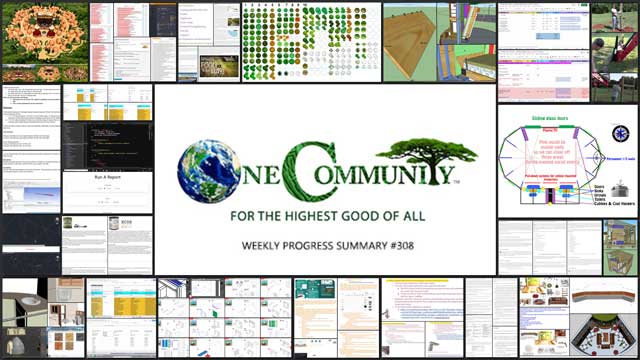
OUR MAIN OPEN SOURCE HUBS
Click on each icon to be taken to the corresponding Highest Good hub page.
One Community’s physical location will forward this movement as the first of many self-replicating teacher/demonstration communities, villages, and cities to be built around the world. This is the February 17th, 2019 edition (#308) of our weekly progress update detailing our team’s development and accomplishments:
Freedom by Design
One Community Progress Update #308
Here is the bullet-point list of this last week’s design and progress discussed in detail in the video above:
FREEDOM BY DESIGN: INTRO: @0:34
FREEDOM BY DESIGN: HIGHEST GOOD HOUSING: @5:58
- Continued design updates to the open source Murphy bed furniture assembly details (see below)
- Hemanth Kotaru completed his 29th week helping with the structural engineering research and calculations for the Earthbag Village, finishing initial cost analysis and summary for why we chose 12D nails (see below)
- Anvita Kumari Pandey completed her 32nd week volunteering and helping with the Earthbag Village Materials and Costs, working on the 6 dome cluster patio and Tropical Atrium cost analysis details (see below)
- Shadi Kennedy completed his 40th week leading the development of the Murphy bed instructions (see below)
- Dan Alleck completed his 37th week helping with Earthbag Village render additions, finalizing colors and perimeter plants in view of the complete village looking North (see below)
- Dean Scholz continued working on the Earthbag Village, finishing details for most of the internal furniture and starting to test textures (see below)
- Elizabeth Kahn began researching sustainable spigot options for the most sustainable spigot options page we’re developing (see below)
FREEDOM BY DESIGN: DUPLICABLE CITY CENTER: @8:22
- Continued with week 6 of our research into lake and water retention landscape creation as an alternative source of water for the Duplicable City Center Sprinkler and Emergency Systems Designs, agriculture, greywater processing, and more (see below)
- Continued building the new page sharing the best, safest, and most sustainable paints, stains, varnishes, and sealants (see below)
- Tanya Griffin, Aubryanne Boyle, and Allie Marsh completed their 7th week helping with the Duplicable City Center interior design details (see below)
- James Herrigel completed his 10th week researching the best, safest, and most sustainable paints, primers, stains, and sealers (see below)
- Sneha Dongre joined the team and completed her 1st week helping with the Duplicable City Center structural details (see below)
- Continued adding all the Highest Good Food rollout plan details to our staging page (see below)
- Continued writing the behind-the-scenes narrative and detailed food rollout plan for the various stages of development (see below)
- Continued research and 3D design of the chicken coops needed for 100 chicks (see below)
- Added several new sections and additional details and resources to the Swales, Hügelkultur, and Soil Preparation and Amendment sections of the Soil Amendment open source hub (see below)
- Guy Grossfeld completed his 7th week working on creating an open source icon and symbol set for our permaculture designs (see below)
FREEDOM BY DESIGN: HIGHEST GOOD EDUCATION: @12:04
- With over 8 years of development invested in the Education for Life component, this part of One Community is now complete enough to no longer focus and report on it with weekly updates. That is, of course, until we move onto the property and continue the development and open sourcing process with teachers and students. Visit the Education section below for links to all the completed elements of this component and details on the final remaining action items for this area of One Community before moving onto the property and fully launching it.
- Continued working on the structural redesign of the Ultimate Classroom, evolving last week’s design to add more space, bathrooms, cubby storage, sinks, etc. (see below)
FREEDOM BY DESIGN: HIGHEST GOOD SOCIETY: @13:21
- Finished the rest of the broken and incorrect links throughout our entire 1200+ page website and then ran multiple new reports (see below)
- Jin Hua created another two new video tutorials about keyword “refactoring” and improving our keyword research and campaign design process (see below)
- Emilio Nájera continued with his 19th week as part of the marketing team, focusing on using Jin’s videos and refactoring the sustainable village, Temporary Kitchen, Large Scale Gardening, Food Forest, and Hoop House keyword strategies (see below)
- Highest Good Network software team consisting of Jordan Miller, Tyler Calvert and Justin Kunz continued developing the software (see below)
FREEDOM BY DESIGN: SUMMARY: @15:05
- How you can most help us right now and how anyone can help
CLICK HERE IF YOU’D LIKE TO RECEIVE AN EMAIL EACH WEEK WHEN WE RELEASE A NEW UPDATE
YOU CAN ALSO JOIN US THROUGH SOCIAL MEDIA
ONE COMMUNITY WEEKLY UPDATE DETAILS
FREEDOM BY DESIGN
FREEDOM BY DESIGN: HIGHEST GOOD HOUSING PROGRESS
 One Community is demonstrating freedom by design through Highest Good housing that is artistic and beautiful, more affordable, more space efficient, lasts longer, DIY buildable, and constructed with healthy and sustainable materials:
One Community is demonstrating freedom by design through Highest Good housing that is artistic and beautiful, more affordable, more space efficient, lasts longer, DIY buildable, and constructed with healthy and sustainable materials:
- Learn about: Our Upcoming Crowdfunding Campaign
- Learn about the different village models: 7 Sustainable Village Models
- Visit the open source portals for the first two: Earthbag Village OS Hub | Straw Bale Village OS Hub
This week the core team continued design updates to the open source Murphy bed furniture assembly details. This week we confirmed bed swing clearance, checked dimensions of parts 0, WT28 and WT17, and added a headboard option. You can see some of this work here.
Hemanth Kotaru (Structural Engineer) completed his 29th week helping with the structural engineering research and calculations for the Earthbag Village (Pod 1). This week he finished the initial cost analysis and summary for why we chose 12D nails. You can see some of this work-in-progress here.
Anvita Kumari Pandey (Civil Engineer) also completed her 32nd week volunteering and helping with the Earthbag Village Materials and Costs. This week she worked on the 6 dome cluster patio and Tropical Atrium cost analysis details by calculating volumes and quantities of materials and researching their costs. You can see some of this work here.
Shadi Kennedy (Artist and Graphic Designer) also completed his 40th week leading the development of the Murphy bed instructions. This week’s focus was making diagrams illustrating the installation of the frame and upright post sections, updating the details and parts for assembly of the base for the bed frame, the bed frame itself, and the feet from the bed frame assembly section. You can see some of this work-in-progress here.
Dan Alleck (Designer and Illustrator) completed his 37th week helping with Earthbag Village render additions. This week he finalized improving the colors and perimeter plants in this view of the complete village looking North and added it to the 3-perspectives image and adjusted all that image’s colors so they are better matched.
Dean Scholz (Architectural Designer) continued working on the Earthbag Village (Pod 1). Here is weekly update #149 from Dean. This week’s focus, as shown in these images, was finishing details for most of the internal furniture and starting to test textures.
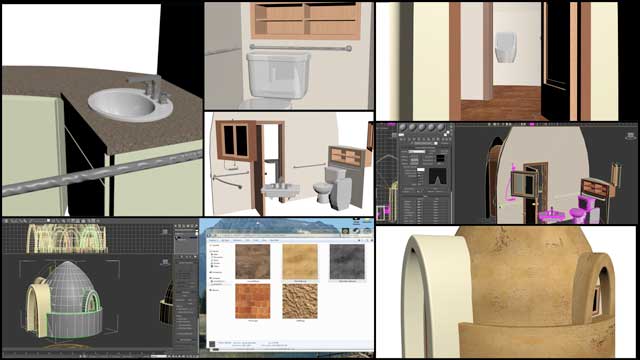
Finished Details for Most Internal Furniture and Began to Test Textures ” Click for Earthbag Village
And Elizabeth Kahn (Environmental Consultant) completed her 8th week as a researcher with our team. This week she began researching sustainable spigot options for the most sustainable spigot options page we’re developing. You can see some of this work-in-progress here.
FREEDOM BY DESIGN: DUPLICABLE CITY CENTER PROGRESS
 One Community is demonstrating freedom by design through a Duplicable and Sustainable City Center that is LEED Platinum certified/Sustainable, can feed 200 people at a time, provide laundry for over 300 people, is beautiful, spacious, and saves resources, money, and space:
One Community is demonstrating freedom by design through a Duplicable and Sustainable City Center that is LEED Platinum certified/Sustainable, can feed 200 people at a time, provide laundry for over 300 people, is beautiful, spacious, and saves resources, money, and space:
- Learn about this building and it’s function: Duplicable City Center Open Source Hub
This week, the core team continued with week 6 of our research into lake and water retention landscape creation as an alternative source of water for the Duplicable City Center Sprinkler and Emergency Systems Designs, agriculture, greywater processing, and more. This week we focused on describing the design specifics and different applications of the various kinds of dams. You can see some of this work here.
The core team also continued building the new page sharing the best, safest, and most sustainable paints, stains, varnishes, and sealants. We finished the LEED tutorial section and added the best sources for sustainable stains. You can see some of this work here.
Tanya Griffin, Aubryanne Boyle, and Allie Marsh (Interior Designers from Lotus Designs) also completed their 8th week helping with the Duplicable City Center interior design details. This week’s focus was finishing the concept boards shown here that outline, highlight, and summarize the total space. You can see some of this work here.
And James Herrigel (Student Researcher) also completed his 11th week researching the best, safest, and most sustainable paints, primers, stains, and sealers. This week’s focus was another round of research and writing up the details for the most sustainable stain options. You can see some of this behind-the-scenes work here.
Sneha Dongre (Structural Engineer) also joined the team and completed her 1st week helping with the Duplicable City Center structural details. This week she learned how to export the updated designs from the Sketchup 3D file and began the process of removing all the non-structural lines and components.
FREEDOM BY DESIGN: HIGHEST GOOD FOOD PROGRESS
 One Community is demonstrating freedom by design through Highest Good food that is more diverse, more nutritious, locally grown and sustainable, and part of our open source botanical garden model to support and share bio-diversity:
One Community is demonstrating freedom by design through Highest Good food that is more diverse, more nutritious, locally grown and sustainable, and part of our open source botanical garden model to support and share bio-diversity:
- Learn about the structures: Hoop House Hub | Aquapini & Walipini Open Source Hub
- See what we’ll be growing: Gardens & Hoop Houses | Large-scale Structures | Food Forest | TA
This week, the core team continued adding all the Highest Good Food rollout plan details to our staging page. This week we wrote most of the details for the 10-20 person rollout section. You can see some of this behind-the-scenes work here.
The core team also continued writing the behind-the-scenes narrative and detailed food rollout plan for the various stages of development. This week we continued research into what kind of fence is best for goats. We found a detailed video (Corner Post Installation and Bracing – Detailed Video) that clearly demonstrates corner fencing and bracing the corners for added strength. Because of the quality and informative nature of this video we will be researching further videos by the same author relating to gate installation and fence stretching.
And the core team continued research and 3D design of the chicken coops needed for 100 chicks. This week we researched ventilation, and redesigned the windows for even better light and ventilation by installing two upper vents, adding adjustable sliding ventilation hatches, a pop hole, night resting racks, and landing rods in front of the nesting boxes. You can see some of this behind-the-scenes work here.
Additionally, the core team added several new sections and additional details and resources to the Swales, Hügelkultur, and Soil Preparation and Amendment sections of the Soil Amendment open source hub. You can see some of this work here.
And last but not least, Guy Grossfeld (Graphic Designer) completed his 7th week working on creating an open source icon and symbol set for our permaculture designs. What you see here are the icons created so far.
FREEDOM BY DESIGN: HIGHEST GOOD EDUCATION PROGRESS
 One Community is building the foundations for how humanity creates a sustainable world through Highest Good education that is for all ages, applicable in any environment, adaptable to individual needs, far exceeds traditional education standards, and more fun for both the teachers and the students. This component of One Community is about 95% complete with only the Open Source School Licensing and Ultimate Classroom construction and assembly details remaining to be finished. With over 8 years of work invested in the process, the sections below are all complete until we move onto the property and continue the development and open sourcing process with teachers and students – a development process that is built directly into the structure of the education program and everything else we’re creating too:
One Community is building the foundations for how humanity creates a sustainable world through Highest Good education that is for all ages, applicable in any environment, adaptable to individual needs, far exceeds traditional education standards, and more fun for both the teachers and the students. This component of One Community is about 95% complete with only the Open Source School Licensing and Ultimate Classroom construction and assembly details remaining to be finished. With over 8 years of work invested in the process, the sections below are all complete until we move onto the property and continue the development and open sourcing process with teachers and students – a development process that is built directly into the structure of the education program and everything else we’re creating too:
- Program Overview: Education Open Source Hub
- How the components work together: How to use the Education for Life Program
- Lesson Plans for Life – Lesson Plans How-to
- Foundations of Outstanding Leaders, Teachers, and Communicators
- Curriculum for Life
- Teaching Strategies for Life
- Learning Tools and Toys for Life
- Evaluation and Evolution
This week the core team continued working on the structural redesign of the Ultimate Classroom. This week we evolved last week’s design to add more space, bathrooms, cubby storage, sinks, and the other details shown here.
FREEDOM BY DESIGN: HIGHEST GOOD SOCIETY PROGRESS
 One Community is demonstrating freedom by design through a Highest Good society approach to living that is founded on fulfilled living, the study of meeting human needs, Community, and making a difference in the world:
One Community is demonstrating freedom by design through a Highest Good society approach to living that is founded on fulfilled living, the study of meeting human needs, Community, and making a difference in the world:
- Read the Highest Good society overview: Highest Good Society
- Learn about the model for fulfilled living and sharing: A Day in the Life
- Learn about the 4 economic models: RBE | For-profit | Non-profit | Entrepreneurship
- Learn about our open source community collaboration and management software: The Highest Good Network
This week the core team finished the rest of the broken and incorrect links throughout our entire 1200+ page website and then ran multiple new reports to confirm the site is cleared of broken links. You can see some of this work and process here.
Jin Hua (Web and Graphic Designer) created another two new video tutorials about keyword “refactoring” and improving our keyword research and campaign design process. Refactoring is removing broad or useless keywords. You can see some screenshots from these videos here.
Emilio Nájera (Digital Marketer) also continued with his 19th week as part of the marketing team. This week’s focus was using Jin’s videos and refactoring the sustainable village, Temporary Kitchen, Large Scale Gardening, Food Forest, and Hoop House keyword strategies. You can see some of this work here.
In addition to this, the Highest Good Network software team consisting of Jordan Miller (Web Developer), Tyler Calvert (Full-stack Software Engineer), and Justin Kunz (Software Engineer) continued developing the software. This week the team started building new Redux routes for projects & team pages, created the front-end design template for the reports page, added the ability to run reports on multiple teams/projects/people, continued developing the user interface for user management, and replaced bootstrap with react-strap. You can see some of this work here.
AND WE PRODUCED THIS WEEKLY UPDATES BLOG – CLICK HERE TO SUBSCRIBE
FOLLOW ONE COMMUNITY’S PROGRESS (click icons for our pages)
FREEDOM BY DESIGN: INVESTOR PAGES
FREEDOM BY DESIGN: GET INVOLVED
CONSULTANTS | WAYS ANYONE CAN HELP | MEMBERSHIP
CLICK HERE FOR ALL PAST UPDATES
WHAT ONE COMMUNITY IS CREATING
FREEDOM BY DESIGN
One Community is creating a place to grow together and change the world together. We are creating a space that helps each other live in integrity with each other and the planet as we strive to be the greatest versions of ourselves. We do this by harmoniously respecting each other, nature, and the rest of our one shared planet, guided by freedom by design.
Our goal is to demonstrate what we feel is the most sustainable, healthy, and fun environment we can create. A place based on compassion, kindness, and collaboration. This replicable community will serve as an example of what is possible, guided by freedom by design.
Throughout our design process, we are open sourcing and free-sharing everything needed for construction and replication. This includes what we call “Highest Good” approaches to food, energy, housing, education, for-profit and non-profit economics design, social architecture, fulfilled living, stewardship practices, and more. We are creating these resources for implementation as individual components or complete developments called teacher/demonstration hubs. These hubs will help launch additional hubs as awareness and knowledge grow, guided by freedom by design.
FREEDOM BY DESIGN: BUILDING THE FIRST OF MANY
One Community will be the first teacher/demonstration hub. It will function as an experiential-learning model that facilitates mass participation to address humanity’s most pressing challenges through: A replicable model for expansion, building seven self-sufficient village/city prototypes, becoming the world leader in open-source sustainability solutions, and evolving and expanding ALL aspects of sustainable living, guided by freedom by design.
WHY ONE COMMUNITY IS CREATING THIS FREEDOM BY DESIGN
The One Community self-replicating model, guided by freedom by design, is capable of creating a sustainable planet within 30 years. We will achieve this by establishing successful teacher/demonstration hubs on every continent. Villages include designs appropriate for each of the five main types of climates. They also include options for even the most challenged economies. These hubs will collaborate with one another, share ideas, and resources, and work together as a network to heal the planet. They will also transform the global lifestyle into a more enjoyable, fulfilling, healthy, and sustainable one.
The specifics of how One Community is accomplishing this, guided by freedom by design, can be found on the One Community Solution Model to Create Solution-creating Models Page. Research supporting and showing the benefits of a model like this can be found in our Research and Resources Articles Archive.
Even if we don’t achieve our ultimate goal of global transformation, a self-replicating teacher/demonstration model like this, guided by freedom by design, will take a relatively short period of time to positively affect millions while inspiring millions more. For One Community residents (the Pioneer Team), the idea of creating and sharing the social and recreational experience with visitors is also fun, exciting, fulfilling, and an additional reason why we are creating this, guided by freedom by design.
INSPIRING SUSTAINABILITY WITH OPEN SOURCE
One Community’s four-phase strategy for the creation of solution models that create solution creating models uses open source blueprints for duplication that simultaneously address all aspects of the human experience (food, energy, housing, education, social inequality and injustice, fulfilled living, etc.), guided by freedom by design. We see these areas as interdependent and requiring a comprehensive solution if humanity is to move ecologically, socially, economically, and permanently towards a truly sustainable future for everyone.
Our open source model and blueprints engage and inspire people while simultaneously making sustainable living more affordable and easy to replicate, guided by freedom by design. By free-sharing the step-by-step plans people need for duplication, inviting people to participate, and demonstrating sustainable teacher/demonstration hubs as a more desirable way of living, the model will predictably expand on its own.
It is this approach, guided by freedom by design, we see uniting the world and leading to a new Golden Age for humanity. While we understand that not everyone believes this is even possible, we are nonetheless bringing together all those that do see this as possible as the non-profit think tank of forward-thinking individuals willing to design, build, and open source project-launch blueprint and free-share it for The Highest Good of All.
COMPREHENSIVE SOLUTION TO HUMANITY’S NEEDS
One Community is open source sharing an evolution of sustainable living that addresses the complete human experience, guided by freedom by design. We are doing this because we see the solutions for global food, housing, energy, education, social inequality, ethical business practices, earth regenerative practices, and a desire for a more fulfilling living experience as inseparably interconnected. As a comprehensive solution, we are addressing all these areas simultaneously and open source free-sharing everything needed for individual duplication and/or duplication as complete self-replicating teacher/demonstration communities, villages, and cities to be built around the world.
As we address and open source share these areas we will establish a living example of the first teacher/demonstration village purposed to teach others, guided by freedom by design. To maximally facilitate duplication, One Community will provide seven duplicable examples and function indefinitely as a place people can visit and a non-profit and open source think tank continuing to further evolve and share solutions in all of the above areas and more. We will also provide hands-on experience and training. Most importantly, growing upon our sustainable foundation, we will endlessly make this comprehensive solution even more widely known and globally accessible, understandable and diversely duplicable, and inspiring and desirable as a model worth duplicating.
GLOBALLY IMPLEMENTABLE REPLICATION MODEL
The more people that are inspired and desiring for themselves what it is that One Community creates, the more demand there will be for spreading the One Community model, guided by freedom by design. This leads to the directing of financial resources and resourceful people where we believe they are needed most: the establishment of additional sustainable communities around the world. We also feel this duplication will specifically happen quickly internationally due to the affordability of overseas land, less restrictive building environments, and the spirit of adventure in many people who really desire to make a difference for those who need it most.
To meet the increasing demand for sustainability that we are contributing to, we are coordinating with manufacturers, education institutions, individuals, and vendors, guided by freedom by design. This is also part of this model to help the world. Its purpose is to facilitate more engagement in the sustainability industry, produce the absolute best possible consumer value, and the most convenient delivery of goods and methodologies for building sustainable living communities and sustainable living components.
This means we not only provide education and increase needed sustainability resources, but we also address the underlying roadblocks to a sustainable planet by decreasing the cost and simultaneously increasing the demand and generating financial support for global sustainability, philanthropy, and humanitarian movements and organizations, guided by freedom by design.
As demand increases, so too will the ways to participate, guided by freedom by design. Right now people are participating as consultants or partners donating time to our 501(c)(3) nonprofit organization, and others are more involved as Pioneers of the core team that will be moving to the property. We also have options for people to just follow our progress or participate through internet contribution.
Once the supportive physical infrastructure is about 30% developed, One Community will be ready to additionally expand what we offer to include scholarships, free weekend learning groups, core team members choosing to travel abroad to help others get established too, handling the marketing for all similar models operating for The Highest Good of All, and hosting classes and other sponsored events to promote and demonstrate additional methodologies, all guided by freedom by design.
We also imagine the high likelihood that our organization will become a foundation that can be trusted as the donation point for the distribution of monies to help others to establish this model also, guided by freedom by design.
Self-Replicating Eco-Communities – One Community Weekly Progress Update #307
Posted on February 10, 2019 by One Community
Sustainable and self-replicating eco-communities are one path to global sustainability. One Community is designing them with open source models covering food, energy, housing, education, for-profit and non-profit economic design, social architecture, fulfilled living, global stewardship practices, and more.
- Here’s our project overview
- Here’s our world-change methodology
- Here’s how this becomes self-replicating
- Here’s how we are open source and free-sharing all the do-it-yourself designs

OUR MAIN OPEN SOURCE HUBS
Click on each icon to be taken to the corresponding Highest Good hub page.
One Community’s physical location will forward this movement as the first of many self-replicating teacher/demonstration communities, villages, and cities to be built around the world. This is the February 10, 2019 edition (#307) of our weekly progress update detailing our team’s development and accomplishments:
Self-Replicating Eco-Communities
One Community Progress Update #307
Here is the bullet-point list of last week’s design and progress discussed in detail in the video above:
SELF-REPLICATING ECO-COMMUNITIES: INTRO: @0:34
SELF-REPLICATING ECO-COMMUNITIES: HIGHEST GOOD HOUSING: @6:31
- Continued design updates to the open source Murphy bed furniture assembly details (see below)
- Anvita Kumari Pandey completed her 31st week volunteering and now helping with the Earthbag Village Materials and Costs (see below)
- Shadi Kennedy completed his 39th week leading the development of the Murphy bed instructions (see below)
- Dan Alleck completed his 36th week helping with Earthbag Village render additions, improving the colors and perimeter plants in a view of the complete village looking North (see below)
- Dean Scholz continued working on the Earthbag Village, finishing the urinal, shower, sink elements (see below)
- Elizabeth Kahn researched alternatives to the chemical block used in waterless urinals for the most sustainable urinal options page (see below)
SELF-REPLICATING ECO-COMMUNITIES: DUPLICABLE CITY CENTER: @8:31
- Continued with week 5 of our research into lake and water retention landscape creation as an alternative source of water for the Duplicable City Center Sprinkler and Emergency Systems Designs, agriculture, greywater processing, and more (see below)
- Dipti Dhondarkar continued developing the lighting specifics for the City Center, integrating the final rounds of requested changes to the AutoCAD layouts and lighting spreadsheets and then PDFing the final lighting reports for all the areas (see below)
- Tanya Griffin, Aubryanne Boyle, and Allie Marsh completed their 7th week helping with the Duplicable City Center interior design details (see below)
- David Olivero continued helping finish the City Center HVAC Designs, adding additional labels to the AutoCAD, checking all layers, and adding additional cost analysis details (see below)
- James Herrigel completed his 10th week researching the best, safest, and most sustainable paints, primers, stains, and sealers (see below)
SELF-REPLICATING ECO-COMMUNITIES: HIGHEST GOOD FOOD: @10:35
- Continued writing the behind-the-scenes narrative and detailed food rollout plan for the various stages of development (see below)
- Continued research and design of the chicken coops needed for 100 chicks (see below)
- Guy Grossfeld completed his 6th week working on creating an open source icon and symbol set for our permaculture designs (see below)
SELF-REPLICATING ECO-COMMUNITIES: HIGHEST GOOD EDUCATION: @11:35
- With over 8 years of development invested in the Education for Life component, this part of One Community is now complete enough to no longer focus and report on it with weekly updates. That is, of course, until we move onto the property and continue the development and open sourcing process with teachers and students. Visit the Education section below for links to all the completed elements of this component and details on the final remaining action items for this area of One Community before moving onto the property and fully launching it.
- Continued working on the structural redesign of the Ultimate Classroom (see below)
SELF-REPLICATING ECO-COMMUNITIES: HIGHEST GOOD SOCIETY: @12:47
- Finished the 2nd half of the broken and incorrect links throughout our entire 1200+ page website and then ran a new report and started on the next 400 links to fix (see below)
- Jin Hua created two new video tutorials about keyword “refactoring” (see below)
- Emilio Nájera continued with his 18th week as part of the marketing team, using Jin’s videos and refactoring the Highest Good Food, AutoCAD, Resource Based Economy, and True Community keyword strategies (see below)
- Highest Good Network software team consisting of Jordan Miller, Tyler Calvert and Justin Kunz continued developing the software (see below)
SELF-REPLICATING ECO-COMMUNITIES: SUMMARY: @14:25
- How you can most help us right now and how anyone can help
CLICK HERE IF YOU’D LIKE TO RECEIVE AN EMAIL EACH WEEK WHEN WE RELEASE A NEW UPDATE
YOU CAN ALSO JOIN US THROUGH SOCIAL MEDIA
ONE COMMUNITY WEEKLY UPDATE DETAILS
SELF-REPLICATING ECO-COMMUNITIES: HIGHEST GOOD HOUSING PROGRESS
 One Community is facilitating self-replicating eco-communities through Highest Good housing that is artistic and beautiful, more affordable, more space efficient, lasts longer, DIY buildable, and constructed with healthy and sustainable materials:
One Community is facilitating self-replicating eco-communities through Highest Good housing that is artistic and beautiful, more affordable, more space efficient, lasts longer, DIY buildable, and constructed with healthy and sustainable materials:
- Learn about: Our Upcoming Crowdfunding Campaign
- Learn about the different village models: 7 Sustainable Village Models
- Visit the open source portals for the first two: Earthbag Village OS Hub | Straw Bale Village OS Hub
This week the core team continued design updates to the open source Murphy bed furniture assembly details. This week we proposed possible placement of outlets, specifically located the lights above the bed, and rechecked all parts dimensions. You can see some of this work here.
Anvita Kumari Pandey (Civil Engineer) also completed her 31st week volunteering and now helping with the Earthbag Village Materials and Costs. This week she researched bulk earthbag tube purchasing options, worked on the 3-dome patio cost analysis, and the Tropical Atrium cost analysis. You can see some of this work here.
Shadi Kennedy (Artist and Graphic Designer) also completed his 39th week leading the development of the Murphy bed instructions. This week’s focus was creating diagrams implementing the new way we will attach the bed frame to the wall sections and integrating dimensions and measurement instructions for placement of the lights under the loft top section. You can see some of this work-in-progress here.
Dan Alleck (Designer and Illustrator) completed his 36th week helping with Earthbag Village render additions. This week he worked on improving the colors and perimeter plants in this view of the complete village looking North.
Dean Scholz (Architectural Designer) continued working on the Earthbag Village (Pod 1). Here is weekly update #148 from Dean. This week’s focus, as shown in these images, was finishing the urinal, shower, and sink elements.
And Elizabeth Kahn (Environmental Consultant) completed her 7th week as a researcher with our team. This week she researched alternatives to the chemical block used in waterless urinals for the most sustainable urinal options page we’re developing. You can see some of this work-in-progress here.
SELF-REPLICATING ECO-COMMUNITIES: DUPLICABLE CITY CENTER PROGRESS
 One Community is facilitating self-replicating eco-communities through a Duplicable and Sustainable City Center that is LEED Platinum certified/Sustainable, can feed 200 people at a time, provide laundry for over 300 people, is beautiful, spacious, and saves resources, money, and space:
One Community is facilitating self-replicating eco-communities through a Duplicable and Sustainable City Center that is LEED Platinum certified/Sustainable, can feed 200 people at a time, provide laundry for over 300 people, is beautiful, spacious, and saves resources, money, and space:
- Learn about this building and it’s function: Duplicable City Center Open Source Hub
This week, the core team continued with week 5 of our research into lake and water retention landscape creation as an alternative source of water for the Duplicable City Center Sprinkler and Emergency Systems Designs, agriculture, greywater processing, and more. This week we continued adding to and organizing our research into a step-by-step process and explanation and created the first supporting graphic. You can see some of this work here.
Dipti Dhondarkar (Electrical Engineer) continued developing the lighting specifics for the City Center. This is Dipti’s 111th week volunteering on this task and the focus this week was integrating the final rounds of requested changes to the AutoCAD layouts and lighting spreadsheets and then PDFing the final lighting reports for all the areas. You can see some of this work here.
Tanya Griffin, Aubryanne Boyle, and Allie Marsh (Interior Designers from Lotus Designs) also completed their 7th week helping with the Duplicable City Center interior design details. This week’s focus was creating design overview graphics so we can update the designs in 3D, finalizing the floor design and colors, and adding more furniture and lighting details to the cost analysis spreadsheet. You can see some of this work here.
David Olivero (Mechanical Engineer & Data Scientist) also continued helping finish the City Center HVAC Designs. This week he focused on adding additional labels to the AutoCAD, checking all layers, and adding additional cost analysis details. You can see some of this work here.
And James Herrigel (Student Researcher) also completed his 10th week researching the best, safest, and most sustainable paints, primers, stains, and sealers. This week’s focus was researching and writing up the details for the most sustainable stain options. You can see some of this behind-the-scenes work here.
SELF-REPLICATING ECO-COMMUNITIES: HIGHEST GOOD FOOD PROGRESS
 One Community is facilitating self-replicating eco-communities through Highest Good food that is more diverse, more nutritious, locally grown and sustainable, and part of our open source botanical garden model to support and share bio-diversity:
One Community is facilitating self-replicating eco-communities through Highest Good food that is more diverse, more nutritious, locally grown and sustainable, and part of our open source botanical garden model to support and share bio-diversity:
- Learn about the structures: Hoop House Hub | Aquapini & Walipini Open Source Hub
- See what we’ll be growing: Gardens & Hoop Houses | Large-scale Structures | Food Forest | TA
This week the core team continued writing the behind-the-scenes narrative and detailed food rollout plan for the various stages of development. This week we continued research into what kind of fence is best for goats. We reviewed videos and extracted the relevant info to our behind-the-scenes food Google Doc, some of which you can see here.
The core team also continued research and 3D design of the chicken coops needed for 100 chicks. This week we redesigned the roof and nesting box. You can see some of this behind-the-scenes work here.
And Guy Grossfeld (Graphic Designer) completed his 6th week working on creating an open source icon and symbol set for our permaculture designs. What you see here are the icons created so far.
SELF-REPLICATING ECO-COMMUNITIES: HIGHEST GOOD EDUCATION PROGRESS
 One Community is building the foundations for how humanity creates a sustainable world through Highest Good education that is for all ages, applicable in any environment, adaptable to individual needs, far exceeds traditional education standards, and more fun for both the teachers and the students. This component of One Community is about 95% complete with only the Open Source School Licensing and Ultimate Classroom construction and assembly details remaining to be finished. With over 8 years of work invested in the process, the sections below are all complete until we move onto the property and continue the development and open sourcing process with teachers and students – a development process that is built directly into the structure of the education program and everything else we’re creating too:
One Community is building the foundations for how humanity creates a sustainable world through Highest Good education that is for all ages, applicable in any environment, adaptable to individual needs, far exceeds traditional education standards, and more fun for both the teachers and the students. This component of One Community is about 95% complete with only the Open Source School Licensing and Ultimate Classroom construction and assembly details remaining to be finished. With over 8 years of work invested in the process, the sections below are all complete until we move onto the property and continue the development and open sourcing process with teachers and students – a development process that is built directly into the structure of the education program and everything else we’re creating too:
- Program Overview: Education Open Source Hub
- How the components work together: How to use the Education for Life Program
- Lesson Plans for Life – Lesson Plans How-to
- Foundations of Outstanding Leaders, Teachers, and Communicators
- Curriculum for Life
- Teaching Strategies for Life
- Learning Tools and Toys for Life
- Evaluation and Evolution
This week the core team continued working on the structural redesign of the Ultimate Classroom. We brainstormed options and came up with the new design proposal shown here.
SELF-REPLICATING ECO-COMMUNITIES: HIGHEST GOOD SOCIETY PROGRESS
 One Community is facilitating self-replicating eco-communities through a Highest Good society approach to living that is founded on fulfilled living, the study of meeting human needs, Community, and making a difference in the world:
One Community is facilitating self-replicating eco-communities through a Highest Good society approach to living that is founded on fulfilled living, the study of meeting human needs, Community, and making a difference in the world:
- Read the Highest Good society overview: Highest Good Society
- Learn about the model for fulfilled living and sharing: A Day in the Life
- Learn about the 4 economic models: RBE | For-profit | Non-profit | Entrepreneurship
- Learn about our open source community collaboration and management software: The Highest Good Network
This week the core team finished the 2nd half of the broken and incorrect links throughout our entire 1200+ page website and then ran a new report and started on the next 400 links to fix. You can see some of this work and process here and we have about 200 more to go.
Jin Hua (Web and Graphic Designer) created two new video tutorials about keyword “refactoring.” Refactoring is removing broad or useless keywords. You can see some screenshots from these videos here.
Emilio Nájera (Digital Marketer) also continued with his 18th week as part of the marketing team. This week’s focus was using Jin’s videos and refactoring the Highest Good Food, AutoCAD, Resource Based Economy, and True Community keyword strategies. You can see some of this work here.
In addition to this, the Highest Good Network software team consisting of Jordan Miller (Web Developer), Tyler Calvert (Full-stack Software Engineer), and Justin Kunz (Software Engineer) continued developing the software. This week the team created the new Projects Page, separated the Table Display component for reusability, created the basic admin style layout, finished the Redux transition and merged it with the master branch, and worked on developing the time entries functionality. You can see some of this work here.
AND WE PRODUCED THIS WEEKLY UPDATES BLOG – CLICK HERE TO SUBSCRIBE
FOLLOW ONE COMMUNITY’S PROGRESS (click icons for our pages)
INVESTOR PAGES
GET INVOLVED
CONSULTANTS | WAYS ANYONE CAN HELP | MEMBERSHIP
CLICK HERE FOR ALL PAST UPDATES
WHAT ONE COMMUNITY IS CREATING
SELF-REPLICATING ECO-COMMUNITIES
One Community is creating a place to grow together and change the world together. We are creating a space that helps each other live in integrity with each other and the planet as we strive to be the greatest versions of ourselves. We do this by harmoniously respecting each other, nature, and the rest of our one shared planet, fostering the development of self-replicating eco-communities.
Our goal is to demonstrate what we feel is the most sustainable, healthy, and fun environment we can create. A place based on compassion, kindness, and collaboration. This replicable community will serve as an example of what is possible, inspiring the development of self-replicating eco-communities.
Throughout our design process, we are open sourcing and free-sharing everything needed for construction and replication. This includes what we call “Highest Good” approaches to food, energy, housing, education, for-profit and non-profit economics design, social architecture, fulfilled living, stewardship practices, and more. We are creating these resources for implementation as individual components or complete developments called teacher/demonstration hubs. These hubs will help launch additional hubs as awareness and knowledge grow, fostering the development of self-replicating eco-communities.
SELF-REPLICATING ECO-COMMUNITIES: BUILDING THE FIRST OF MANY
One Community will be the first teacher/demonstration hub. It will function as an experiential-learning model that facilitates mass participation to address humanity’s most pressing challenges through: A replicable model for expansion, building seven self-sufficient village/city prototypes, becoming the world leader in open-source sustainability solutions, and evolving and expanding ALL aspects of sustainable living, fostering the development of self-replicating eco-communities.
WHY ONE COMMUNITY IS CREATING THIS
The One Community self-replicating model is capable of creating a sustainable planet within 30 years. We will achieve this by establishing successful teacher/demonstration hubs on every continent. Villages include designs appropriate for each of the five main types of climates. They also include options for even the most challenged economies. These hubs will collaborate with one another, share ideas, and resources, and work together as a network to heal the planet, fostering the development of self-replicating eco-communities. They will also transform the global lifestyle into a more enjoyable, fulfilling, healthy, and sustainable one.
The specifics of how One Community is accomplishing this can be found on the One Community Solution Model to Create Solution-creating Models Page. Research supporting and showing the benefits of a model like this can be found in our Research and Resources Articles Archive, which explores the effectiveness and impact of self-replicating eco-communities.
Even if we don’t achieve our ultimate goal of global transformation, a self-replicating teacher/demonstration model like this, as well as self-replicating eco-communities, will take a relatively short period of time to positively affect millions while inspiring millions more. For One Community residents (the Pioneer Team), the idea of creating and sharing the social and recreational experience with visitors is also fun, exciting, fulfilling, and an additional reason why we are creating this.
INSPIRING SUSTAINABILITY WITH OPEN SOURCE
One Community’s four-phase strategy for the creation of solution models that create solution creating models uses open source blueprints for duplication that simultaneously address all aspects of the human experience (food, energy, housing, education, social inequality and injustice, fulfilled living, etc.). We see these areas as interdependent and requiring a comprehensive solution if humanity is to move ecologically, socially, economically, and permanently towards a truly sustainable future for everyone, facilitated by self-replicating eco-communities.
Our open source model and blueprints engage and inspire people while simultaneously making sustainable living more affordable and easy to replicate. By free-sharing the step-by-step plans people need for duplication, inviting people to participate, and demonstrating sustainable teacher/demonstration hubs as a more desirable way of living, the model will predictably expand on its own, fostering the growth of self-replicating eco-communities.
It is this approach we see uniting the world and leading to a new Golden Age for humanity. While we understand that not everyone believes this is even possible, we are nonetheless bringing together all those that do see this as possible as the non-profit think tank of forward-thinking individuals willing to design, build, and open source project-launch blueprint and free-share it for The Highest Good of All, including the establishment of self-replicating eco-communities.
COMPREHENSIVE SOLUTION TO HUMANITY’S NEEDS
One Community is open source sharing an evolution of sustainable living that addresses the complete human experience. We are doing this because we see the solutions for global food, housing, energy, education, social inequality, ethical business practices, earth regenerative practices, and a desire for a more fulfilling living experience as inseparably interconnected. As a comprehensive solution, we are addressing all these areas simultaneously and open source free-sharing everything needed for individual duplication and/or duplication as complete self-replicating teacher/demonstration communities, villages, and cities, including self-replicating eco-communities, to be built around the world.
As we address and open source share these areas we will establish a living example of the first teacher/demonstration village purposed to teach others. To maximally facilitate duplication, One Community will provide seven duplicable examples and function indefinitely as a place people can visit and a non-profit and open source think tank continuing to further evolve and share solutions in all of the above areas and more. We will also provide hands-on experience and training. Most importantly, growing upon our sustainable foundation, we will endlessly make this comprehensive solution even more widely known and globally accessible, understandable and diversely duplicable, and inspiring and desirable as a model worth duplicating, including self-replicating eco-communities.
GLOBALLY IMPLEMENTABLE REPLICATION MODEL
The more people that are inspired and desiring for themselves what it is that One Community creates, the more demand there will be for spreading the One Community model. This leads to the directing of financial resources and resourceful people where we believe they are needed most: the establishment of additional sustainable communities around the world, including self-replicating eco-communities. We also feel this duplication will specifically happen quickly internationally due to the affordability of overseas land, less restrictive building environments, and the spirit of adventure in many people who really desire to make a difference for those who need it most.
To meet the increasing demand for sustainability that we are contributing to, we are coordinating with manufacturers, education institutions, individuals, and vendors. This is also part of this model to help the world. Its purpose is to facilitate more engagement of the sustainability industry, produce the absolute best possible consumer value, and the most convenient delivery of goods and methodologies for building sustainable living communities and sustainable living components, including self-replicating eco-communities.
This means we not only provide education and increase needed sustainability resources, but we also address the underlying roadblocks to a sustainable planet by decreasing the cost and simultaneously increasing the demand and generating financial support for global sustainability, philanthropy, and humanitarian movements and organizations, including self-replicating eco-communities.
As demand increases, so too will the ways to participate. Right now people are participating as consultants or partners donating time to our 501(c)(3) nonprofit organization, and others are more involved as Pioneers of the core team that will be moving to the property. We also have options for people to just follow our progress or participate through internet contribution, including self-replicating eco-communities.
Once the supportive physical infrastructure is about 30% developed, One Community will be ready to additionally expand what we offer to include scholarships, free weekend learning groups, core team members choosing to travel abroad to help others get established too, handling the marketing for all similar models operating for The Highest Good of All, and hosting classes and other sponsored events to promote and demonstrate additional methodologies, including self-replicating eco-communities.
We also imagine the high likelihood that our organization will become a foundation that can be trusted as the donation point for the distribution of monies to help others to establish this model also, including self-replicating eco-communities.
Highest Good Living – One Community Weekly Progress Update #306
Posted on February 3, 2019 by One Community
Highest Good living is living to the best of our ability for the Highest Good of all people and life on our shared planet. One Community is supporting this through Highest Good and open source designs, tools, tutorials, and sustainability resources covering food, energy, housing, education, for-profit and non-profit economic design, social architecture, fulfilled living, global stewardship practices, and more.
- Here’s our project overview
- Here’s our world-change methodology
- Here’s how this becomes self-replicating
- Here’s how we are open source and free-sharing all the do-it-yourself designs

OUR MAIN OPEN SOURCE HUBS
Click on each icon to be taken to the corresponding Highest Good hub page.
One Community’s physical location will forward this movement as the first of many self-replicating teacher/demonstration communities, villages, and cities to be built around the world. This is the February 3rd, 2019 edition (#306) of our weekly progress update detailing our team’s development and accomplishments:
Highest Good Living
One Community Progress Update #306
Here is the bullet-point list of this last week’s design and progress discussed in detail in the video above:
HIGHEST GOOD LIVING: INTRO: @0:34
HIGHEST GOOD LIVING: HOUSING: @8:10
- Continued design updates to the open source Murphy bed furniture assembly details (see below)
- Anvita Kumari Pandey completed her 31st week volunteering and now helping with the Earthbag Village Materials and Costs (see below)
- Shadi Kennedy completed his 38th week leading the development of the Murphy bed instructions (see below)
- Dan Alleck completed revisions and additions to render of complete Earthbag Village looking West (see below)
- Dean Scholz continued working on the Earthbag Village, building the urinal and shower elements (see below)
- Elizabeth Kahn finished researching the most sustainable urinal options and started researching feminine accessories and eco-alternatives to the chemical block that is usually used in urinals (see below)
HIGHEST GOOD LIVING: DUPLICABLE CITY CENTER: @9:57
- Continued with week 4 of our research into lake and water retention landscape creation as an alternative source of water for the Duplicable City Center Sprinkler and Emergency Systems Designs, agriculture, greywater processing, and more (see below)
- Reviewed all the latest AutoCAD updates for the lighting specifics for the City Center (see below)
- Tanya Griffin, Aubryanne Boyle, and Allie Marsh completed their 6th week helping with the Duplicable City Center interior design details (see below)
- David Olivero continued helping finish the City Center HVAC Designs (see below)
- James Herrigel completed his 9th week researching the best, safest, and most sustainable paints (see below)
HIGHEST GOOD LIVING: FOOD: @11:58
- Continued writing the behind-the-scenes narrative and detailed food rollout plan for the various stages of development (see below)
- Began research and design of the chicken coops needed for 100 chicks (see below)
- Guy Grossfeld (Graphic Designer) completed his 5th week working on creating an open source icon and symbol set for our permaculture designs (see below)
HIGHEST GOOD LIVING: EDUCATION: @12:50
- With over 8 years of development invested in the Education for Life component, this part of One Community is now complete enough to no longer focus and report on it with weekly updates. That is, of course, until we move onto the property and continue the development and open sourcing process with teachers and students. Visit the Education section below for links to all the completed elements of this component and details on the final remaining action items for this area of One Community before moving onto the property and fully launching it.
- Continued working on the structural aspects of the Ultimate Classroom (see below)
HIGHEST GOOD LIVING: SOCIETY: @14:11
- Fixed half of the broken and incorrect links throughout our entire 1200+ page website (see below)
- Emilio Nájera added additional keywords for the Consensus,Resource Based Economy, and Open Source pages and worked on new keyword lists for the Evolving Sustainability, Water-saving Shower Heads, Most Sustainable Toilets, Most Sustainable Paints, and Open Source Permaculture Design pages (see below)
- Jin Hua reviewed all of Emilio’s work and created two video tutorials to further assist him in improving and refining all the keyword lists he’s completed so far (see below)
- Highest Good Network software team consisting of Jordan Miller, Tyler Calvert and Justin Kunz continued developing the software (see below)
HIGHEST GOOD LIVING: SUMMARY: @15:48
- How you can most help us right now and how anyone can help
CLICK HERE IF YOU’D LIKE TO RECEIVE AN EMAIL EACH WEEK WHEN WE RELEASE A NEW UPDATE
YOU CAN ALSO JOIN US THROUGH SOCIAL MEDIA
ONE COMMUNITY WEEKLY UPDATE DETAILS
HIGHEST GOOD LIVING: HOUSING PROGRESS
 One Community is developing highest good living through Highest Good housing that is artistic and beautiful, more affordable, more space efficient, lasts longer, DIY buildable, and constructed with healthy and sustainable materials:
One Community is developing highest good living through Highest Good housing that is artistic and beautiful, more affordable, more space efficient, lasts longer, DIY buildable, and constructed with healthy and sustainable materials:
- Learn about: Our Upcoming Crowdfunding Campaign
- Learn about the different village models: 7 Sustainable Village Models
- Visit the open source portals for the first two: Earthbag Village OS Hub | Straw Bale Village OS Hub
This week the core team tested and confirmed the Murphy bed furniture designs will work with 8-foot ceilings and queen-size beds.
Anvita Kumari Pandey (Civil Engineer) also completed her 31st week volunteering and now helping with the Earthbag Village Materials and Costs. This week she worked on earthbag tube-filling cement quantity and earthbag quantity calculations. You can see some of this work here.
Shadi Kennedy (Artist and Graphic Designer) also completed his 38th week leading the development of the Murphy bed instructions. This week’s focus was more diagram updates illustrating the wall section assembly, creating new placeholder images, and beginning the electrical details. You can see some of this work-in-progress here.
Dan Alleck (Designer and Illustrator) completed his 35th week helping with Earthbag Village render additions. This week he completed revisions and additions to this view of the complete village looking West. This is on the website now too.
Dean Scholz (Architectural Designer) continued working on the Earthbag Village (Pod 1). Here is weekly update #147 from Dean. This week’s focus, as shown in these images, was working on building the urinal and shower elements.
And Elizabeth Kahn (Environmental Consultant) completed her 6th week as a researcher with our team. This week she finished researching the most sustainable urinal options and started researching feminine accessories and eco-alternatives to the chemical block that is usually used in urinals. You can see some of this work-in-progress here.
HIGHEST GOOD LIVING: DUPLICABLE CITY CENTER PROGRESS
 One Community is developing highest good living through a Duplicable and Sustainable City Center that is LEED Platinum certified/Sustainable, can feed 200 people at a time, provide laundry for over 300 people, is beautiful, spacious, and saves resources, money, and space:
One Community is developing highest good living through a Duplicable and Sustainable City Center that is LEED Platinum certified/Sustainable, can feed 200 people at a time, provide laundry for over 300 people, is beautiful, spacious, and saves resources, money, and space:
- Learn about this building and it’s function: Duplicable City Center Open Source Hub
This week, the core team continued with week 4 of our research into lake and water retention landscape creation as an alternative source of water for the Duplicable City Center Sprinkler and Emergency Systems Designs, agriculture, greywater processing, and more. This week we re-viewed all the video content we have available to us, and added to and started reorganizing our notes into a tutorial type of format. You can see some of this work here.
The core team also reviewed all the latest AutoCAD updates for the lighting specifics for the City Center. We made the layouts more uniform, removed unnecessary lights, and created a list of additional requested changes. We also wrote a tutorial for how to confirm sufficient outdoor views to meet LEED requirements. You can see some of this work here.
Tanya Griffin, Aubryanne Boyle, and Allie Marsh (Interior Designers from Lotus Designs) also completed their 6th week helping with the Duplicable City Center interior design details. This week they adjusted some of the custom-built bench details, finalized the overhead lighting plan, and selected the last remaining furniture. You can see some of this work here.
David Olivero (Mechanical Engineer & Data Scientist) also continued helping finish the City Center HVAC Designs. This week he focused on the tutorial and added all the pool and calculation narrative details and graphics, some of which you can see here.
And James Herrigel (Student Researcher) also completed his 9th week researching the best, safest, and most sustainable paints. This week’s focus was finishing the process of integrating the LEED points details, identifying a new company and adding their products to the paints and stains recommendations, and creating a new resources list. You can see some of this behind-the-scenes work here.
HIGHEST GOOD LIVING: FOOD PROGRESS
 One Community is developing highest good living through Highest Good food that is more diverse, more nutritious, locally grown and sustainable, and part of our open source botanical garden model to support and share bio-diversity:
One Community is developing highest good living through Highest Good food that is more diverse, more nutritious, locally grown and sustainable, and part of our open source botanical garden model to support and share bio-diversity:
- Learn about the structures: Hoop House Hub | Aquapini & Walipini Open Source Hub
- See what we’ll be growing: Gardens & Hoop Houses | Large-scale Structures | Food Forest | TA
The core team also began research and design of the chicken coops needed for 100 chicks. You can see some of this behind-the-scenes work here.
And Guy Grossfeld (Graphic Designer) completed his 5th week working on creating an open source icon and symbol set for our permaculture designs. What you see here are the icons created so far.
HIGHEST GOOD LIVING: EDUCATION PROGRESS
 One Community is building the foundations for how humanity creates a sustainable world through Highest Good education that is for all ages, applicable in any environment, adaptable to individual needs, far exceeds traditional education standards, and more fun for both the teachers and the students. This component of One Community is about 95% complete with only the Open Source School Licensing and Ultimate Classroom construction and assembly details remaining to be finished. With over 8 years of work invested in the process, the sections below are all complete until we move onto the property and continue the development and open sourcing process with teachers and students – a development process that is built directly into the structure of the education program and everything else we’re creating too:
One Community is building the foundations for how humanity creates a sustainable world through Highest Good education that is for all ages, applicable in any environment, adaptable to individual needs, far exceeds traditional education standards, and more fun for both the teachers and the students. This component of One Community is about 95% complete with only the Open Source School Licensing and Ultimate Classroom construction and assembly details remaining to be finished. With over 8 years of work invested in the process, the sections below are all complete until we move onto the property and continue the development and open sourcing process with teachers and students – a development process that is built directly into the structure of the education program and everything else we’re creating too:
- Program Overview: Education Open Source Hub
- How the components work together: How to use the Education for Life Program
- Lesson Plans for Life – Lesson Plans How-to
- Foundations of Outstanding Leaders, Teachers, and Communicators
- Curriculum for Life
- Teaching Strategies for Life
- Learning Tools and Toys for Life
- Evaluation and Evolution
This week the core team continued working on the structural aspects of the Ultimate Classroom. We checked dome specifications, found an existing Sketchup pentadecagon model, and scaled it to the dimensions of the side and height of the projection dome to assess if this is still the direction we want to go.
HIGHEST GOOD LIVING: SOCIETY PROGRESS
 One Community is developing highest good living through a Highest Good society approach to living that is founded on fulfilled living, the study of meeting human needs, Community, and making a difference in the world:
One Community is developing highest good living through a Highest Good society approach to living that is founded on fulfilled living, the study of meeting human needs, Community, and making a difference in the world:
- Read the Highest Good society overview: Highest Good Society
- Learn about the model for fulfilled living and sharing: A Day in the Life
- Learn about the 4 economic models: RBE | For-profit | Non-profit | Entrepreneurship
- Learn about our open source community collaboration and management software: The Highest Good Network
This week the core team fixed half of the broken and incorrect links throughout our entire 1200+ page website. You can see some of this work and process here and we have about 200 more to go.
Emilio Nájera (Digital Marketer) also continued with his 17th week as part of the marketing team. This week he added additional keywords for the Consensus, Resource Based Economy, and Open Source pages and worked on new keyword lists for the Evolving Sustainability, Water-saving Shower Heads, Most Sustainable Toilets, Most Sustainable Paints, and Open Source Permaculture Design pages. You can see some of this work here.
Jin Hua (Web and Graphic Designer) also reviewed all of Emilio’s work and created two video tutorials to further assist him in improving and refining all the keyword lists he’s completed so far. You can see some of this work here.
In addition to this, the Highest Good Network software team consisting of Jordan Miller (Web Developer), Tyler Calvert (Full-stack Software Engineer), and Justin Kunz (Software Engineer) continued developing the software. This week the team finished design of the Teams page, added a modal with links to users profiles, debugged issues with the API to be able to add new users to the development app, and continued the app integration with Redux. You can see some of this work here.
AND WE PRODUCED THIS WEEKLY UPDATES BLOG – CLICK HERE TO SUBSCRIBE
FOLLOW ONE COMMUNITY’S PROGRESS (click icons for our pages)
HIGHEST GOOD LIVING: INVESTOR PAGES
GET INVOLVED HIGHEST GOOD LIVING
CONSULTANTS | WAYS ANYONE CAN HELP | MEMBERSHIP
CLICK HERE FOR ALL PAST UPDATES
WHAT ONE COMMUNITY IS CREATING
HIGHEST GOOD LIVING
One Community is creating a place to grow together and change the world together. We are creating a space that helps each other live in integrity with each other and the planet as we strive to be the greatest versions of ourselves. We do this by harmoniously respecting each other, nature, and the rest of our one shared planet, in alignment with principles of highest good living.
Our goal is to demonstrate what we feel is the most sustainable, healthy, and fun environment we can create. A place based on compassion, kindness, and collaboration, embodying principles of the highest good living. This replicable community will serve as an example of what is possible.
Throughout our design process, we are open sourcing and free-sharing everything needed for construction and replication. This includes what we call “Highest Good” approaches to food, energy, housing, education, for-profit and non-profit economics design, social architecture, fulfilled living, stewardship practices, and more, all aimed at promoting principles of highest good living. We are creating these resources for implementation as individual components or complete developments called teacher/demonstration hubs. These hubs will help launch additional hubs as awareness and knowledge grow.
HIGHEST GOOD LIVING: BUILDING THE FIRST OF MANY
One Community will be the first teacher/demonstration hub. It will function as an experiential-learning model that facilitates mass participation to address humanity’s most pressing challenges through: A replicable model for expansion, building seven self-sufficient village/city prototypes, becoming the world leader in open-source sustainability solutions, and evolving and expanding ALL aspects of sustainable living, all grounded in principles of highest good living.
WHY ONE COMMUNITY IS CREATING THIS
The One Community self-replicating model is capable of creating a sustainable planet within 30 years. We will achieve this by establishing successful teacher/demonstration hubs on every continent. Villages include designs appropriate for each of the five main types of climates. They also include options for even the most challenged economies. These hubs will collaborate with one another, share ideas, and resources, and work together as a network to heal the planet, promoting a lifestyle grounded in principles of the highest good living. They will also transform the global lifestyle into a more enjoyable, fulfilling, healthy, and sustainable one.
The specifics of how One Community is accomplishing this can be found on the One Community Solution Model to Create Solution-creating Models Page. Research supporting and showing the benefits of a model like this can be found in our Research and Resources Articles Archive, emphasizing the principles and practices of highest good living.
Even if we don’t achieve our ultimate goal of global transformation, a self-replicating teacher/demonstration model like this will take a relatively short period of time to positively affect millions while inspiring millions more. For One Community residents (the Pioneer Team), the idea of creating and sharing the social and recreational experience with visitors is also fun, exciting, and fulfilling, and an additional reason why we are creating this, is promoting the values of the highest good living.
INSPIRING SUSTAINABILITY WITH OPEN SOURCE
One Community’s four-phase strategy for the creation of solution models that create solution creating models uses open source blueprints for duplication that simultaneously address all aspects of the human experience (food, energy, housing, education, social inequality and injustice, fulfilled living, etc.). We see these areas as interdependent and requiring a comprehensive solution if humanity is to move ecologically, socially, economically, and permanently towards a truly sustainable future for everyone, promoting the principles of the highest good living.
Our open source model and blueprints engage and inspire people while simultaneously making sustainable living more affordable and easy to replicate. By free-sharing the step-by-step plans people need for duplication, inviting people to participate, and demonstrating sustainable teacher/demonstration hubs as a more desirable way of living, the model will predictably expand on its own, fostering the principles of highest good living.
It is this approach we see uniting the world and leading to a new Golden Age for humanity. While we understand that not everyone believes this is even possible, we are nonetheless bringing together all those that do see this as possible as the non-profit think tank of forward-thinking individuals willing to design, build, and open source project-launch blueprint and free-share it for The Highest Good of All, promoting the principles of highest good living.
COMPREHENSIVE SOLUTION TO HUMANITY’S NEEDS
One Community is open source sharing an evolution of sustainable living that addresses the complete human experience. We are doing this because we see the solutions for global food, housing, energy, education, social inequality, ethical business practices, earth regenerative practices, and a desire for a more fulfilling living experience as inseparably interconnected. As a comprehensive solution, we are addressing all these areas simultaneously and open source free-sharing everything needed for individual duplication and/or duplication as complete self-replicating teacher/demonstration communities, villages, and cities to be built around the world, promoting the principles of highest good living.
As we address and open source share these areas we will establish a living example of the first teacher/demonstration village purposed to teach others. To maximally facilitate duplication, One Community will provide seven duplicable examples and function indefinitely as a place people can visit and a non-profit and open source think tank continuing to further evolve and share solutions in all of the above areas and more. We will also provide hands-on experience and training. Most importantly, growing upon our sustainable foundation, we will endlessly make this comprehensive solution even more widely known and globally accessible, understandable and diversely duplicable, and inspiring and desirable as a model worth duplicating, fostering the principles of highest good living.
GLOBALLY IMPLEMENTABLE REPLICATION MODEL
The more people that are inspired and desiring for themselves what it is that One Community creates, the more demand there will be for spreading the One Community model. This leads to the directing of financial resources and resourceful people where we believe they are needed most: the establishment of additional sustainable communities around the world. We also feel this duplication will specifically happen quickly internationally due to the affordability of overseas land, less restrictive building environments, and the spirit of adventure in many people who really desire to make a difference for those who need it most, thus promoting the principles of highest good living.
To meet the increasing demand for sustainability that we are contributing to, we are coordinating with manufacturers, education institutions, individuals, and vendors. This is also part of this model to help the world. Its purpose is to facilitate more engagement in the sustainability industry, produce the absolute best possible consumer value, and the most convenient delivery of goods and methodologies for building sustainable living communities and sustainable living components, all aligned with the principles of highest good living.
This means we not only provide education and increase needed sustainability resources, but we also address the underlying roadblocks to a sustainable planet by decreasing the cost and simultaneously increasing the demand and generating financial support for global sustainability, philanthropy, and humanitarian movements and organizations, all in alignment with the principles of highest good living.
As demand increases, so too will the ways to participate. Right now people are participating as consultants or partners donating time to our 501(c)(3) nonprofit organization, and others are more involved as Pioneers of the core team that will be moving to the property. We also have options for people to just follow our progress or participate through internet contribution, all with the intention of fostering highest good living.
Once the supportive physical infrastructure is about 30% developed, One Community will be ready to additionally expand what we offer to include scholarships, free weekend learning groups, core team members choosing to travel abroad to help others get established too, handling the marketing for all similar models operating for The Highest Good of All, and hosting classes and other sponsored events to promote and demonstrate additional methodologies, all in alignment with fostering highest good living.
We also imagine the high likelihood that our organization will become a foundation that can be trusted as the donation point for the distribution of monies to help others to establish this model, further advancing the principles of highest good living.
 One Community
One Community